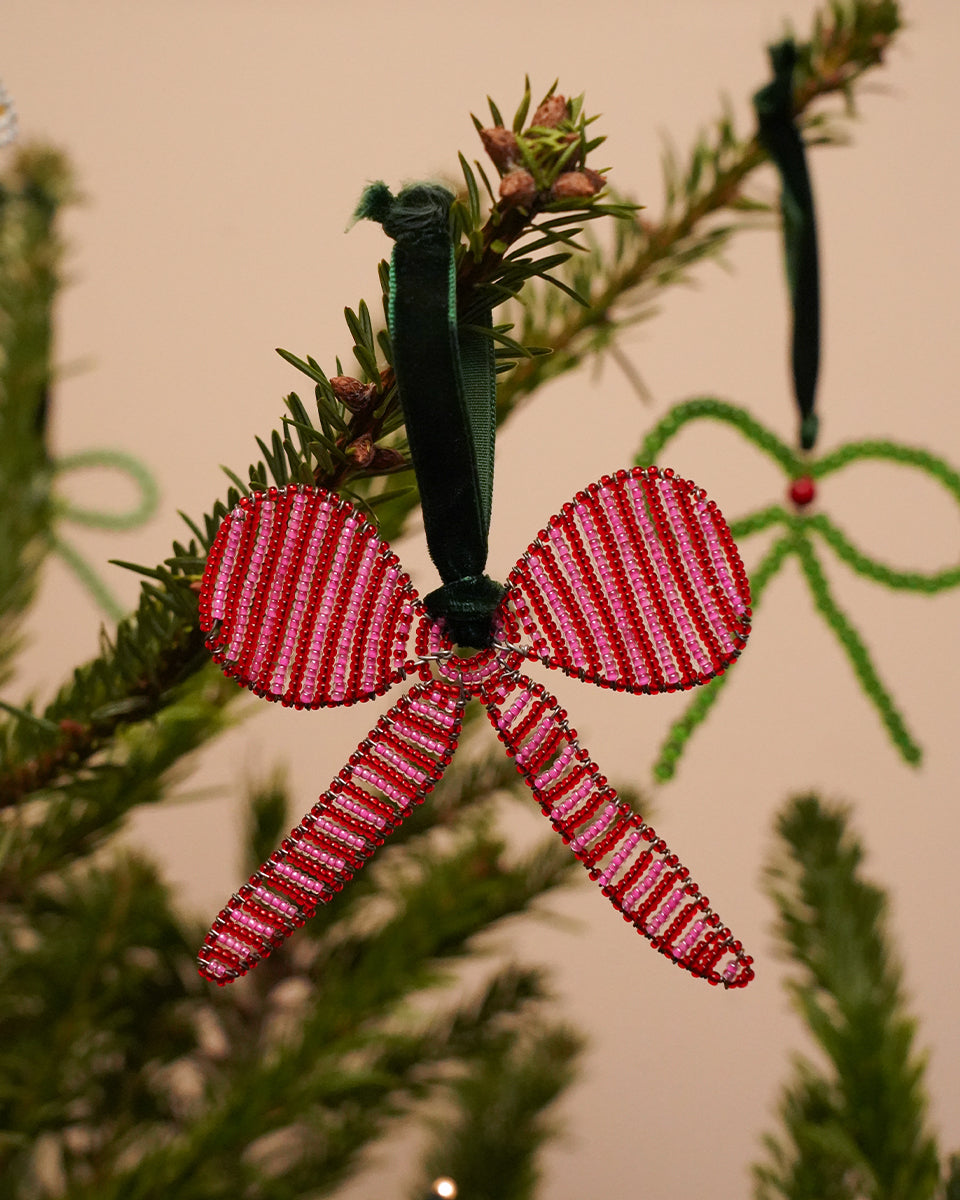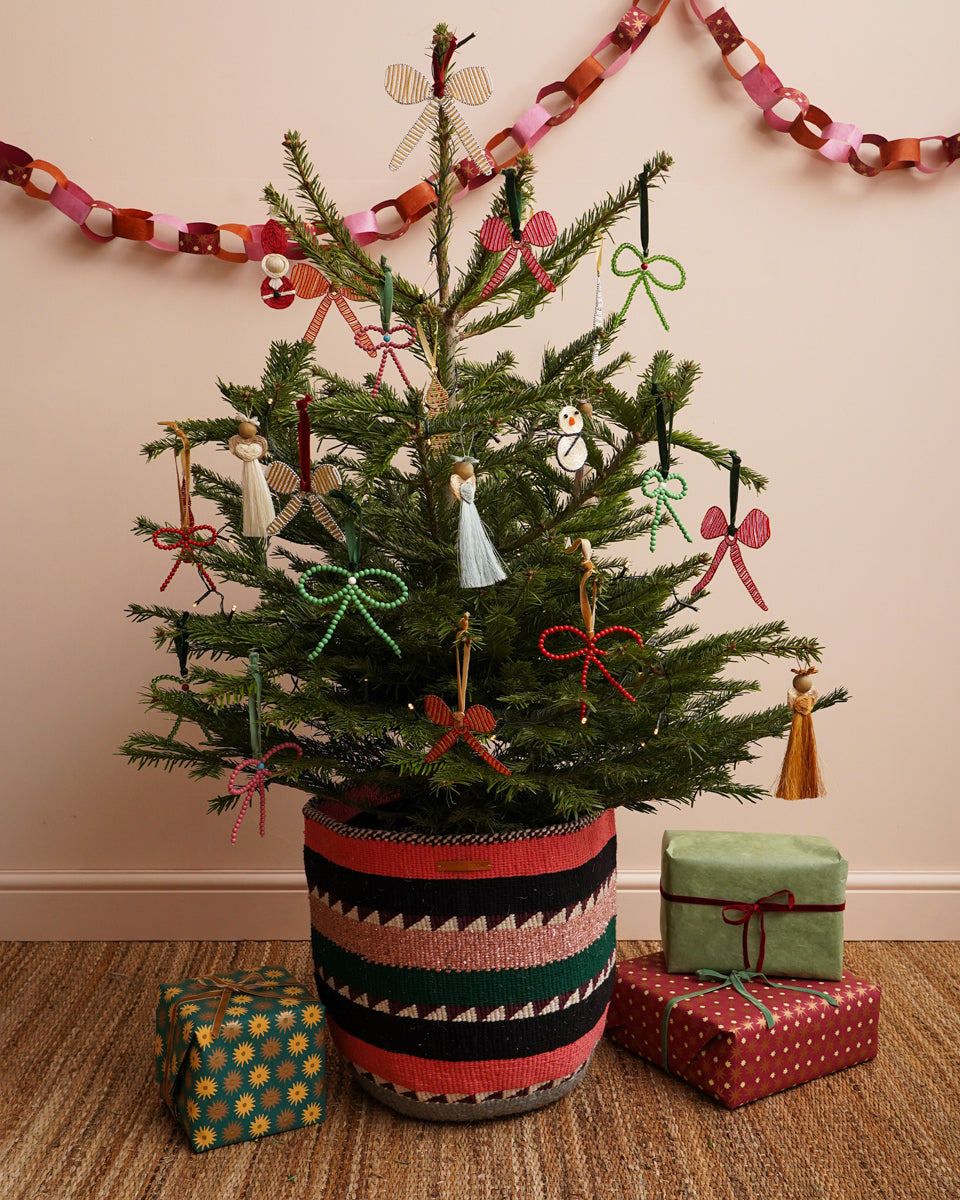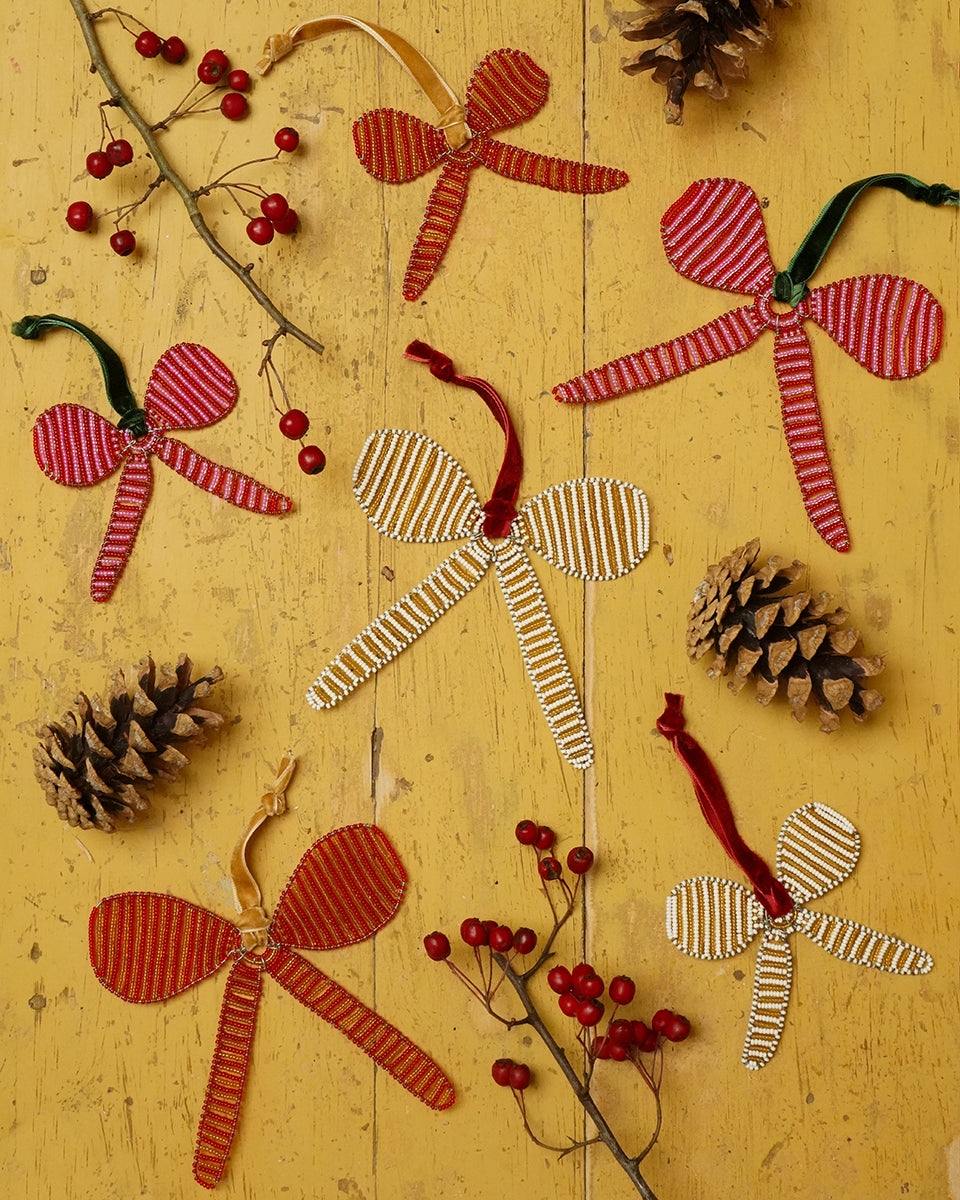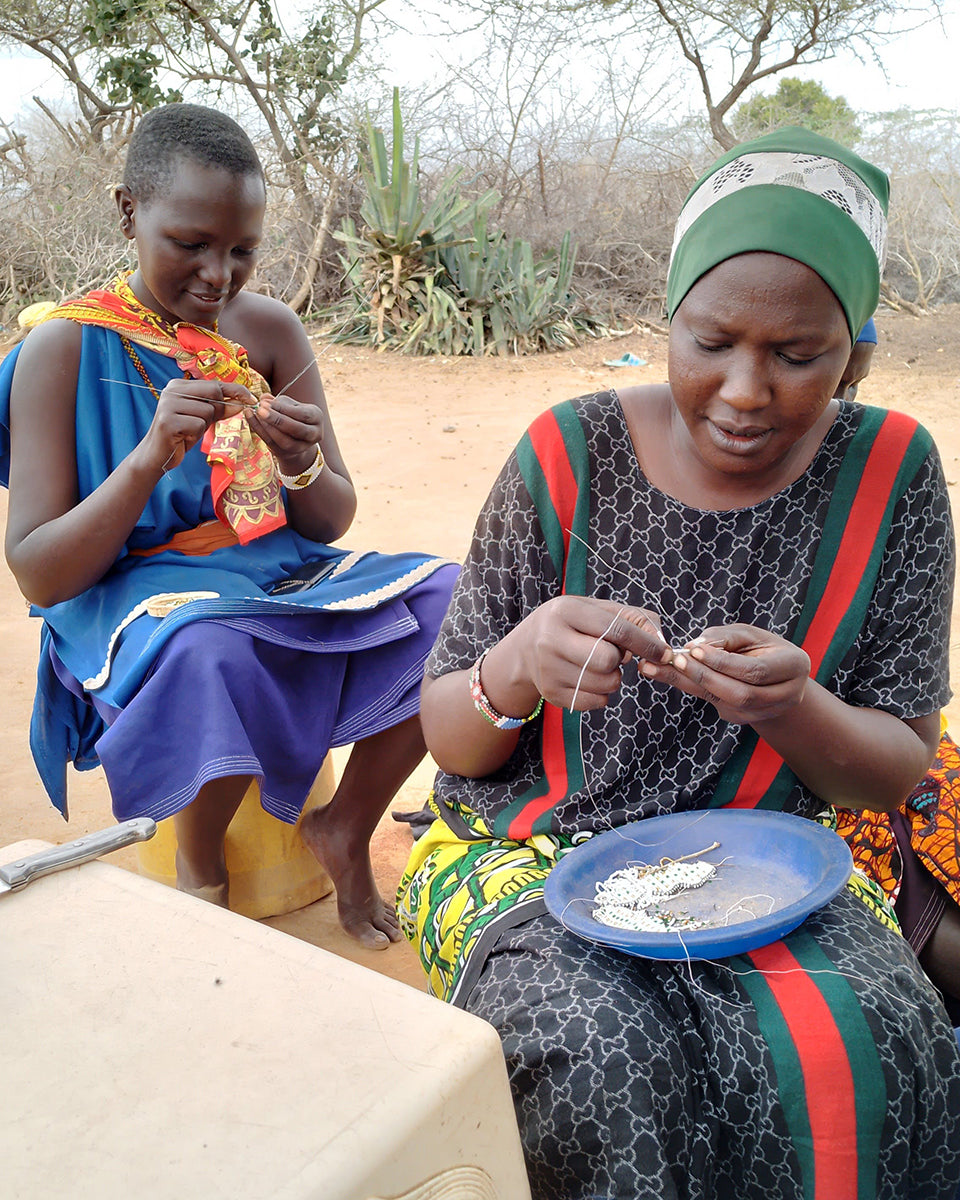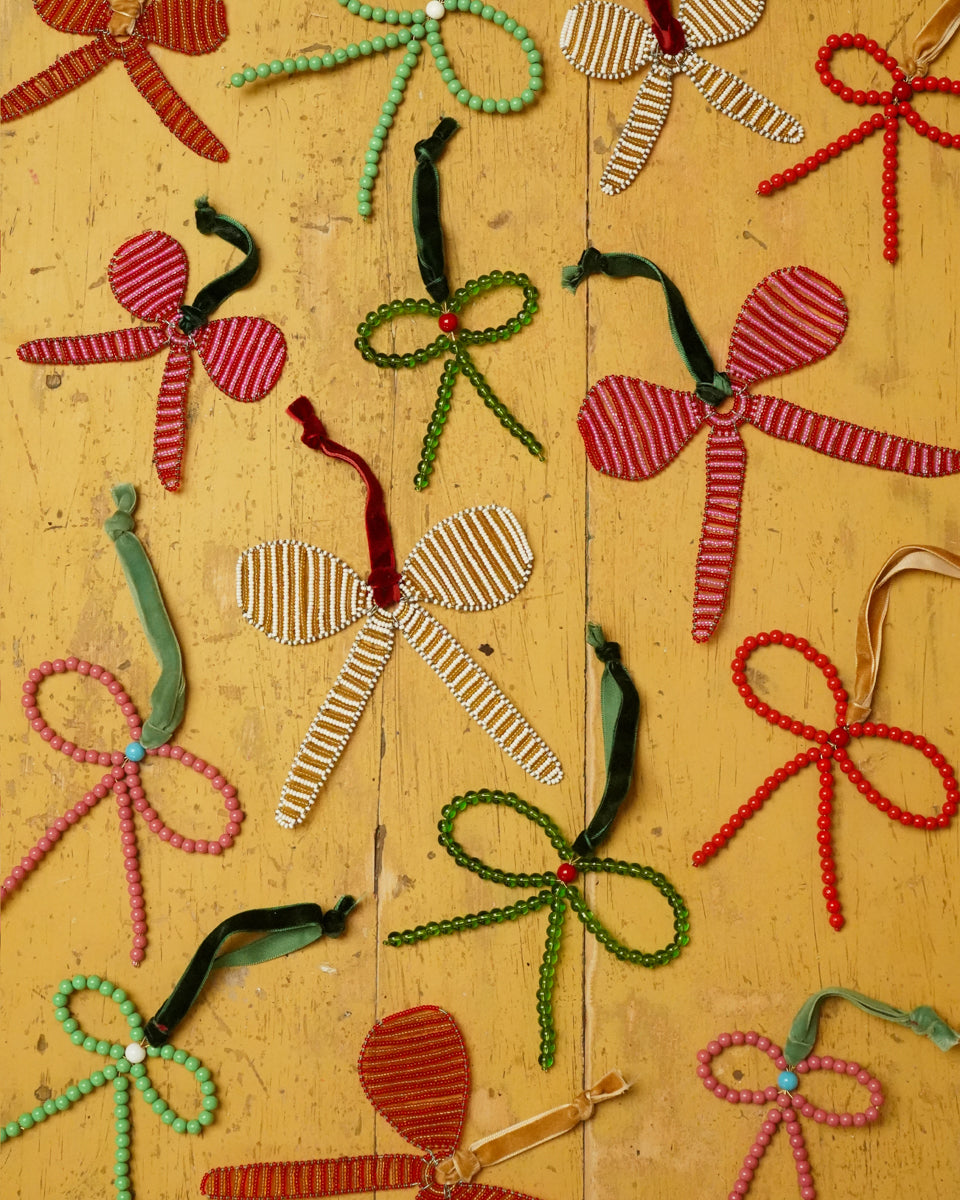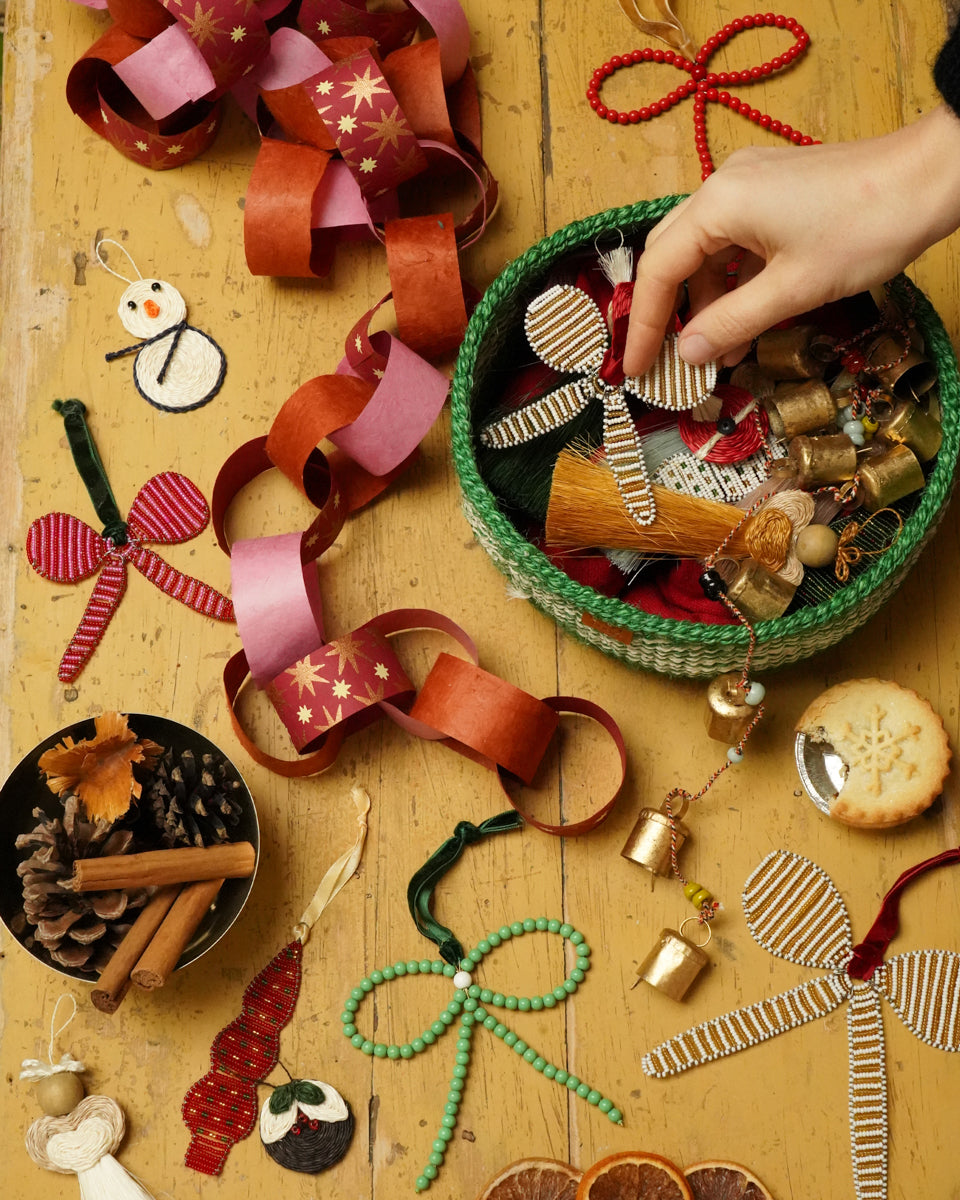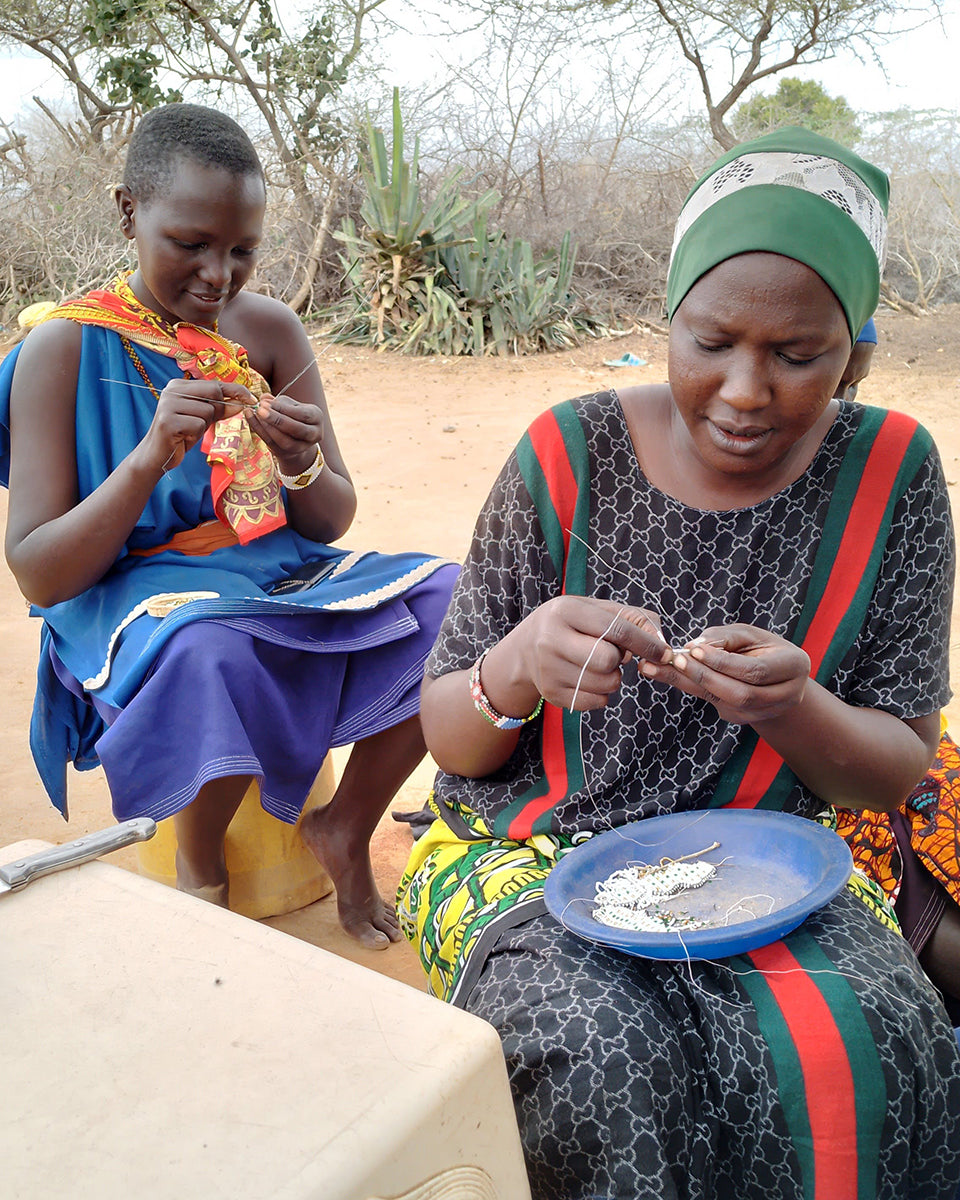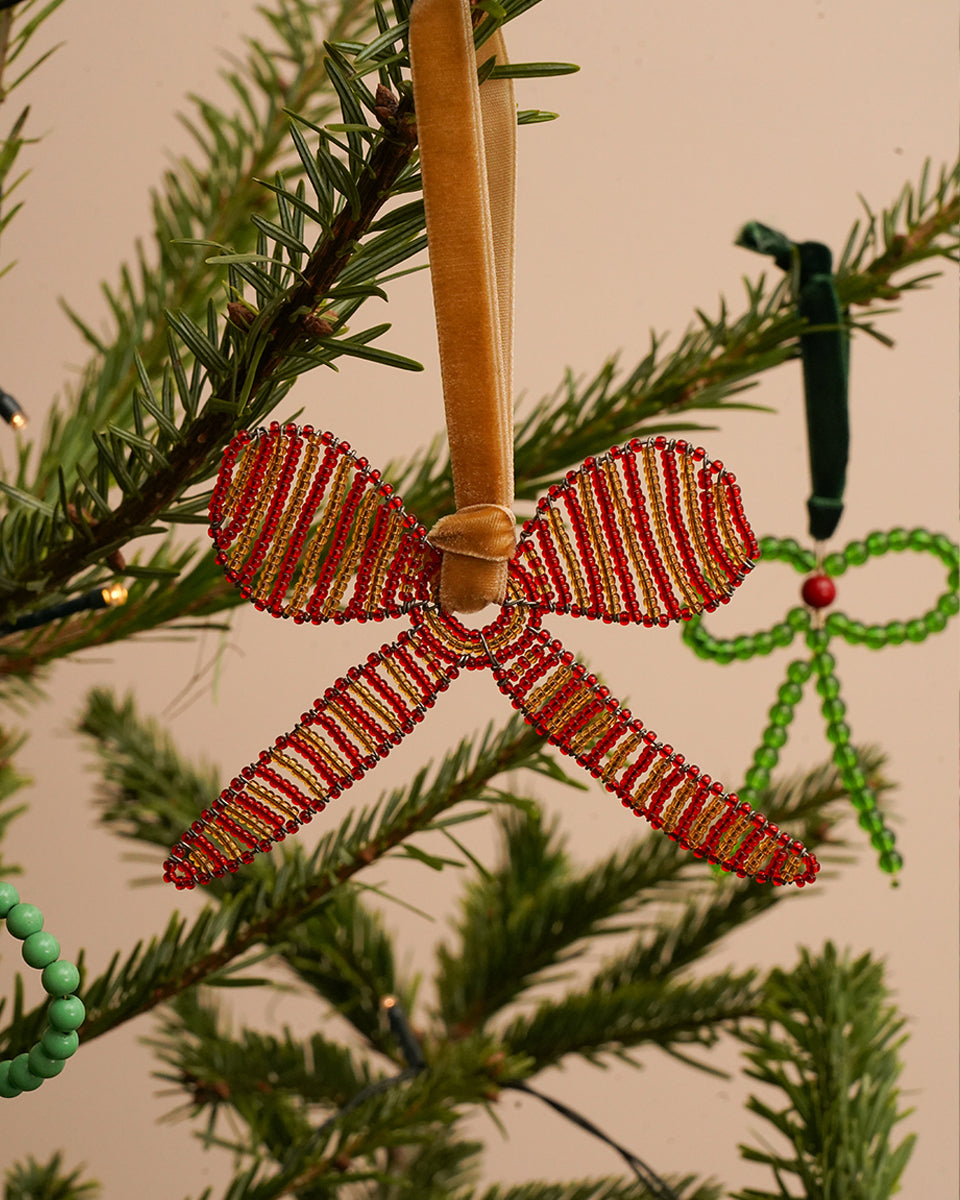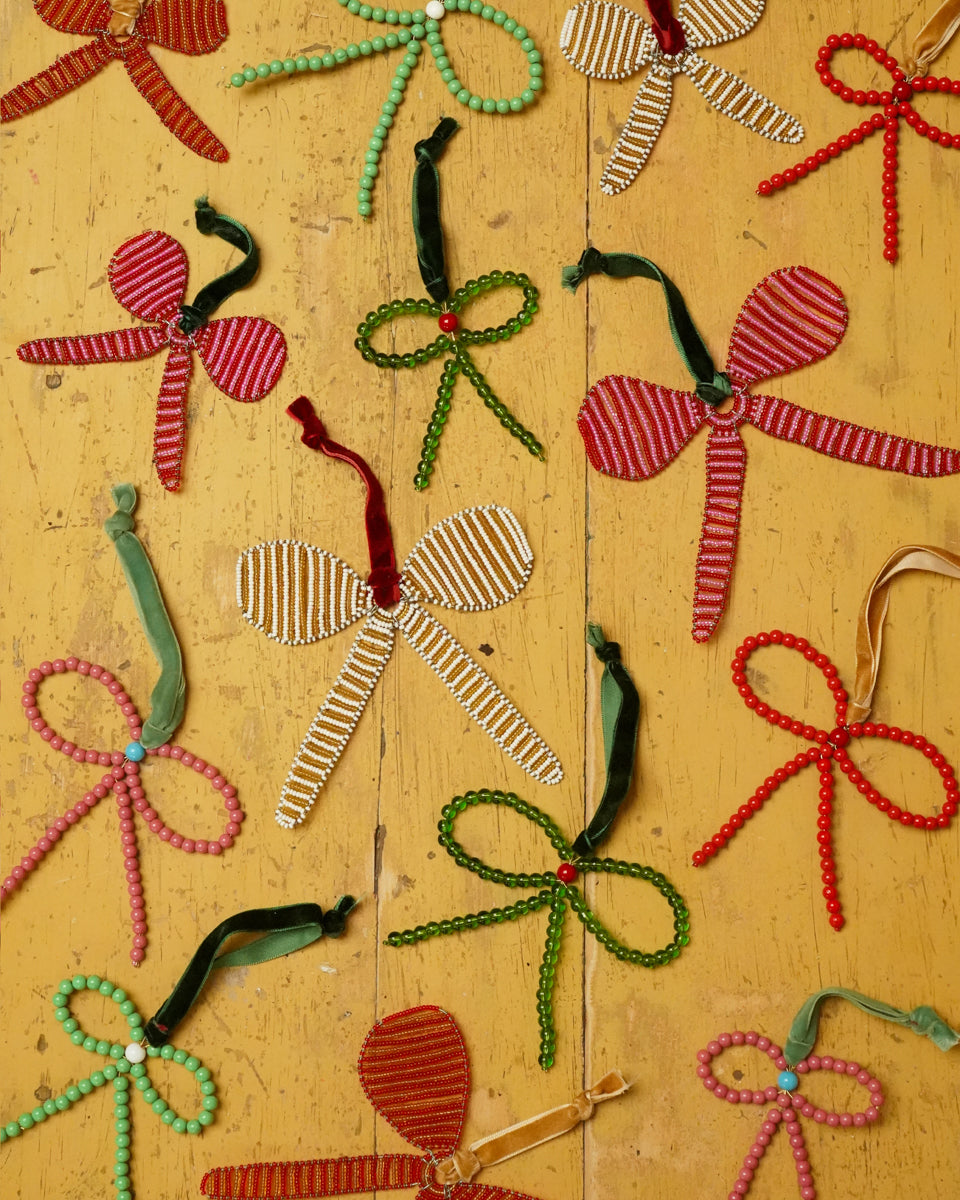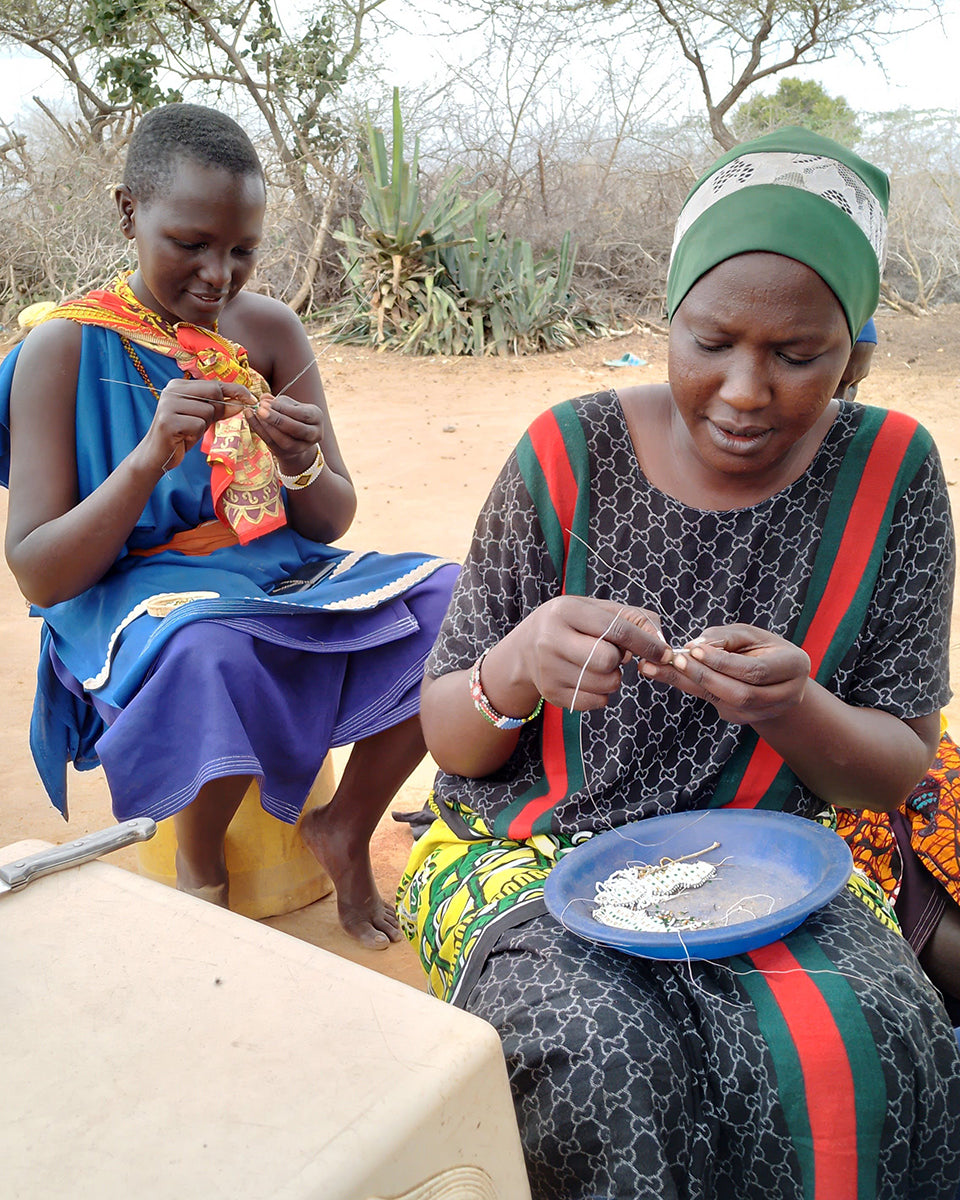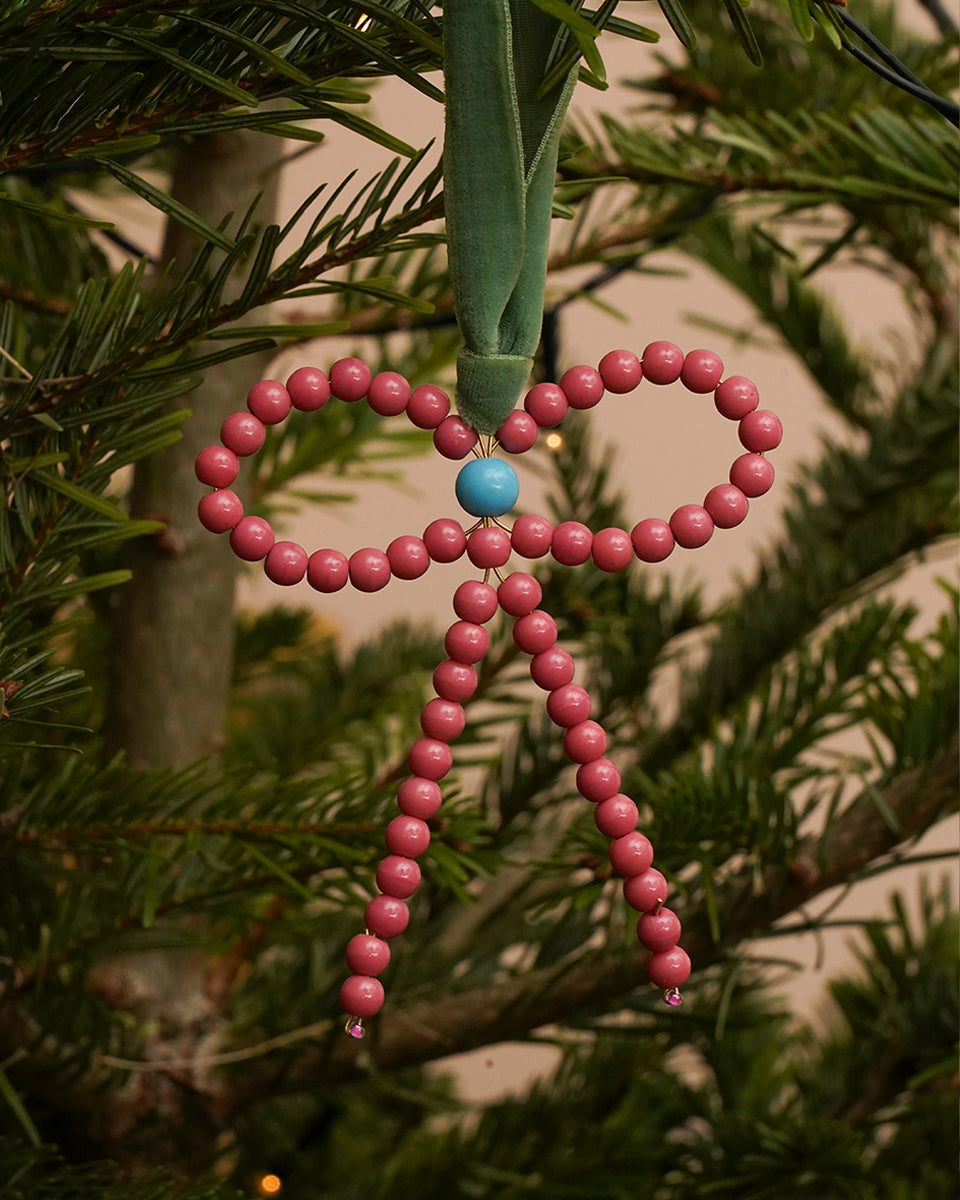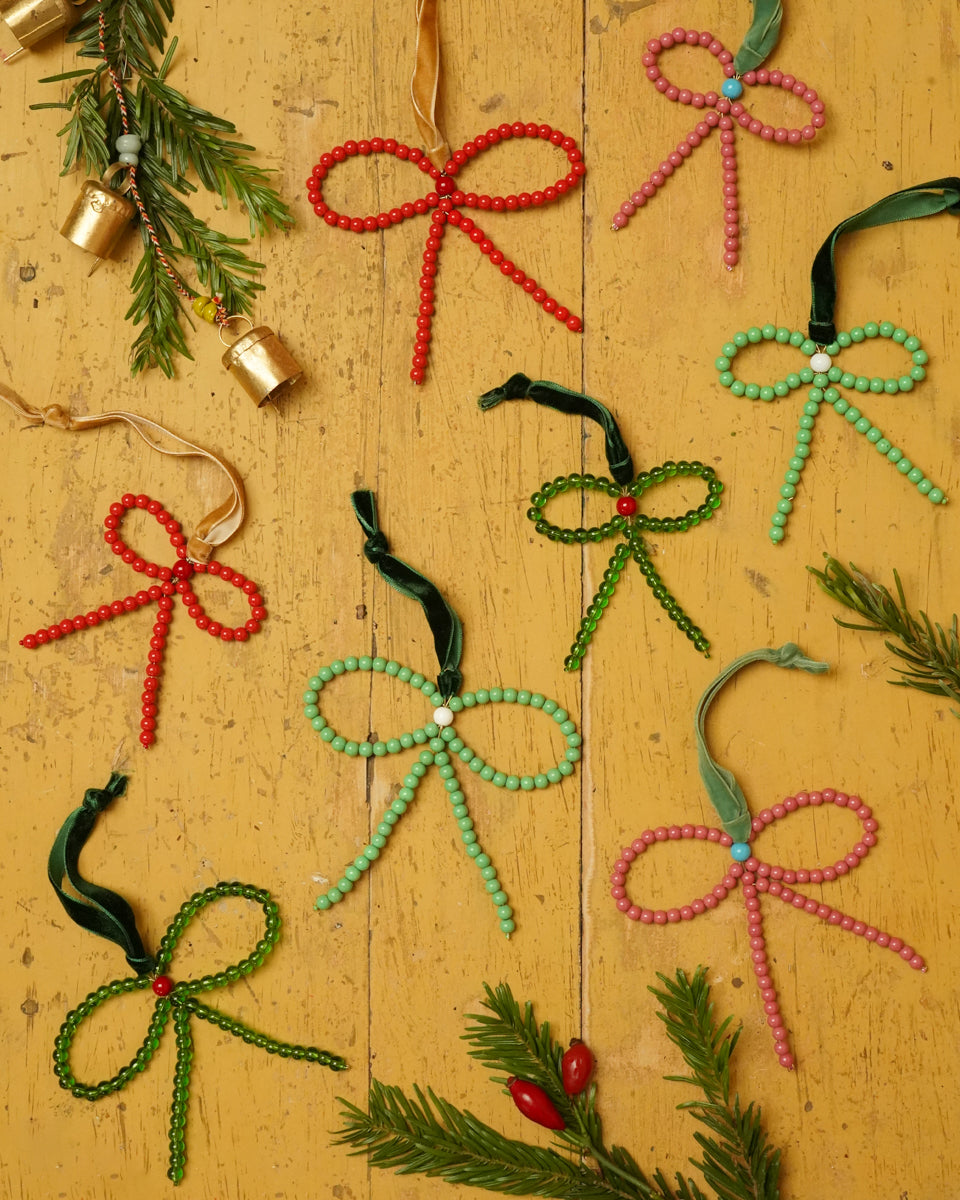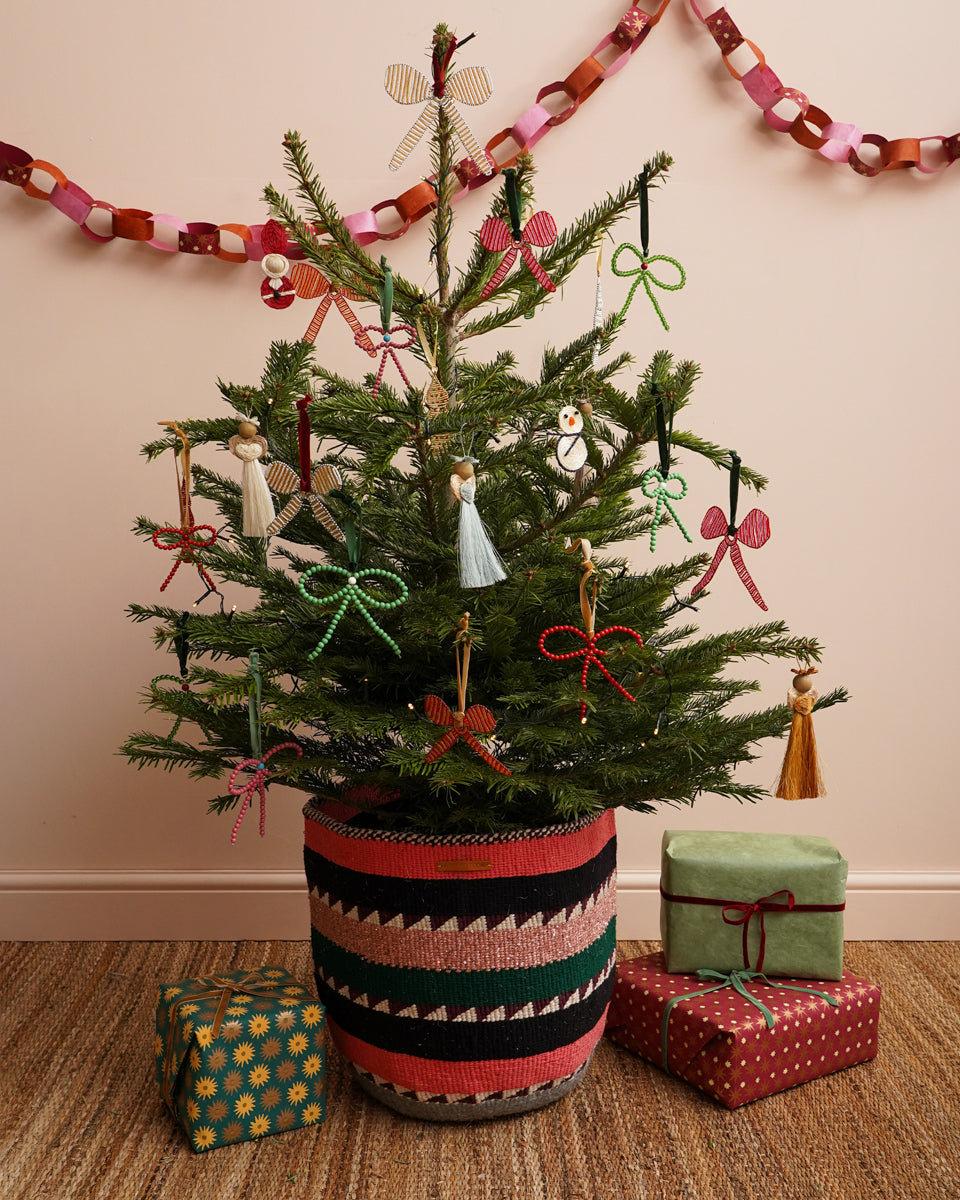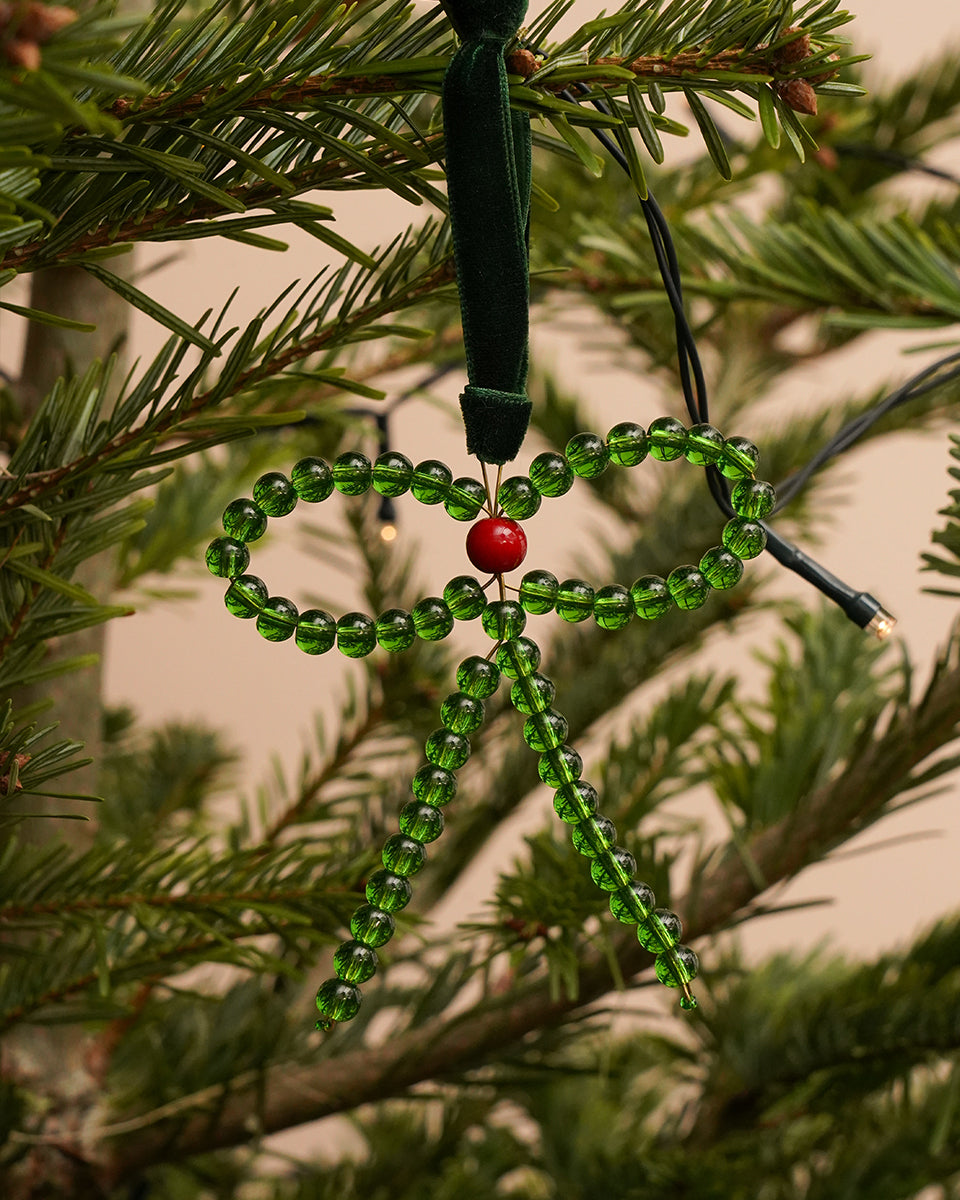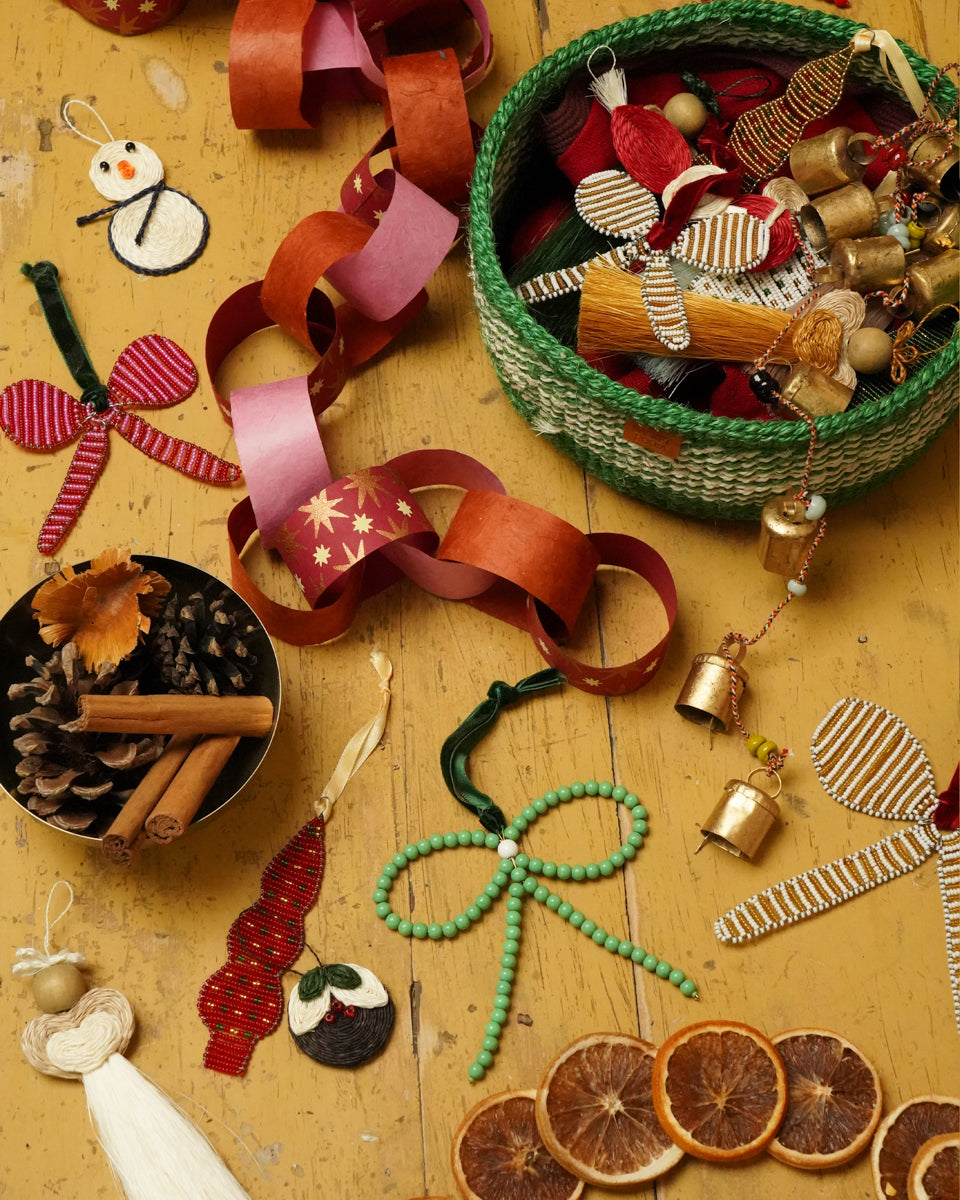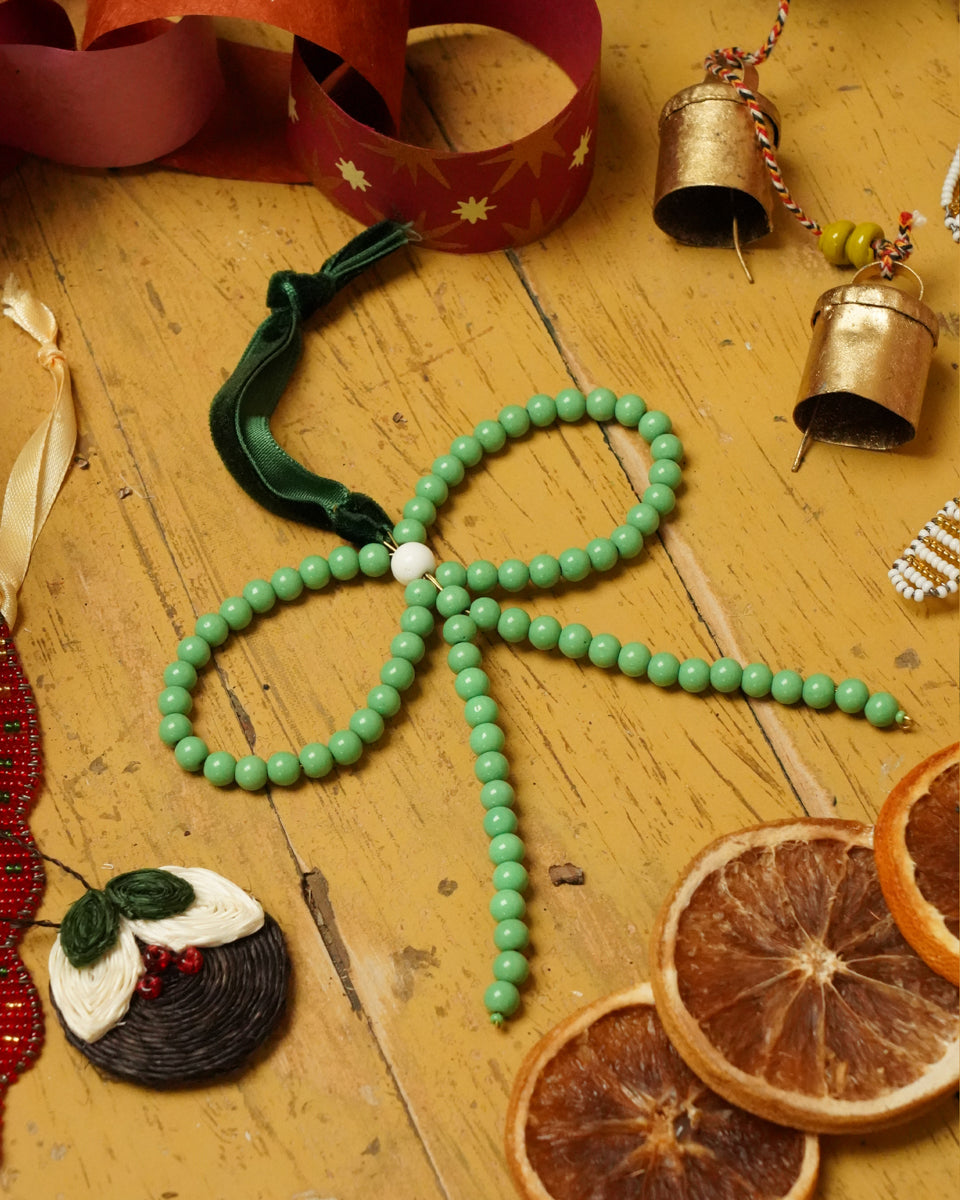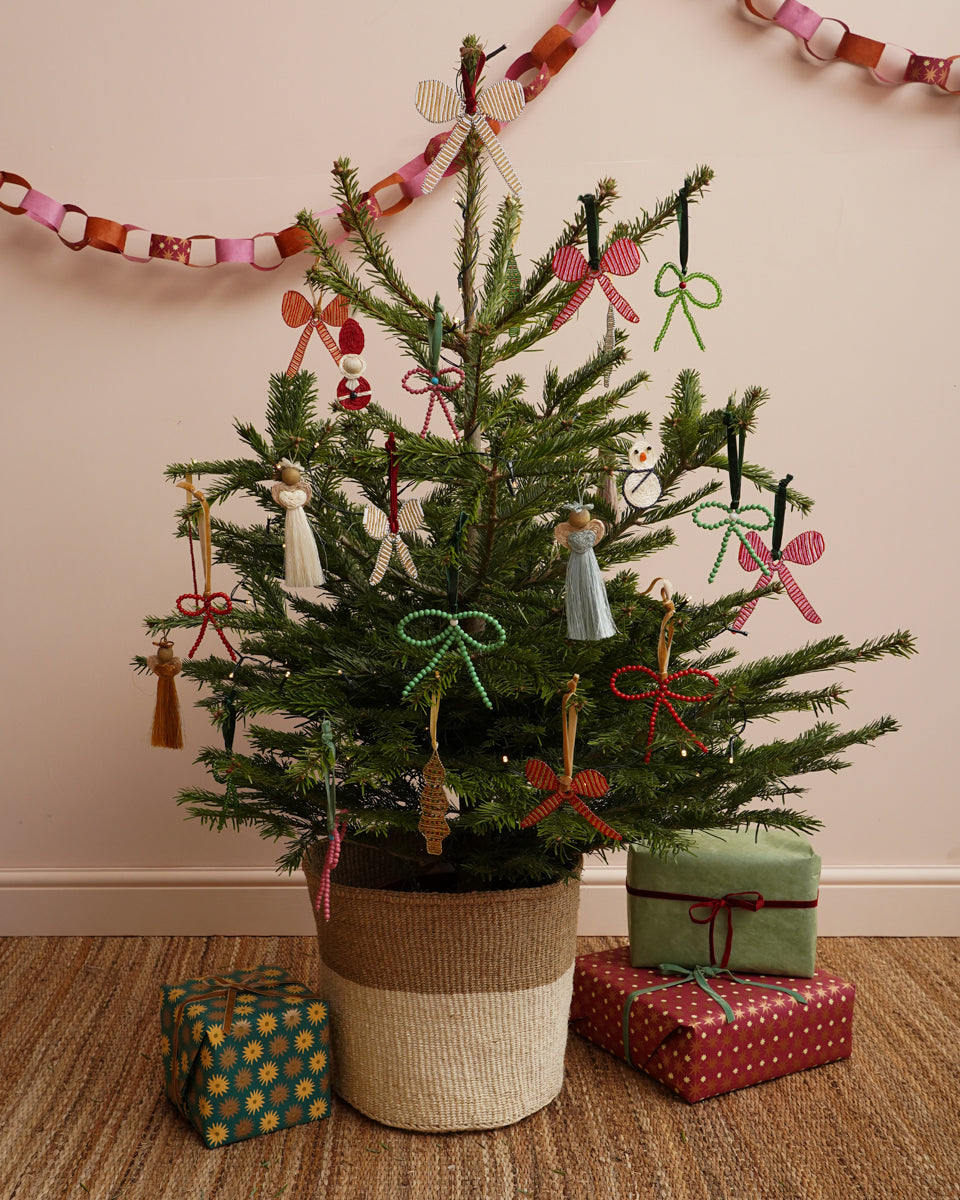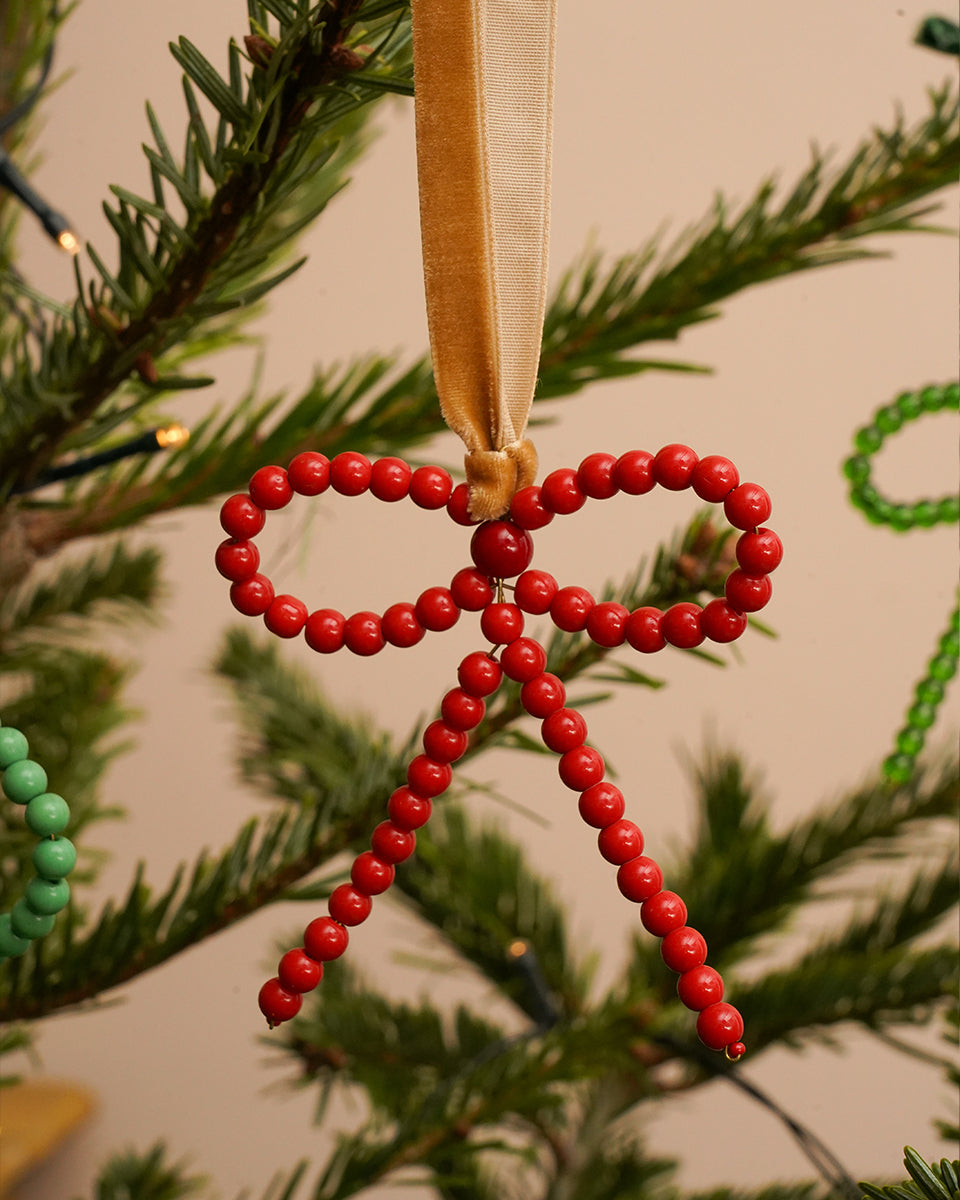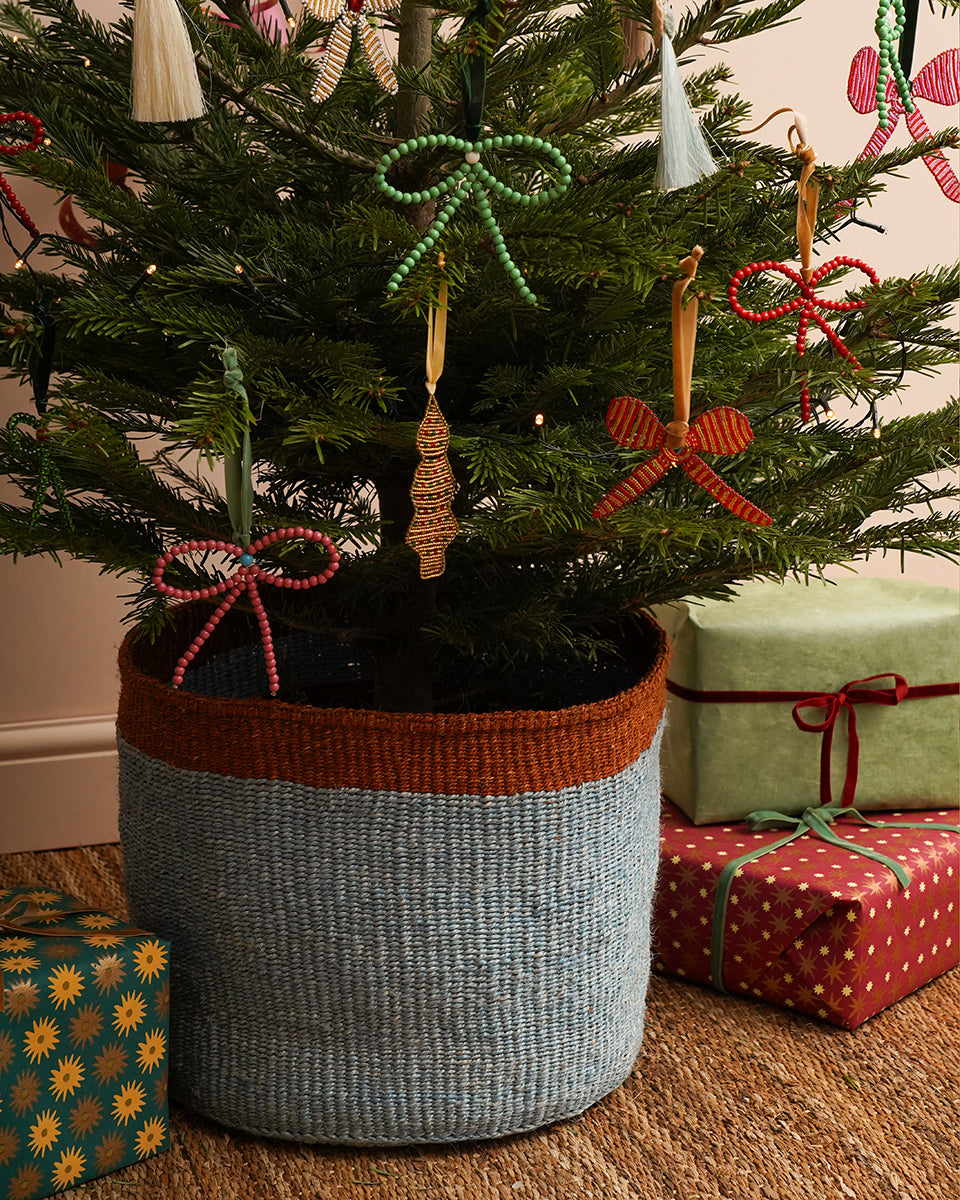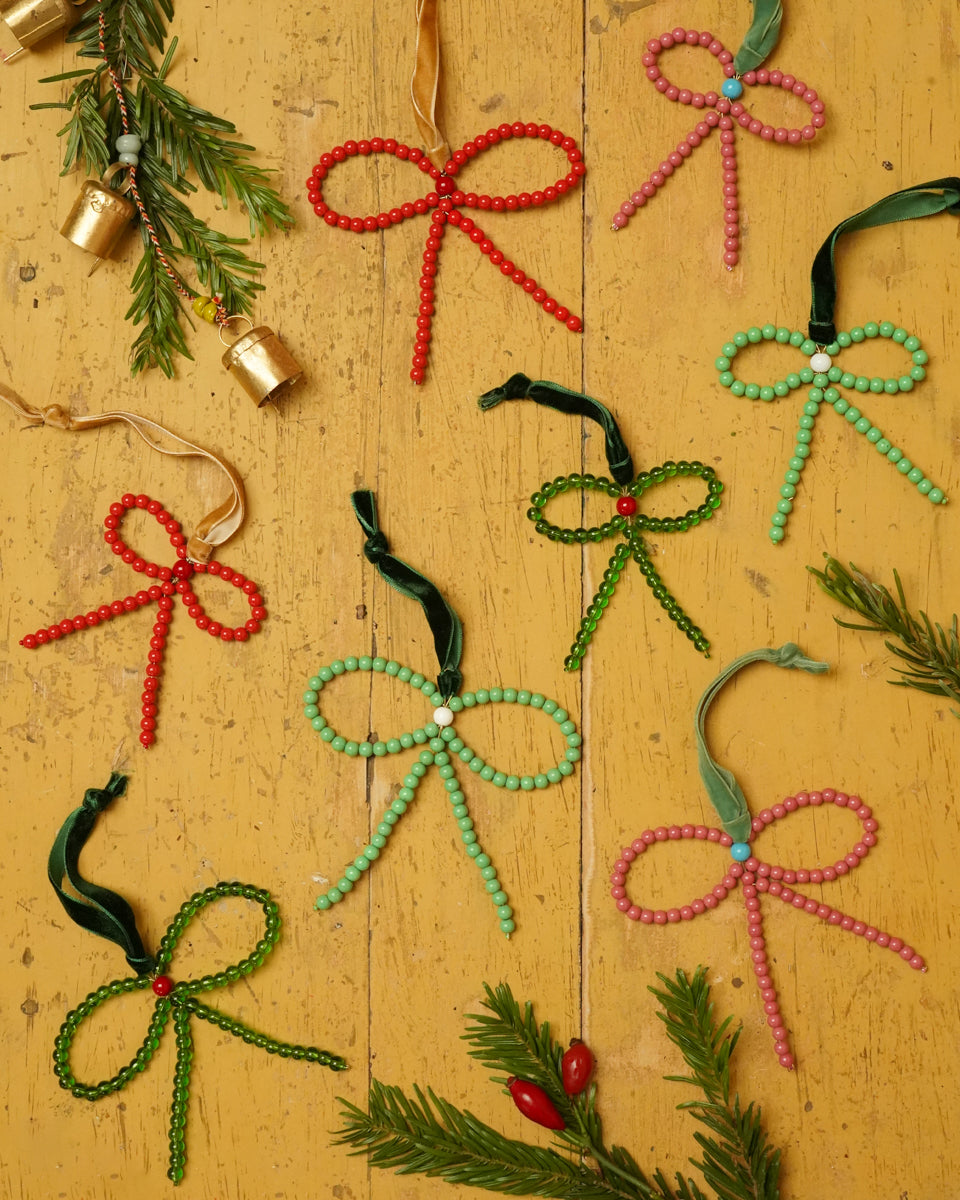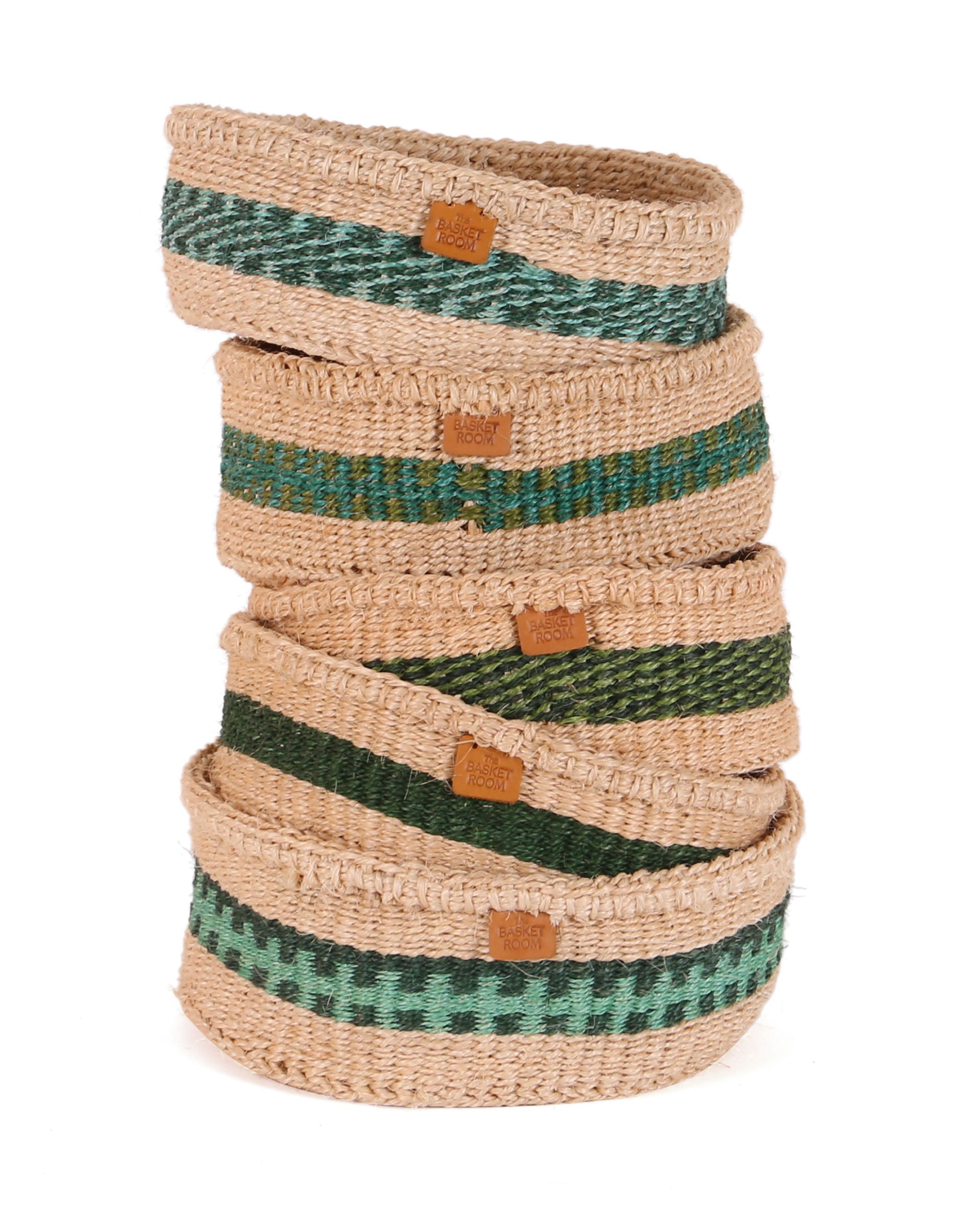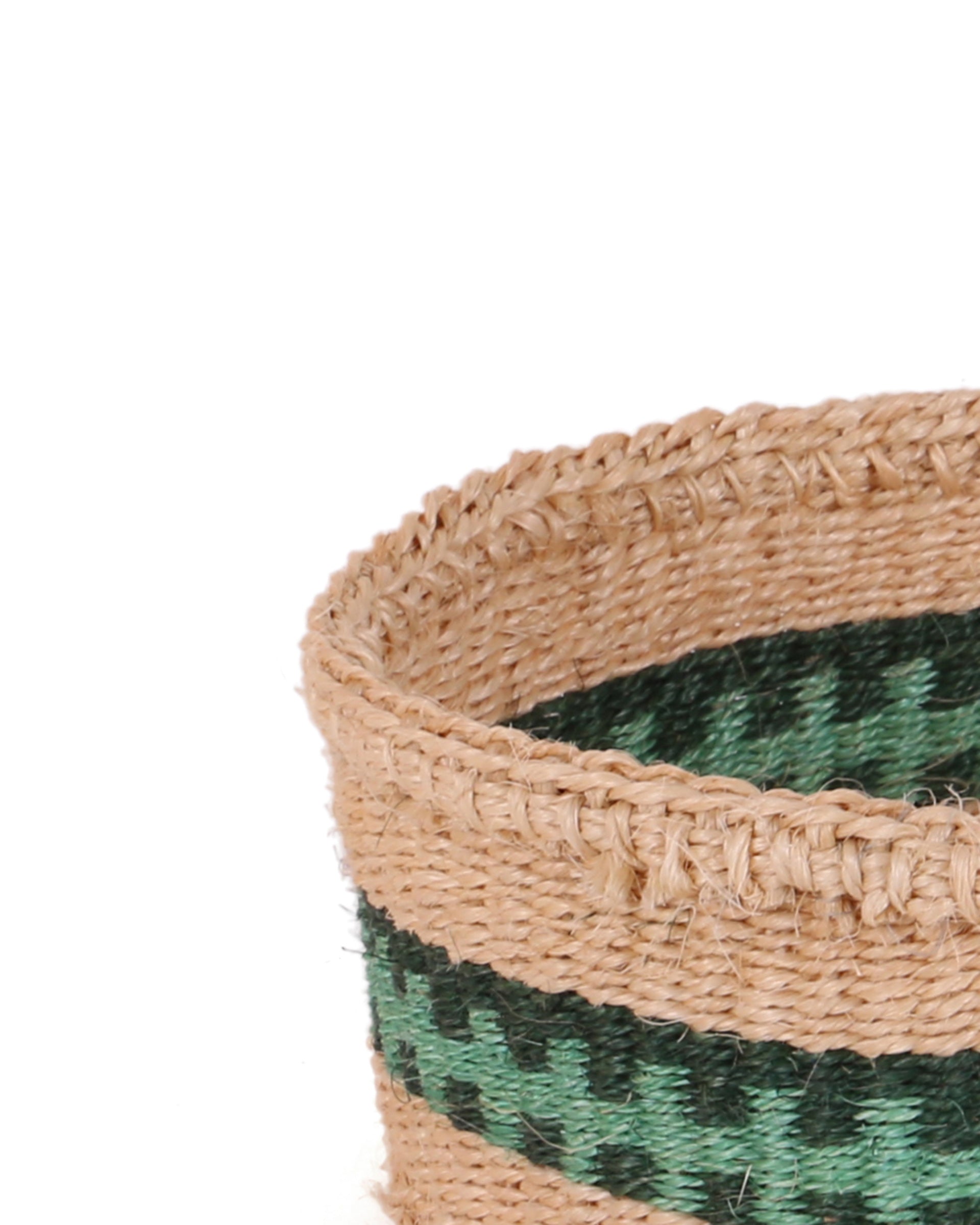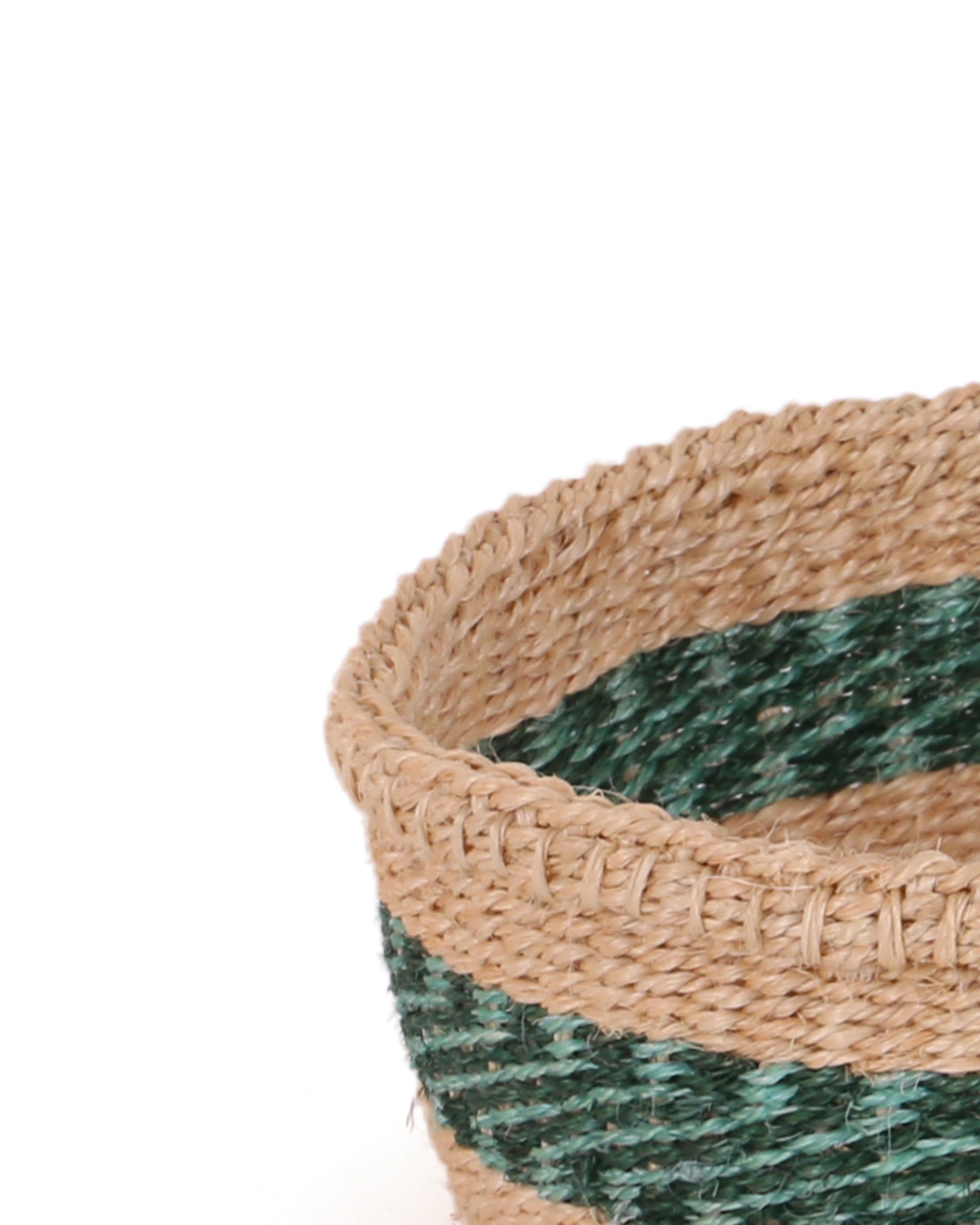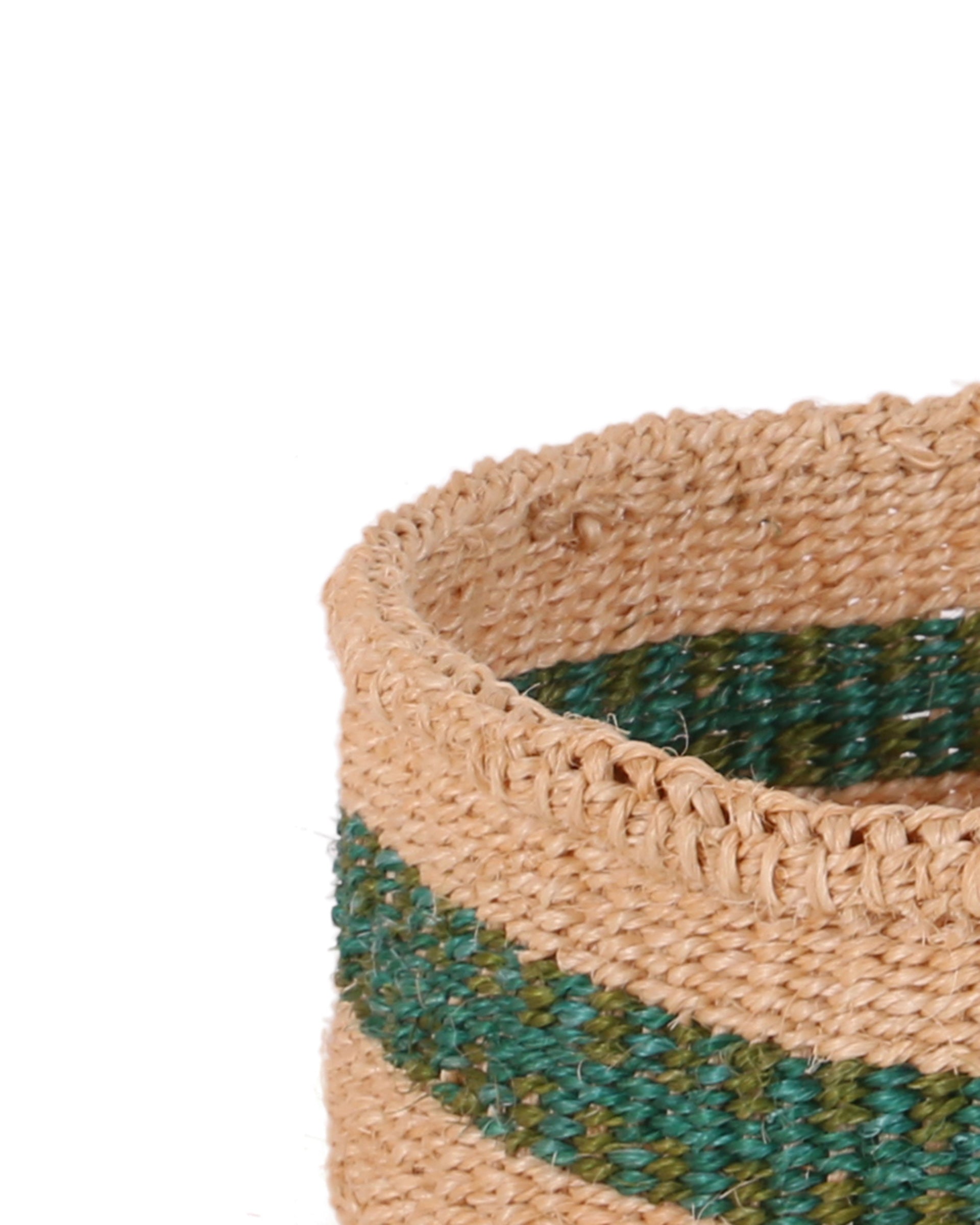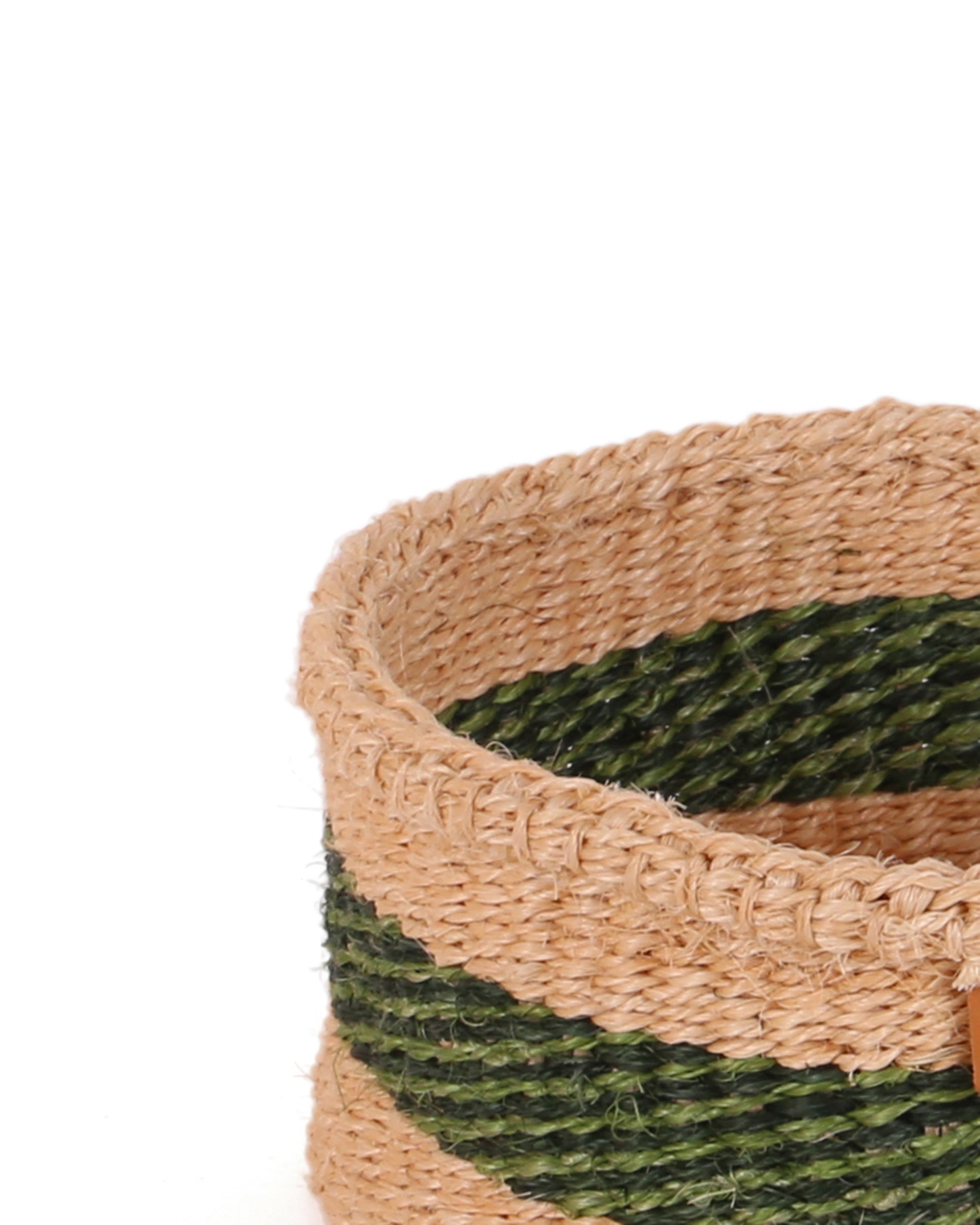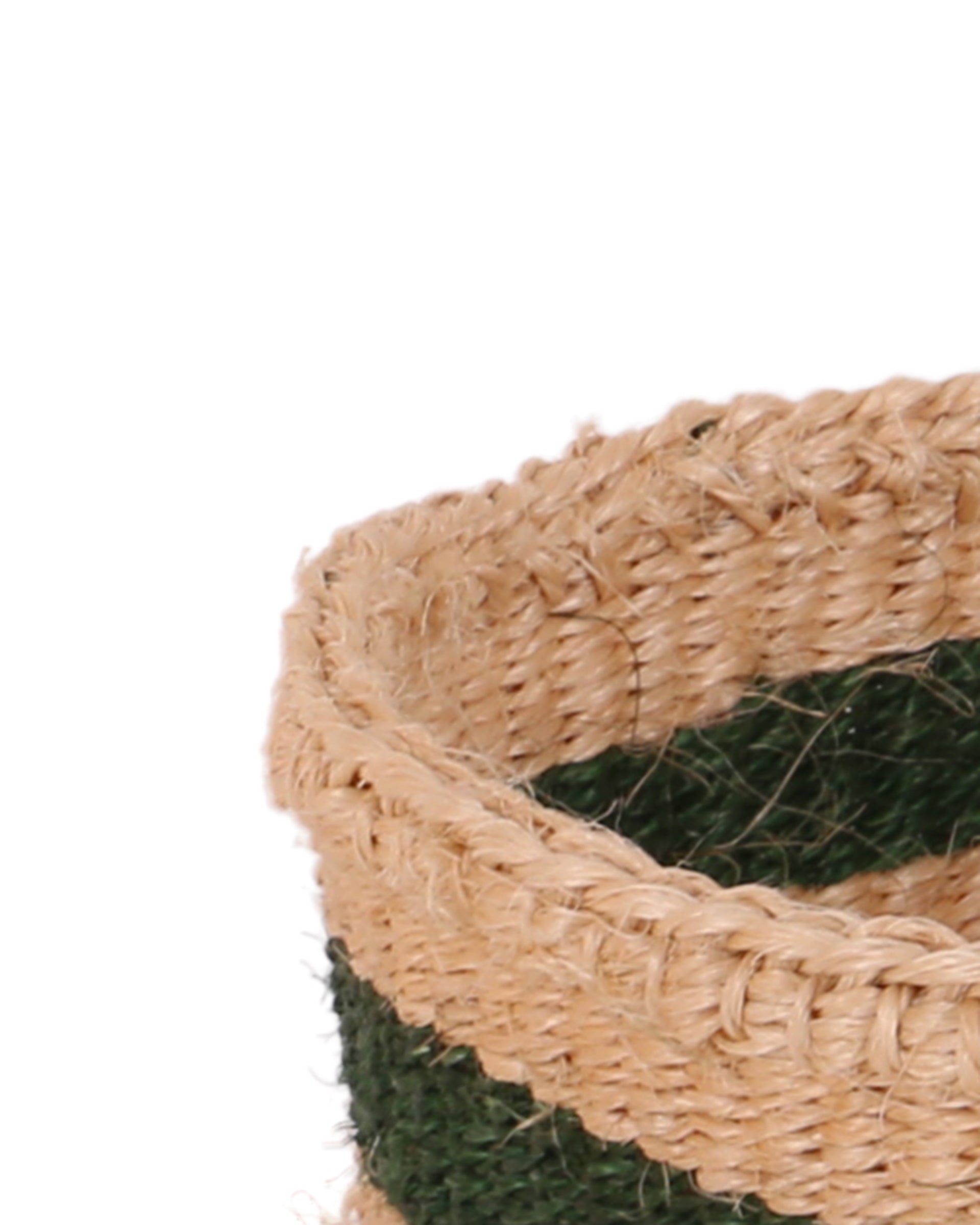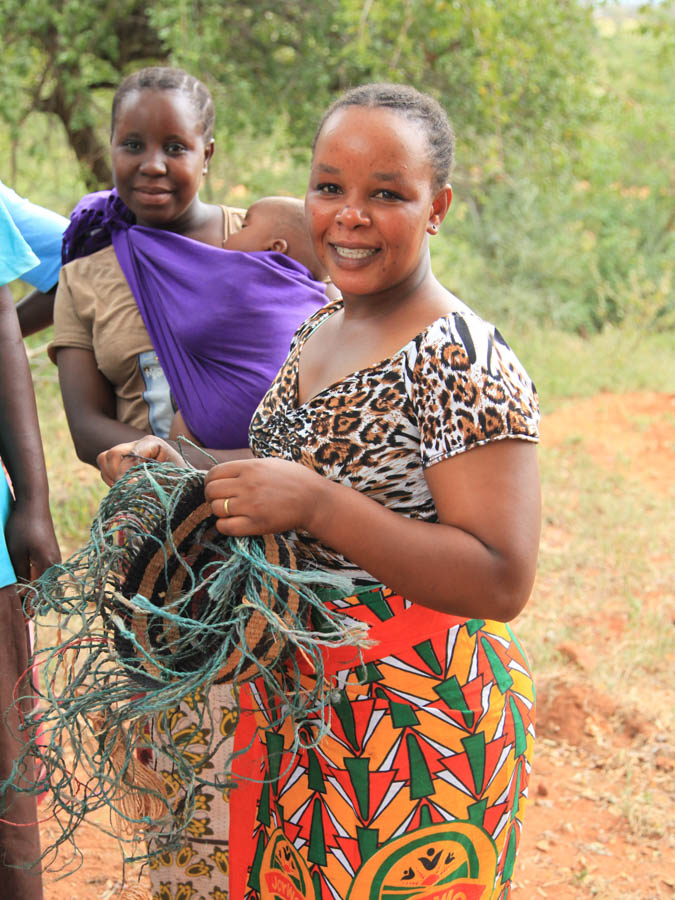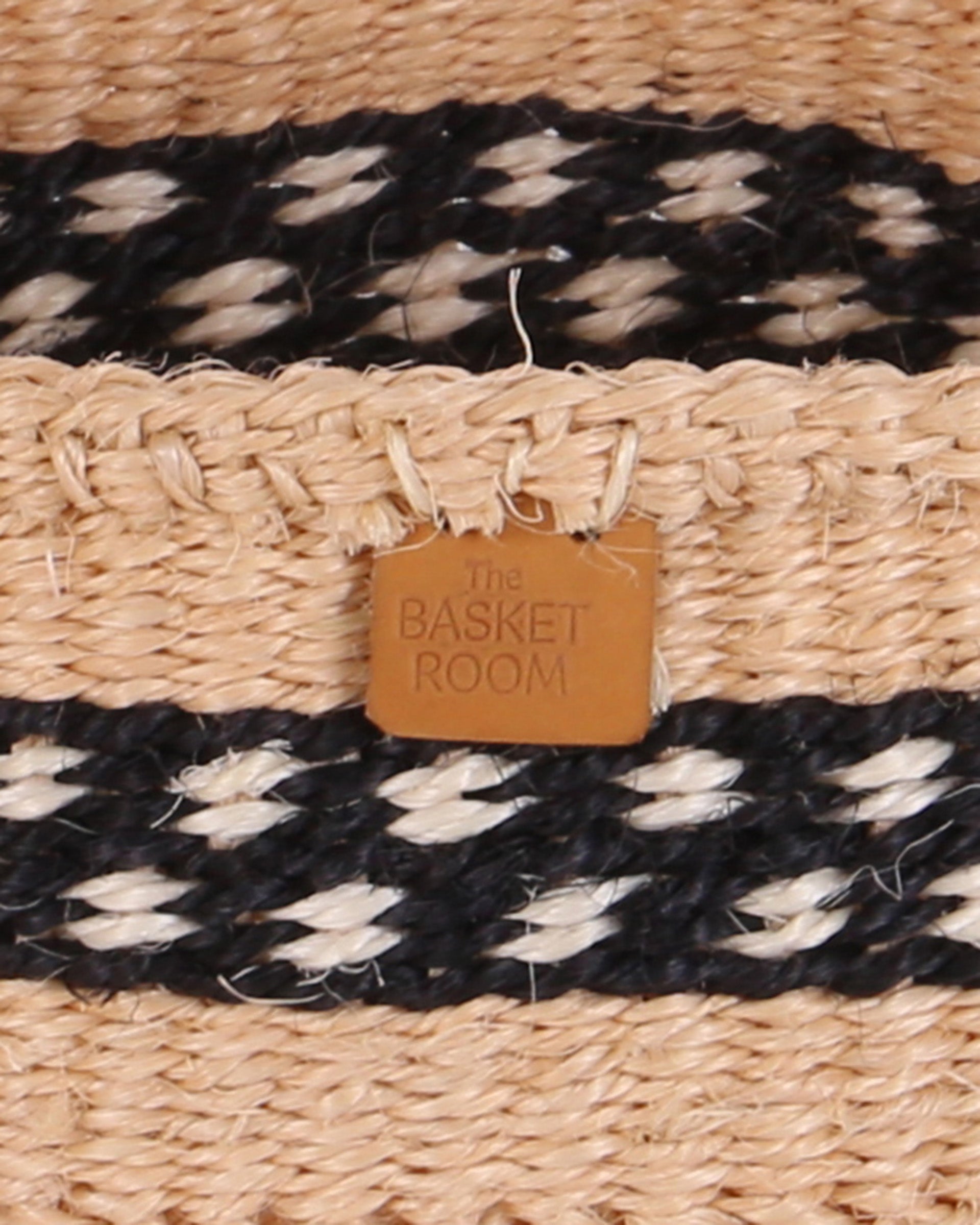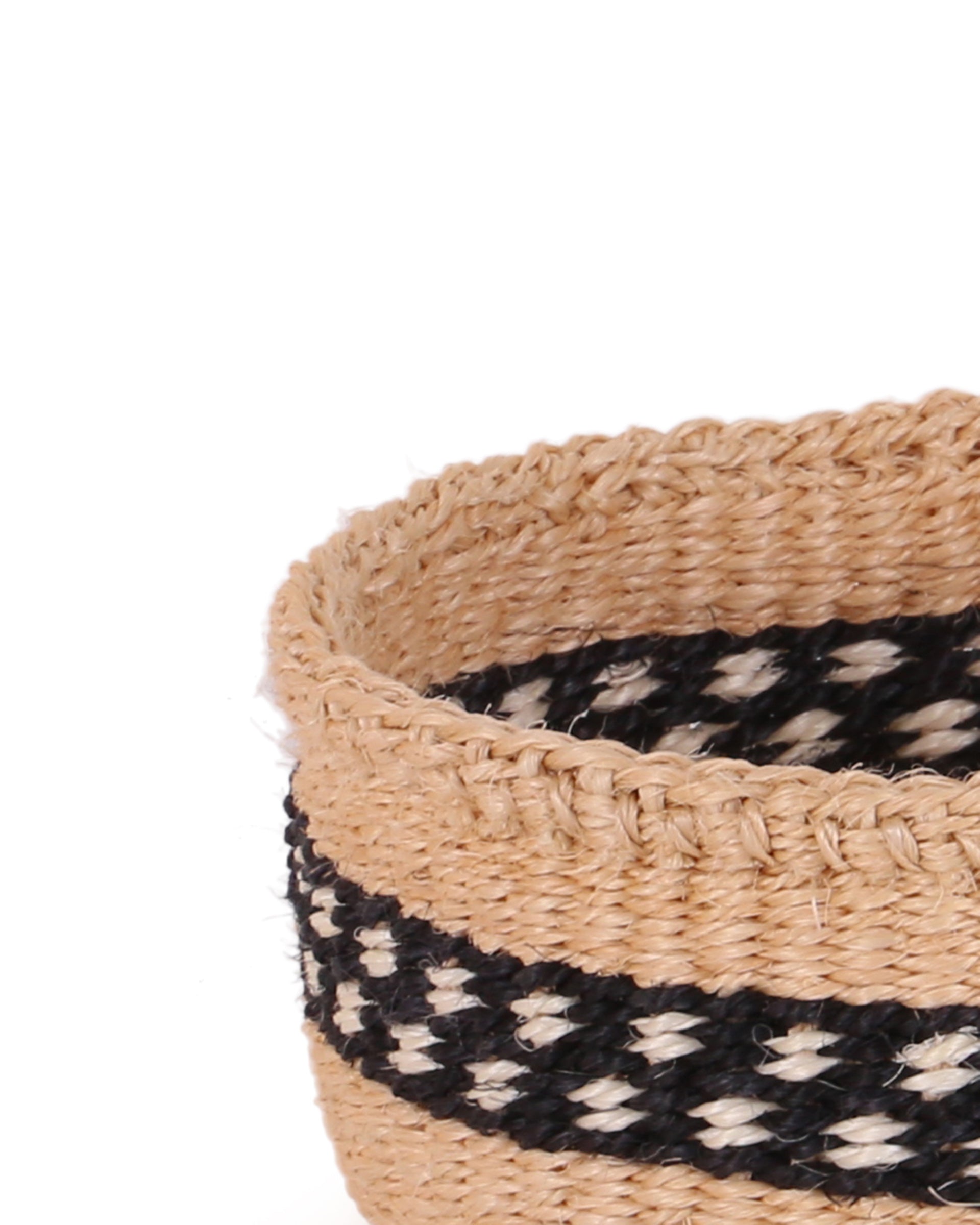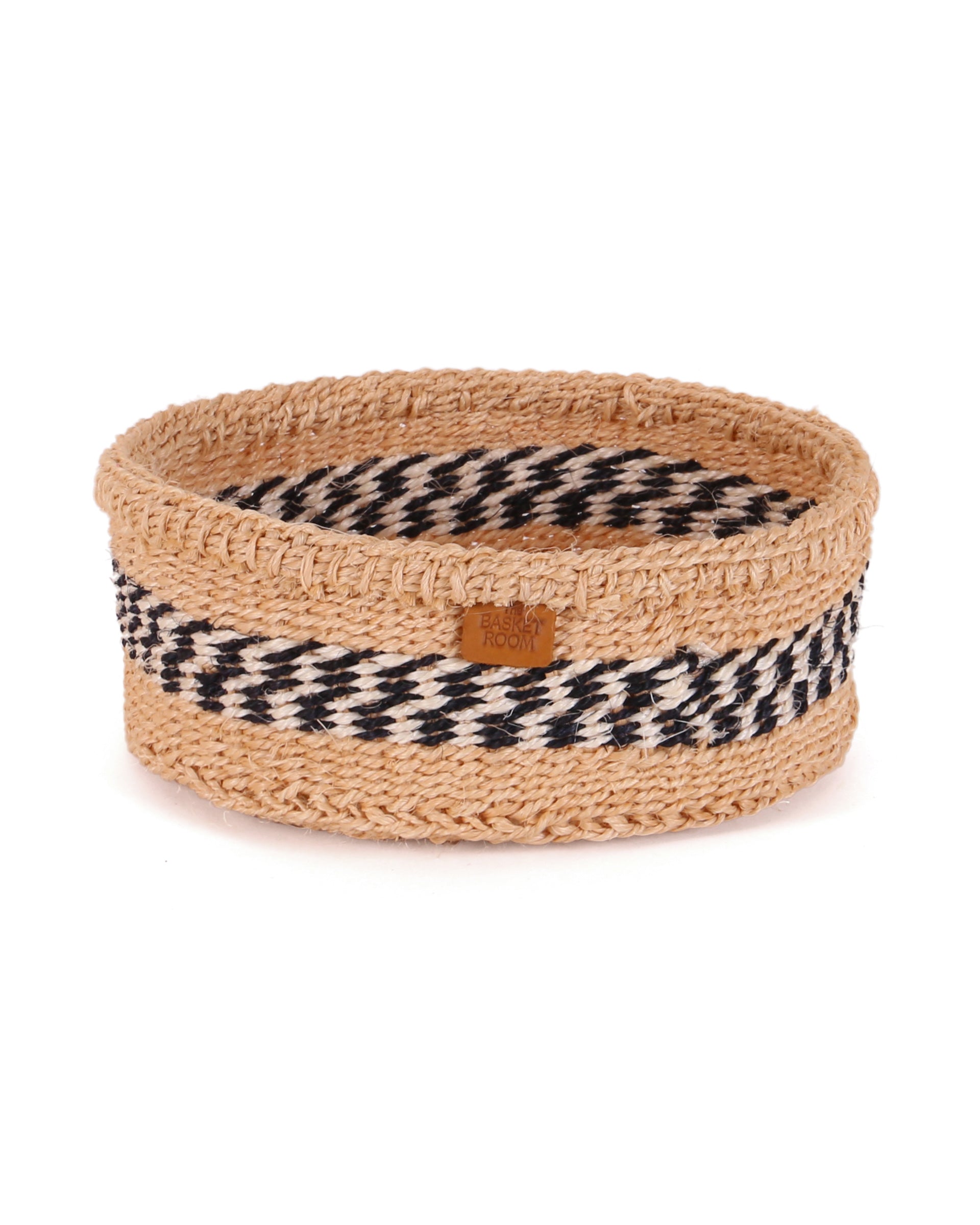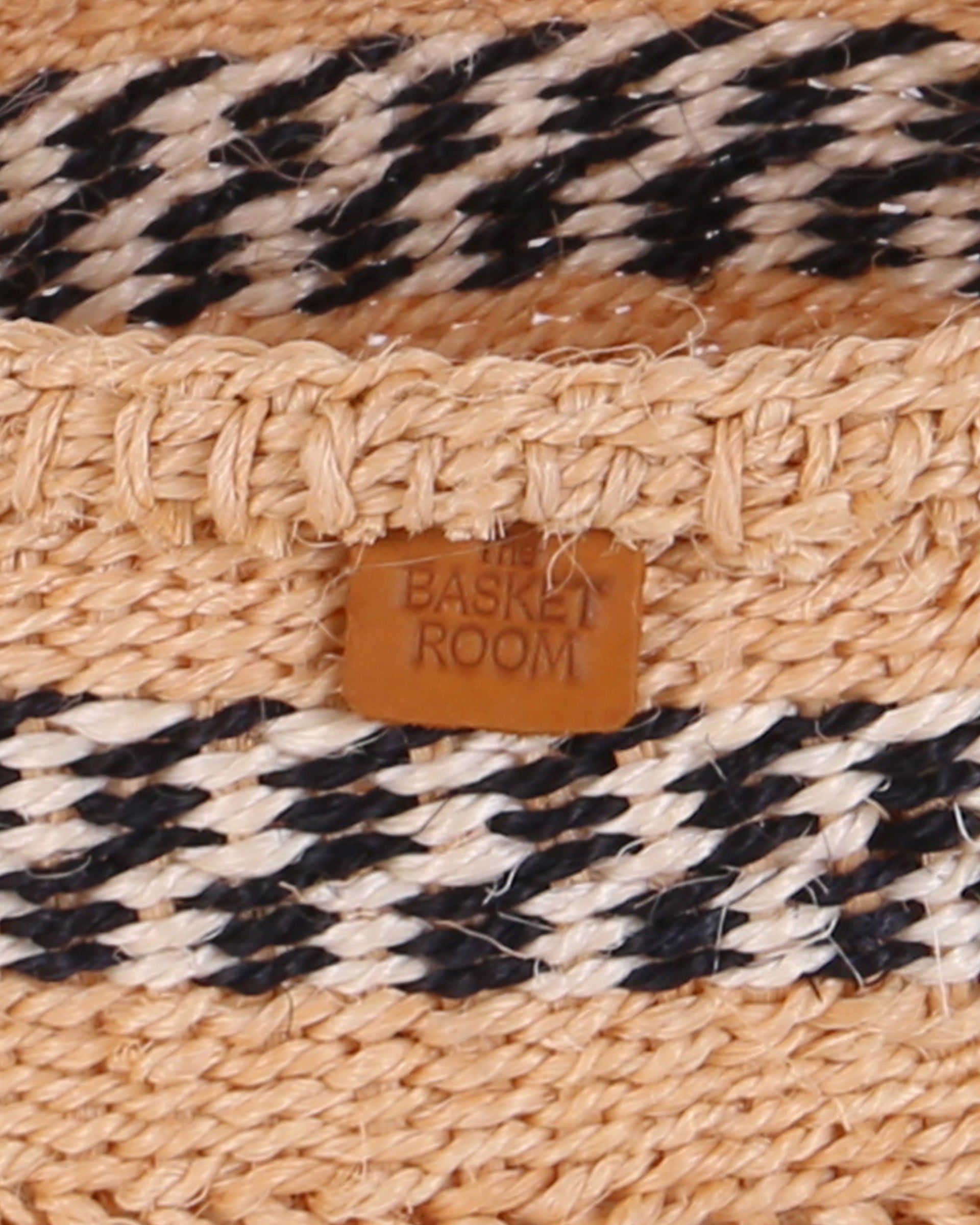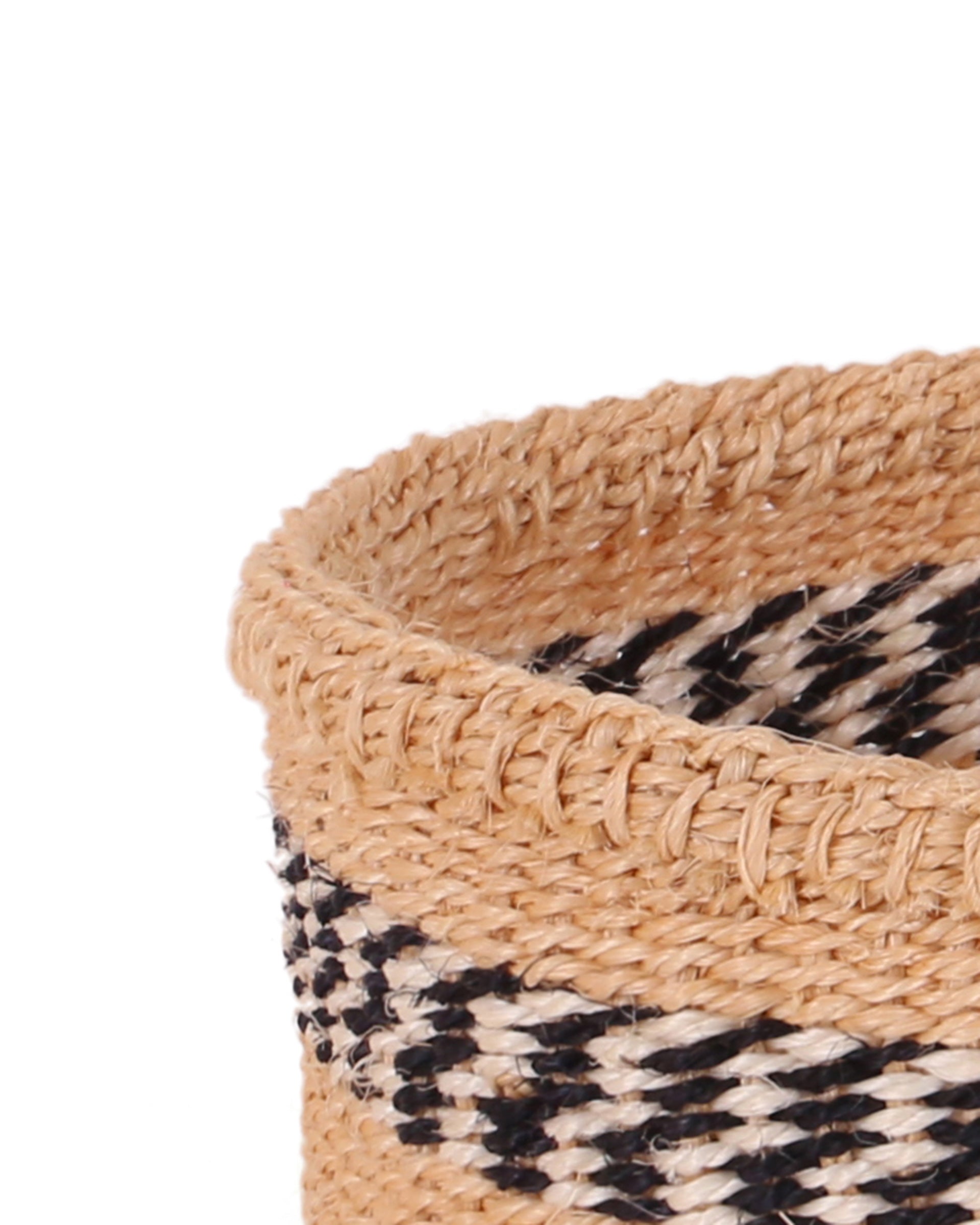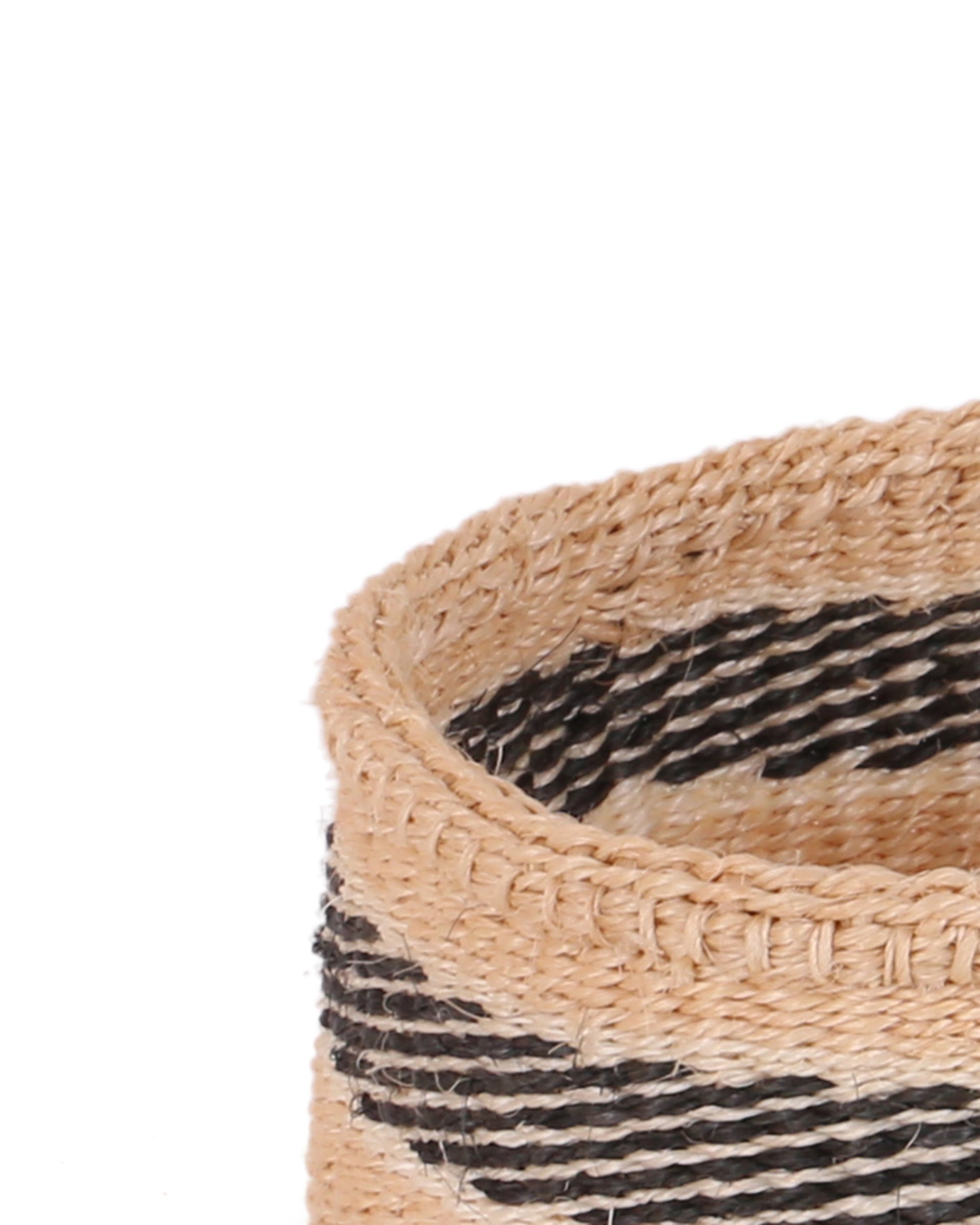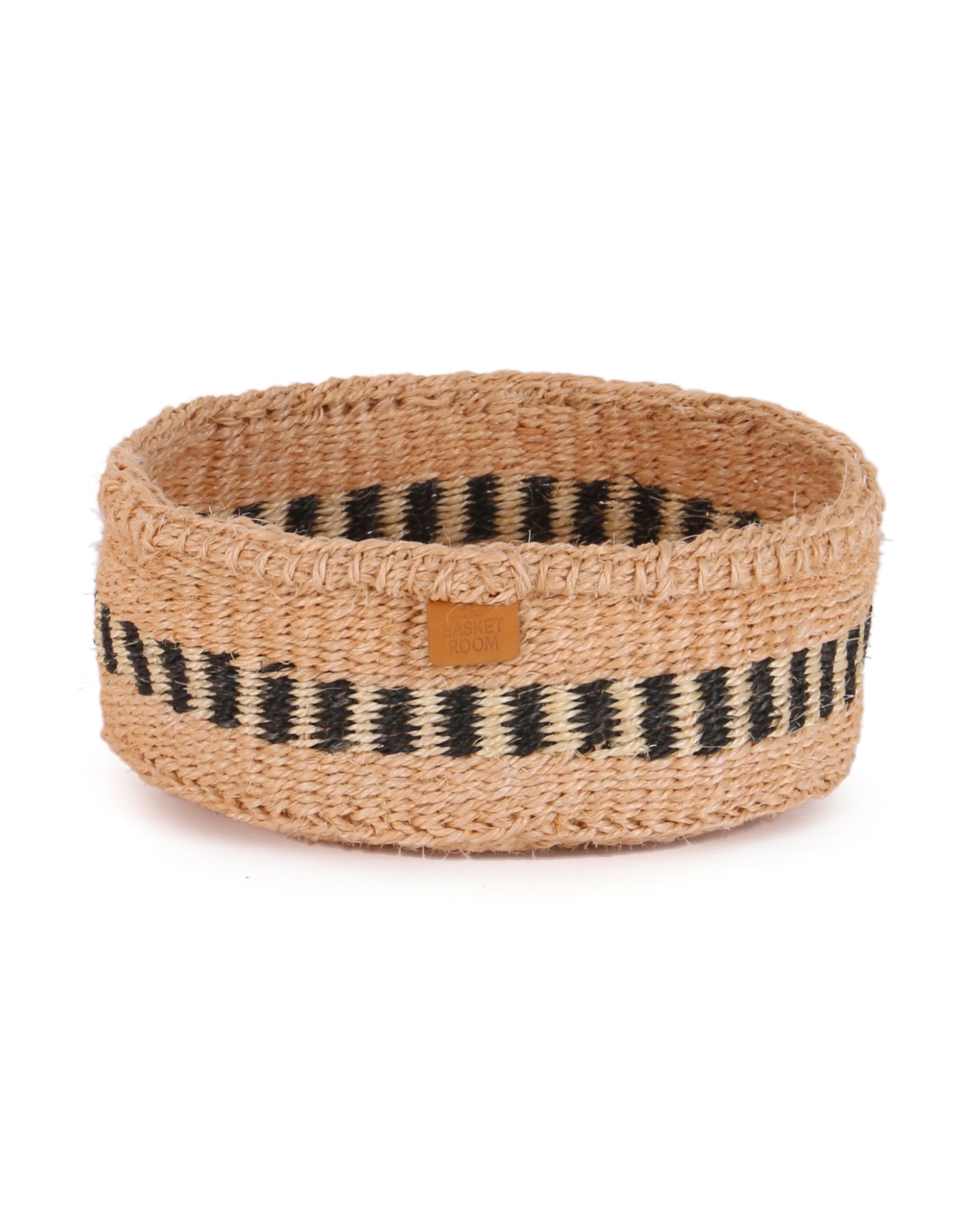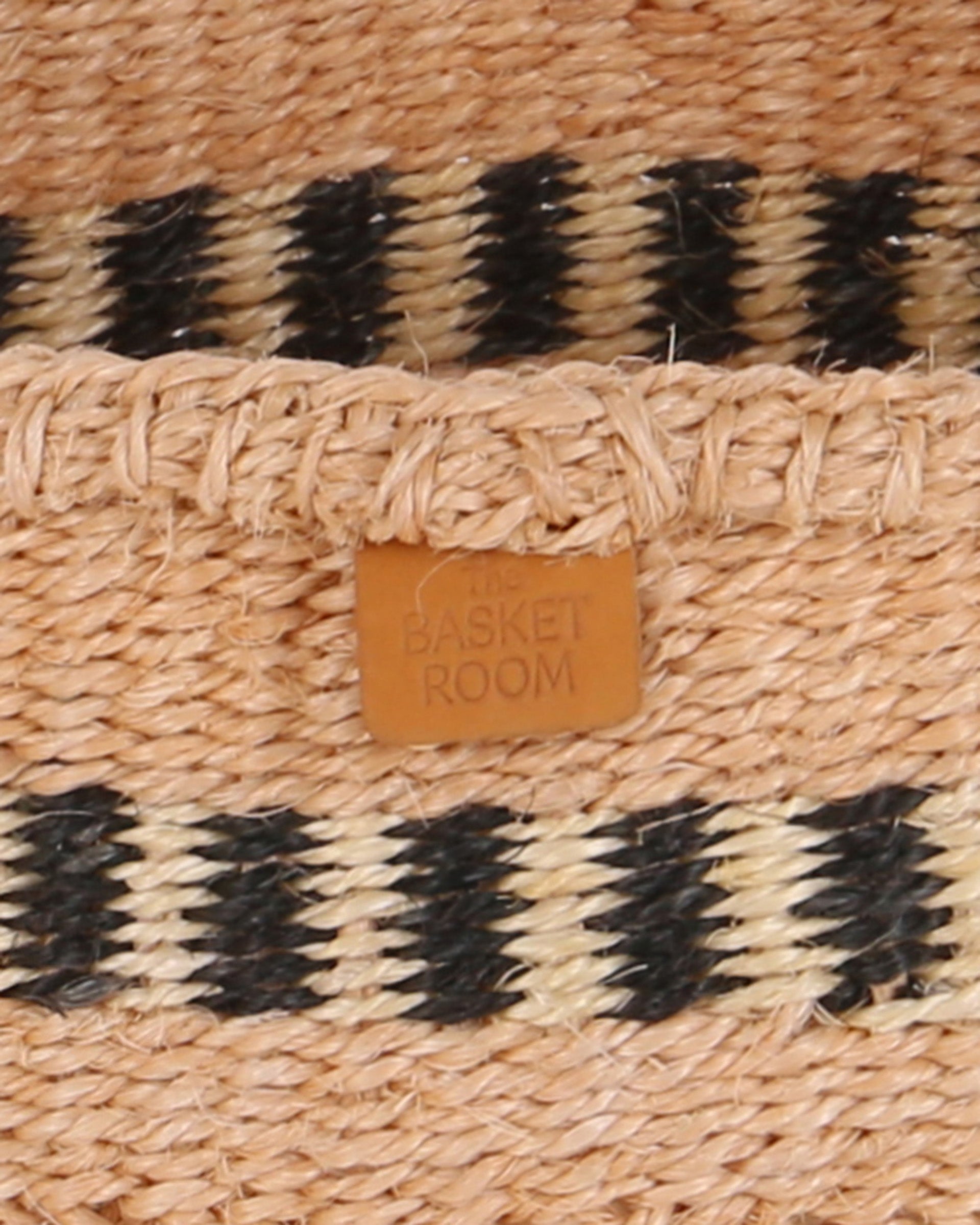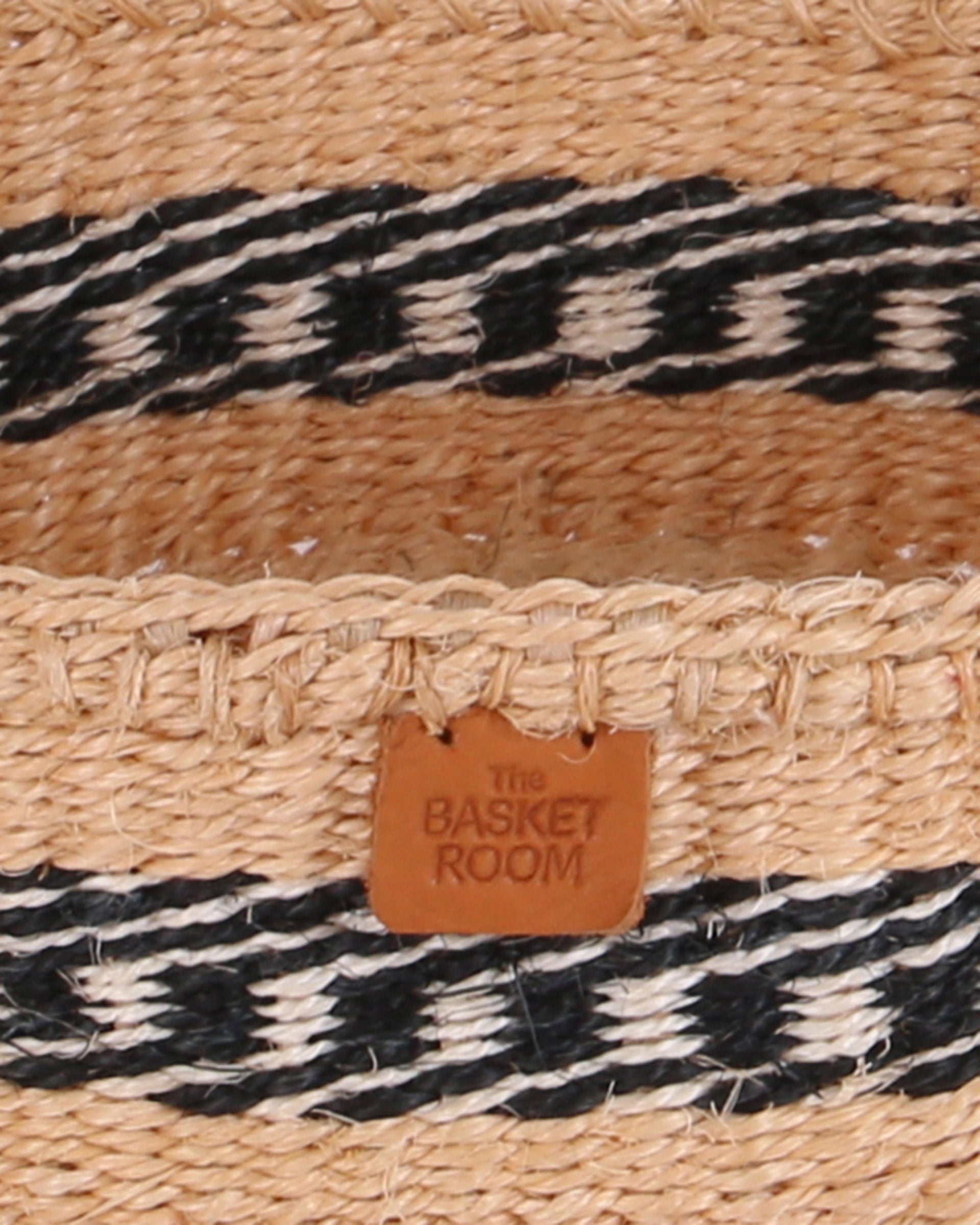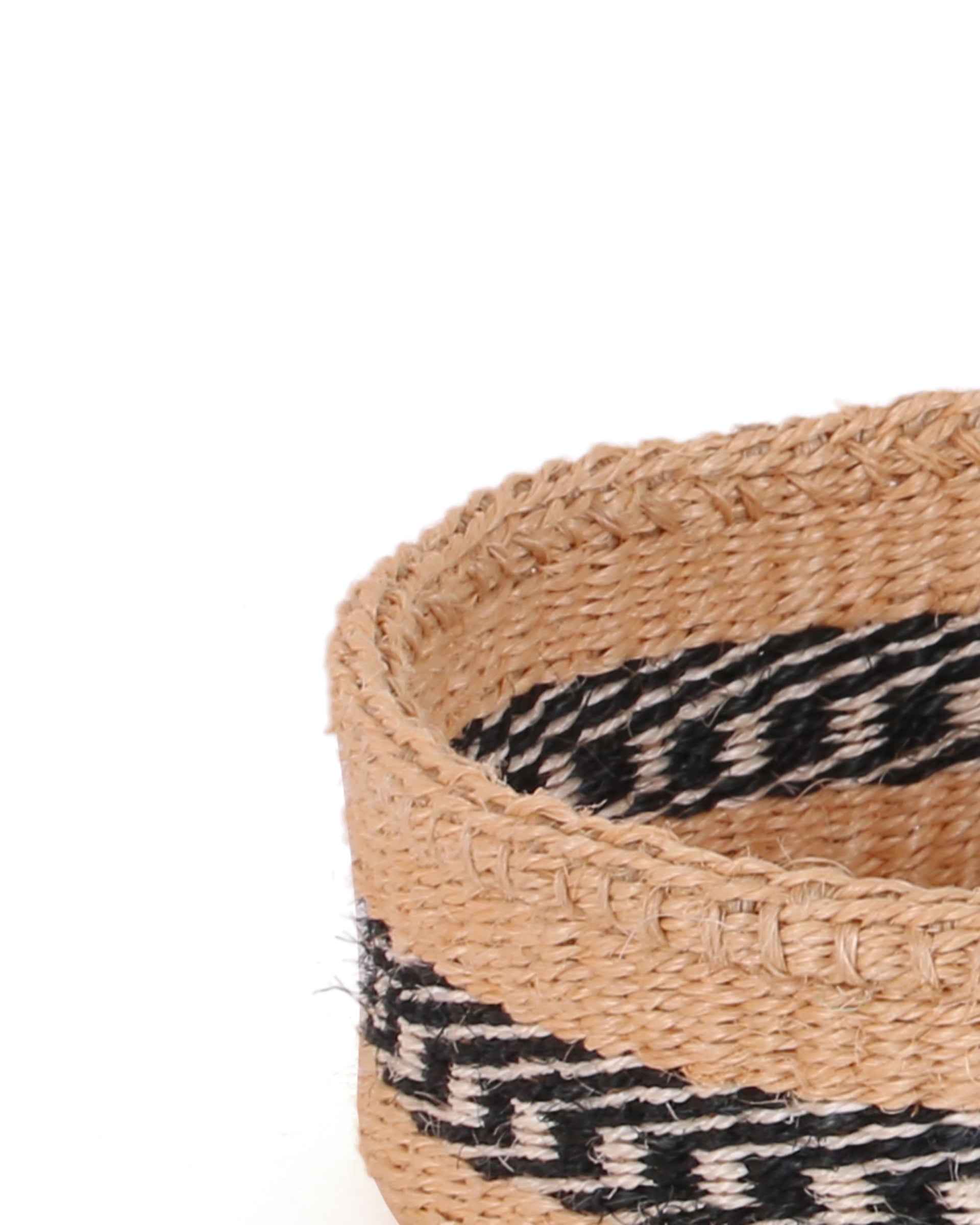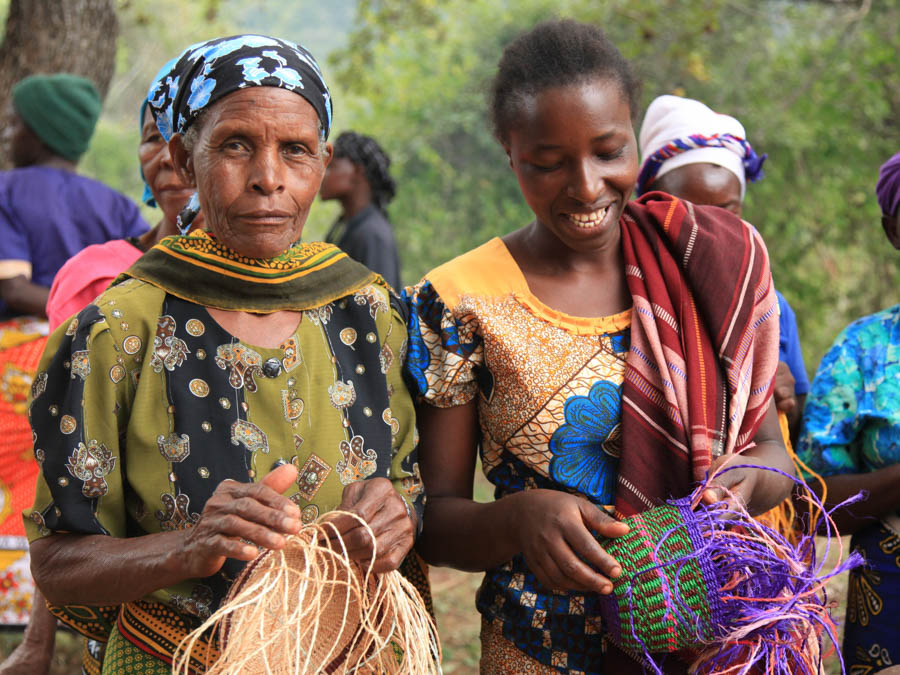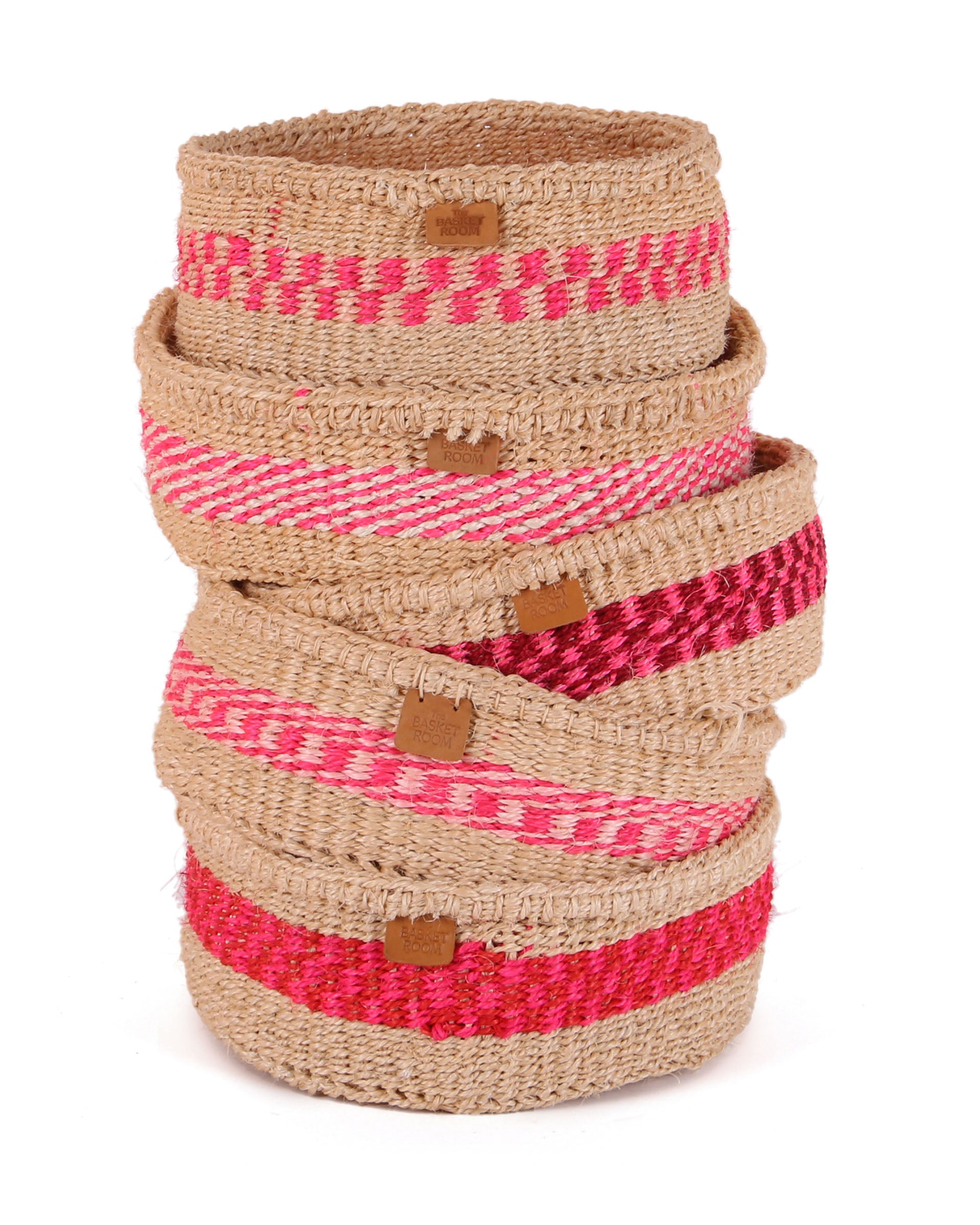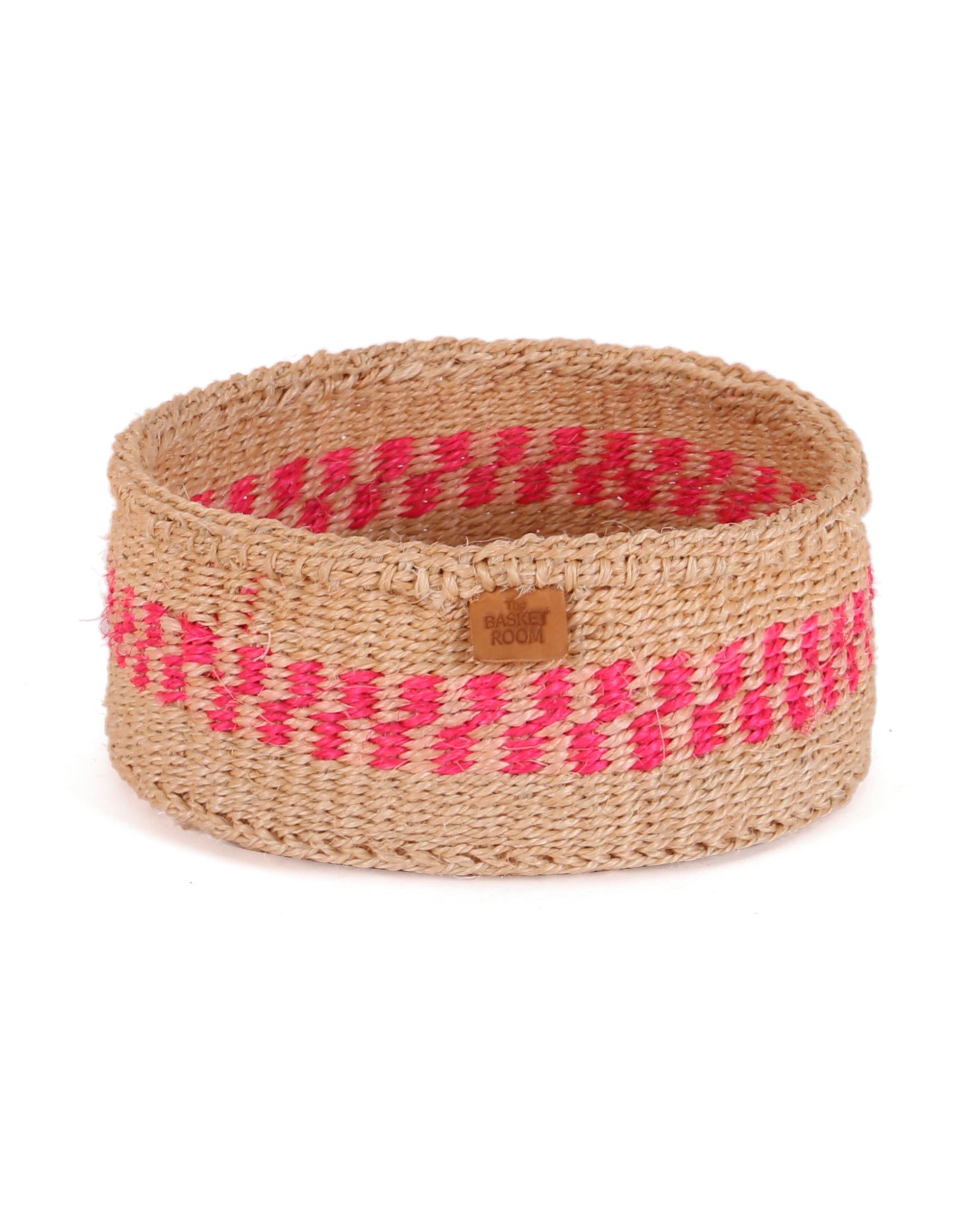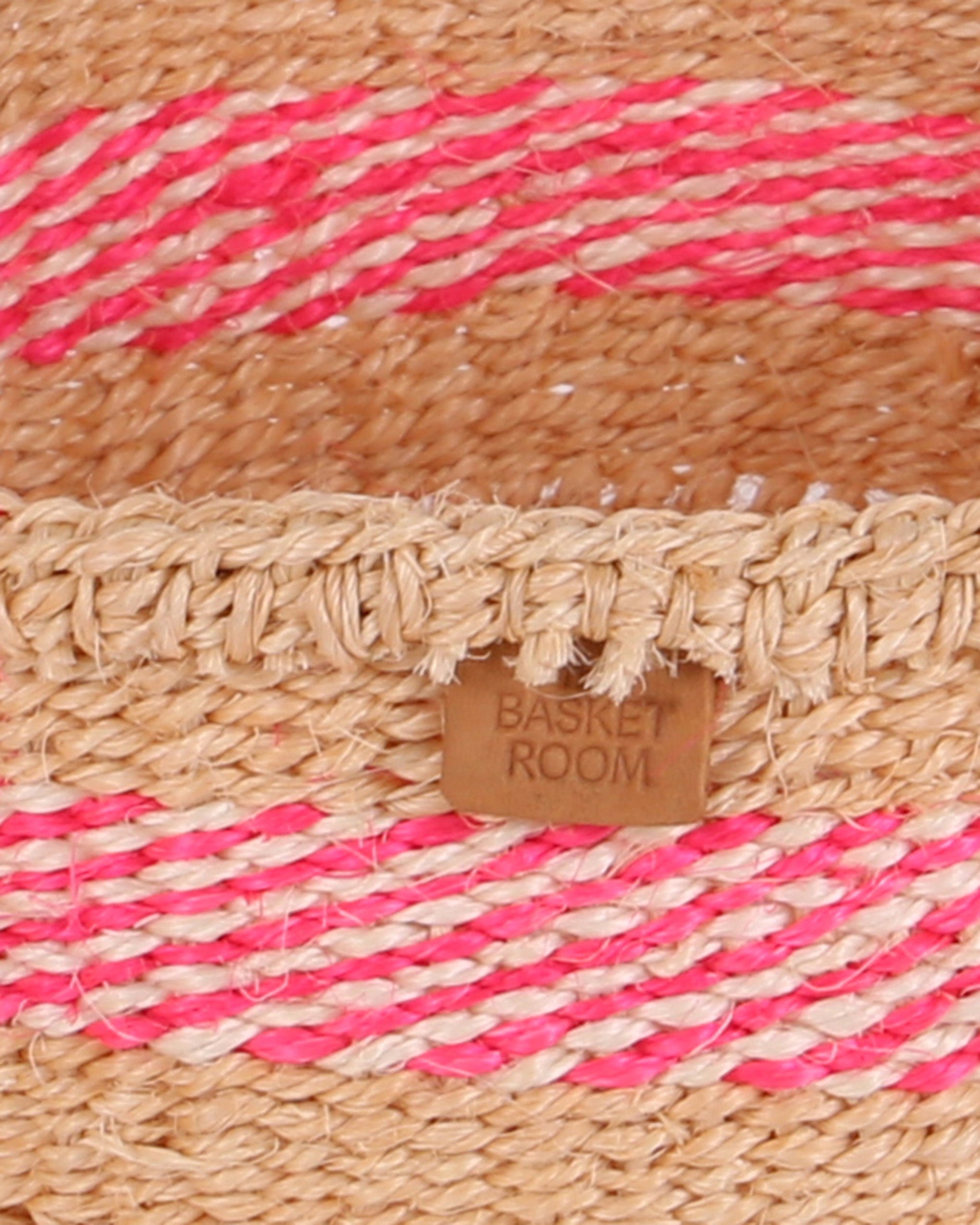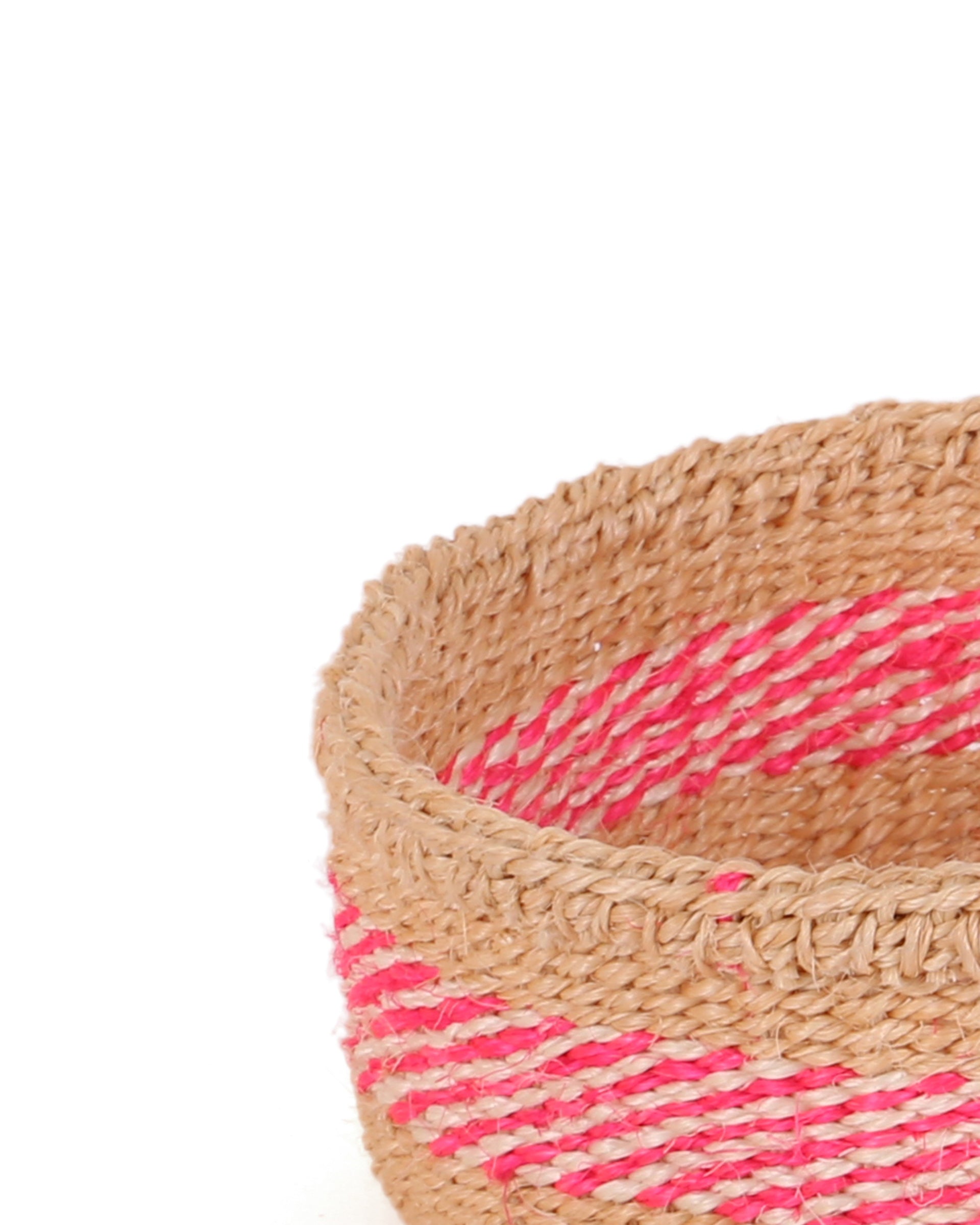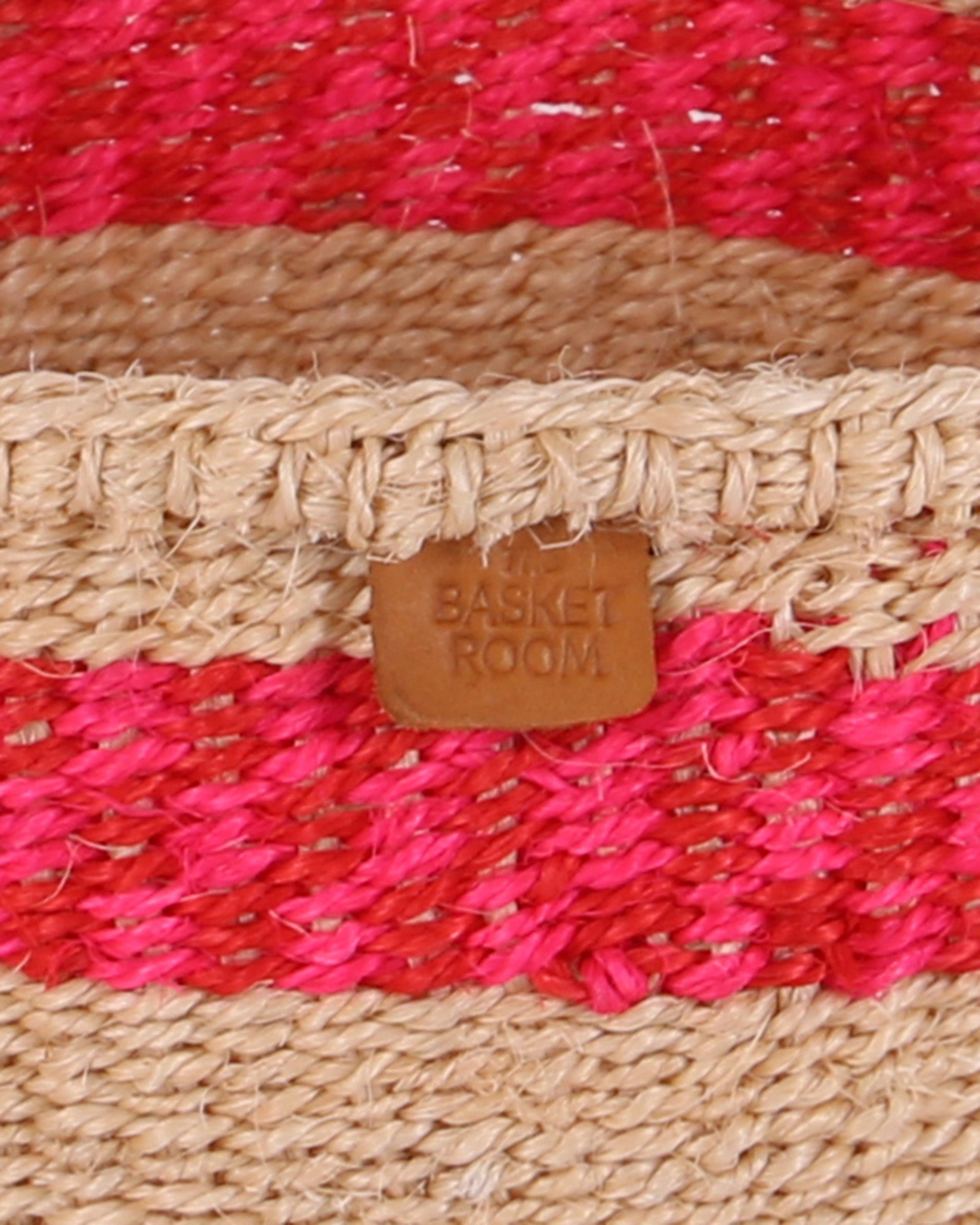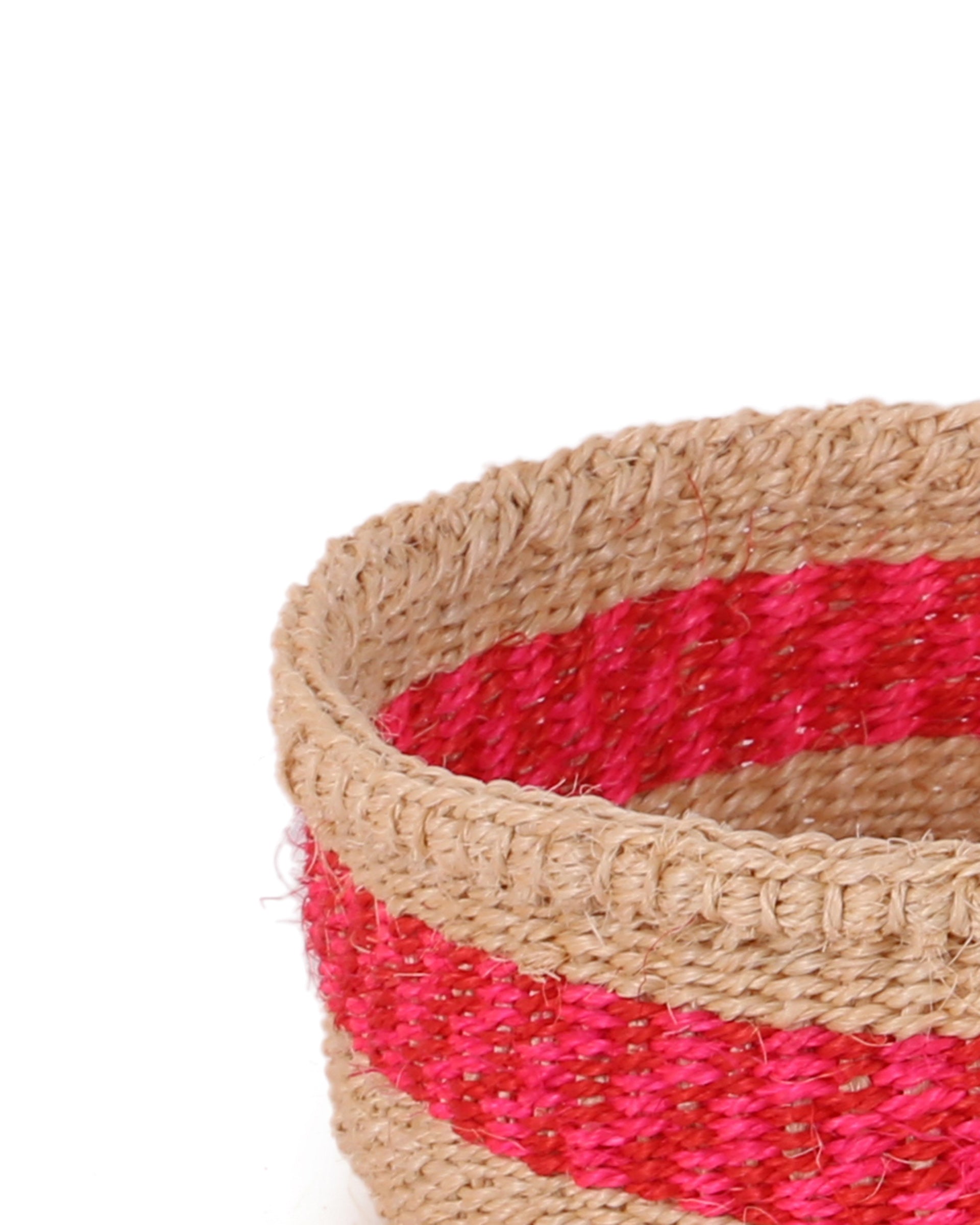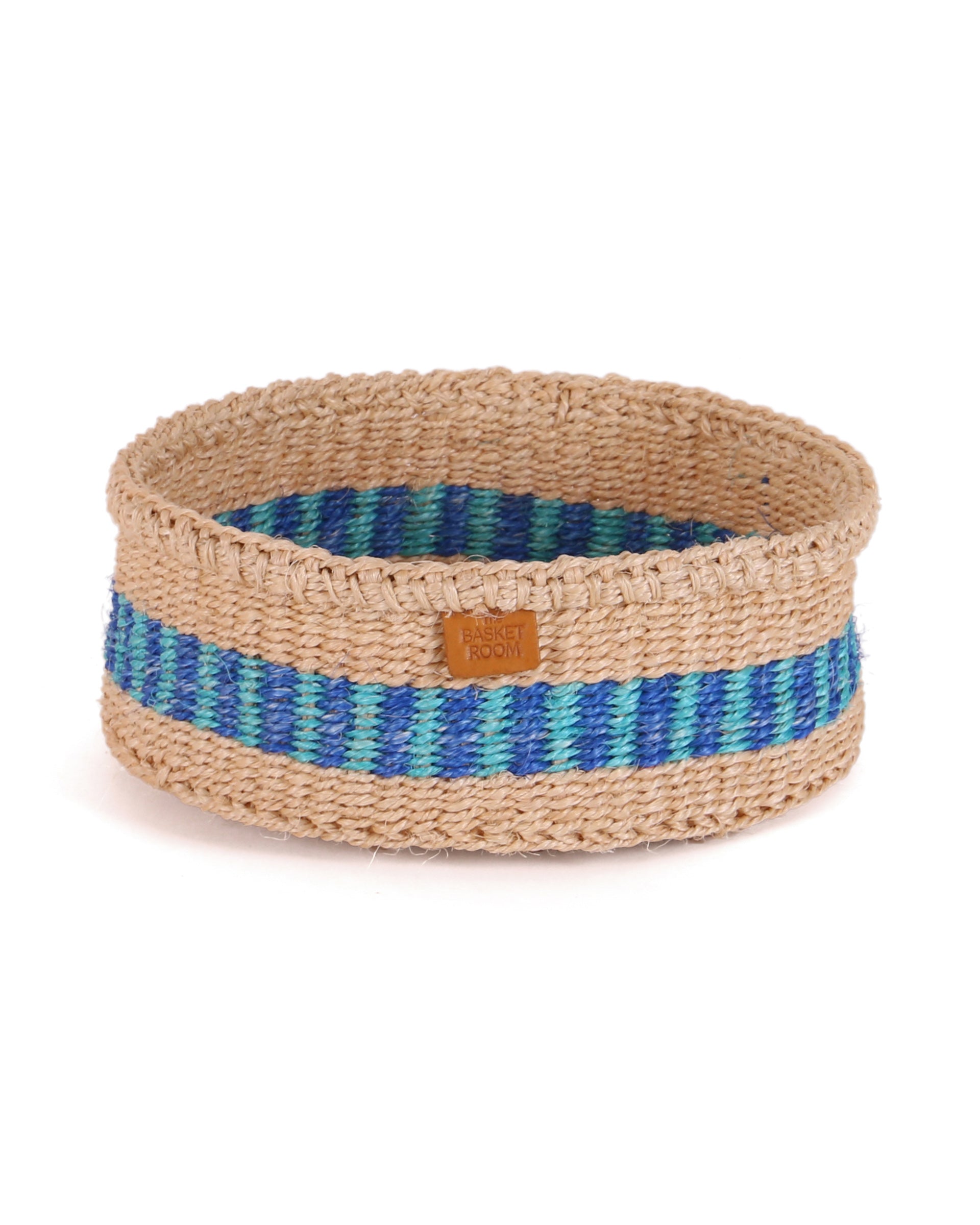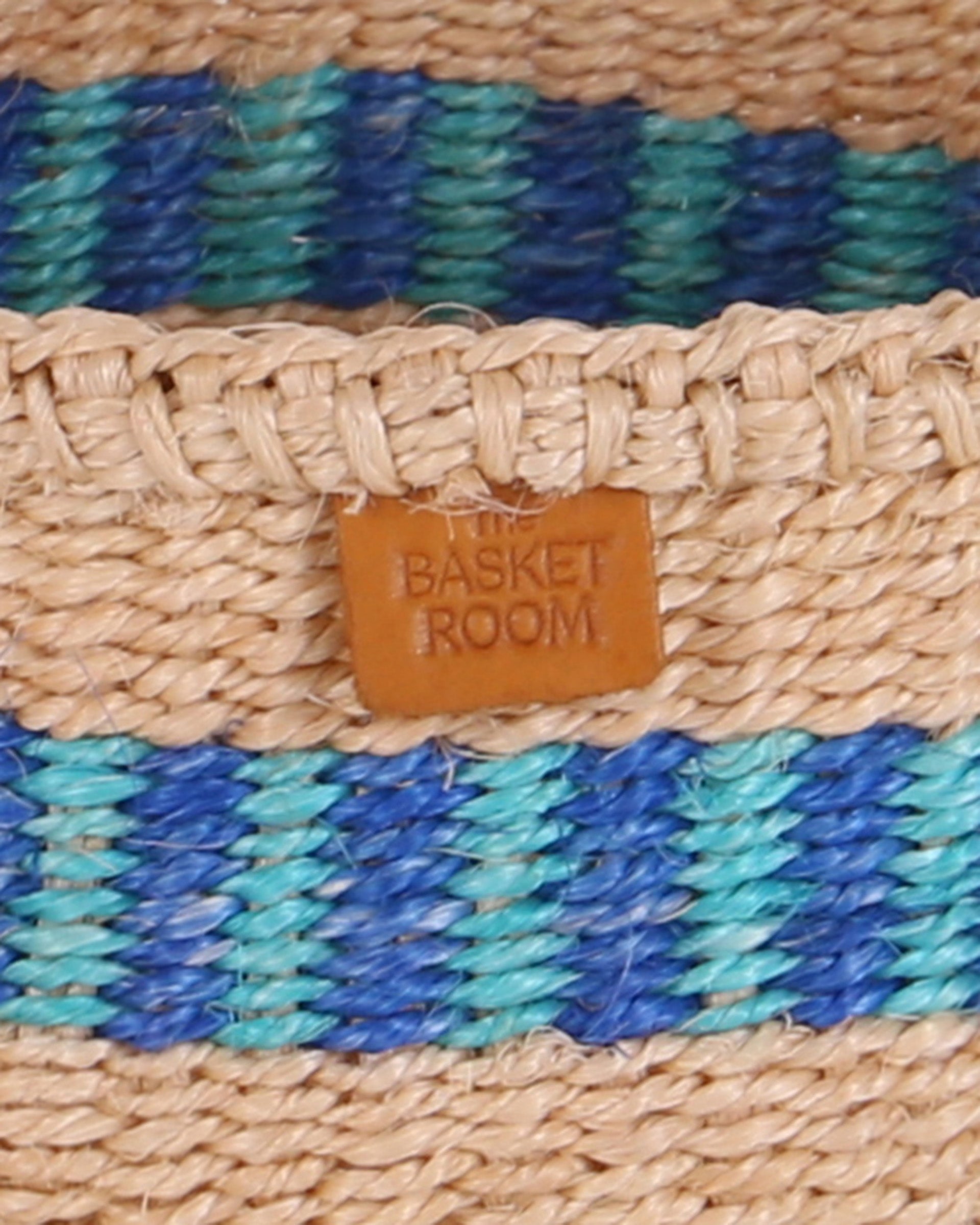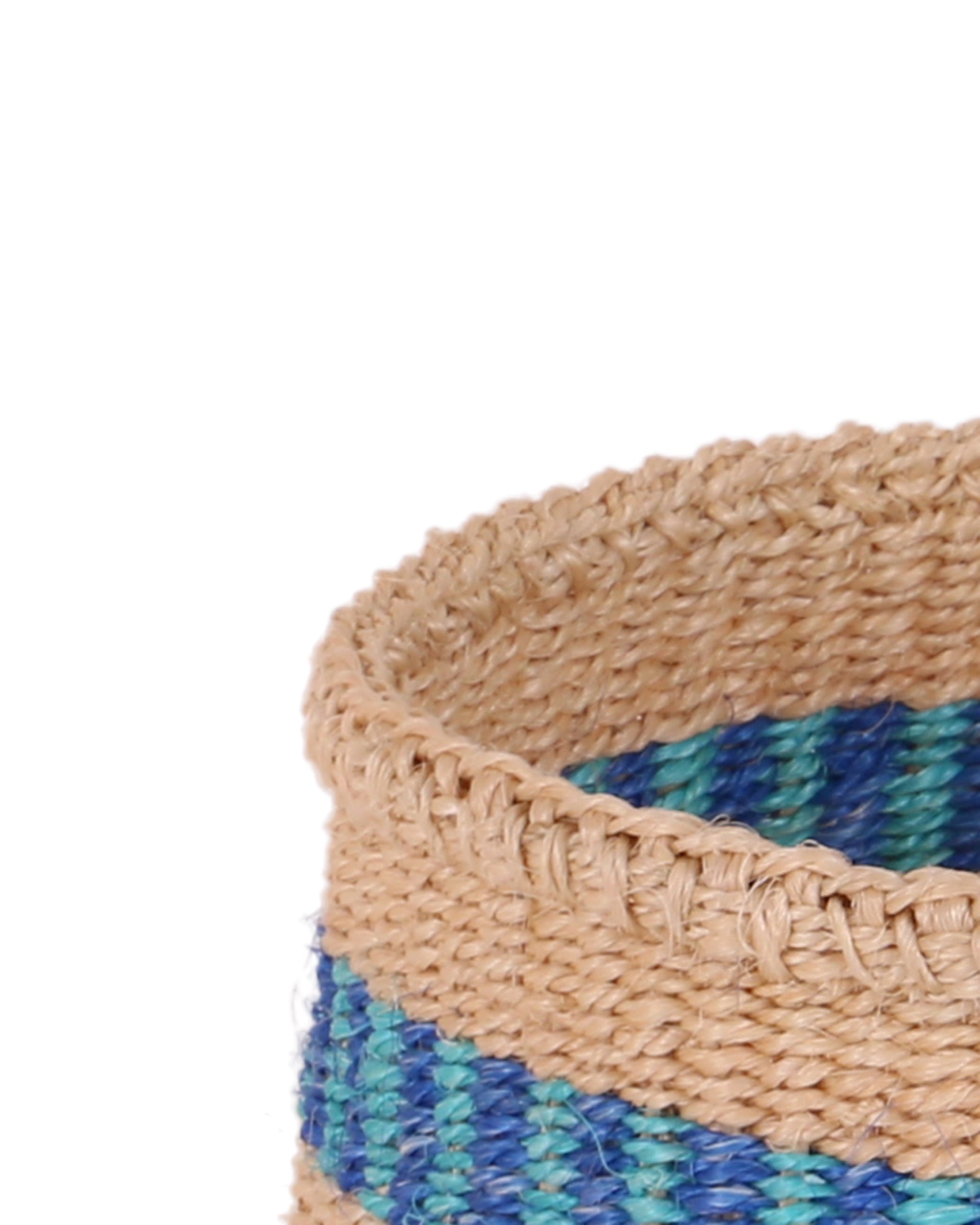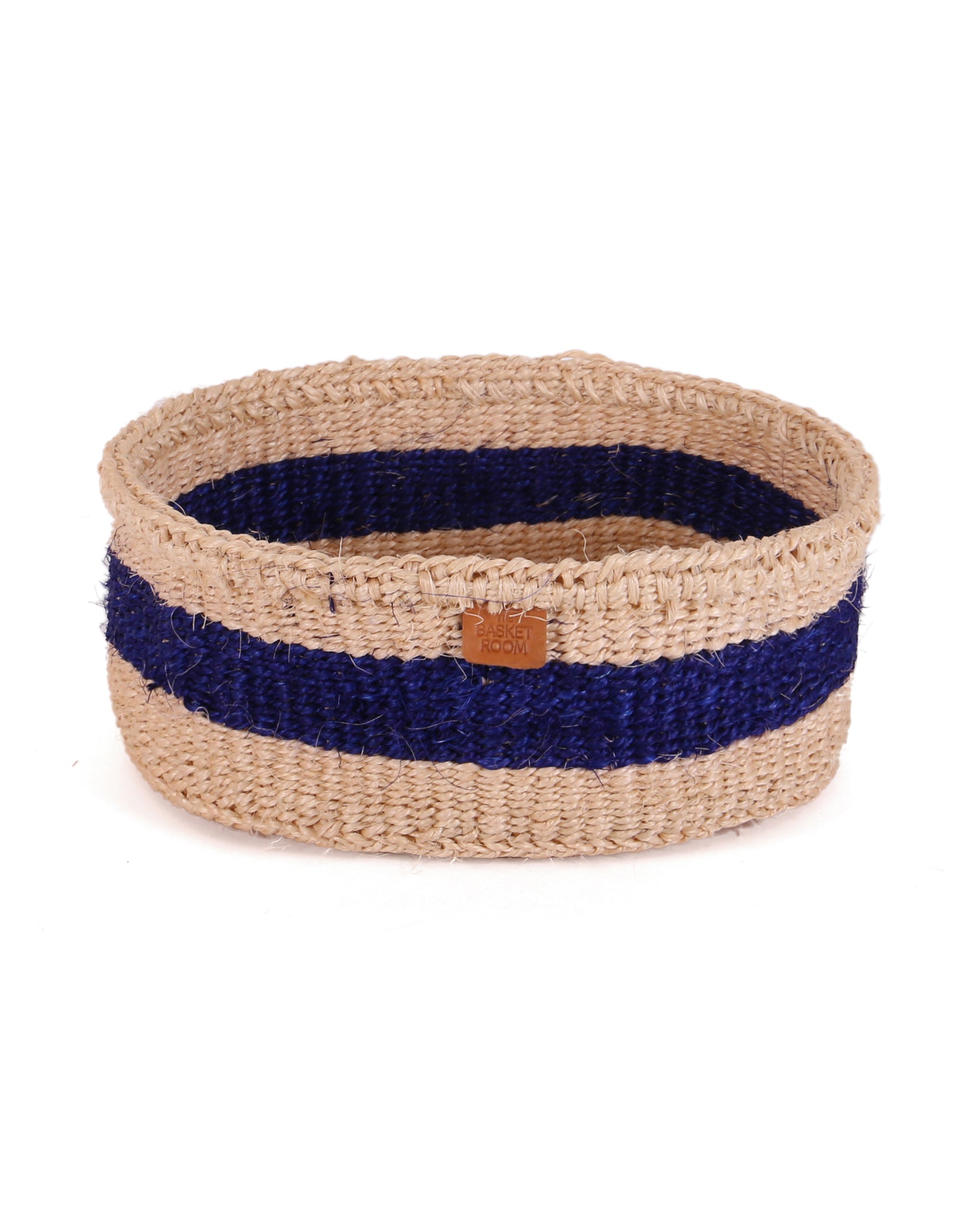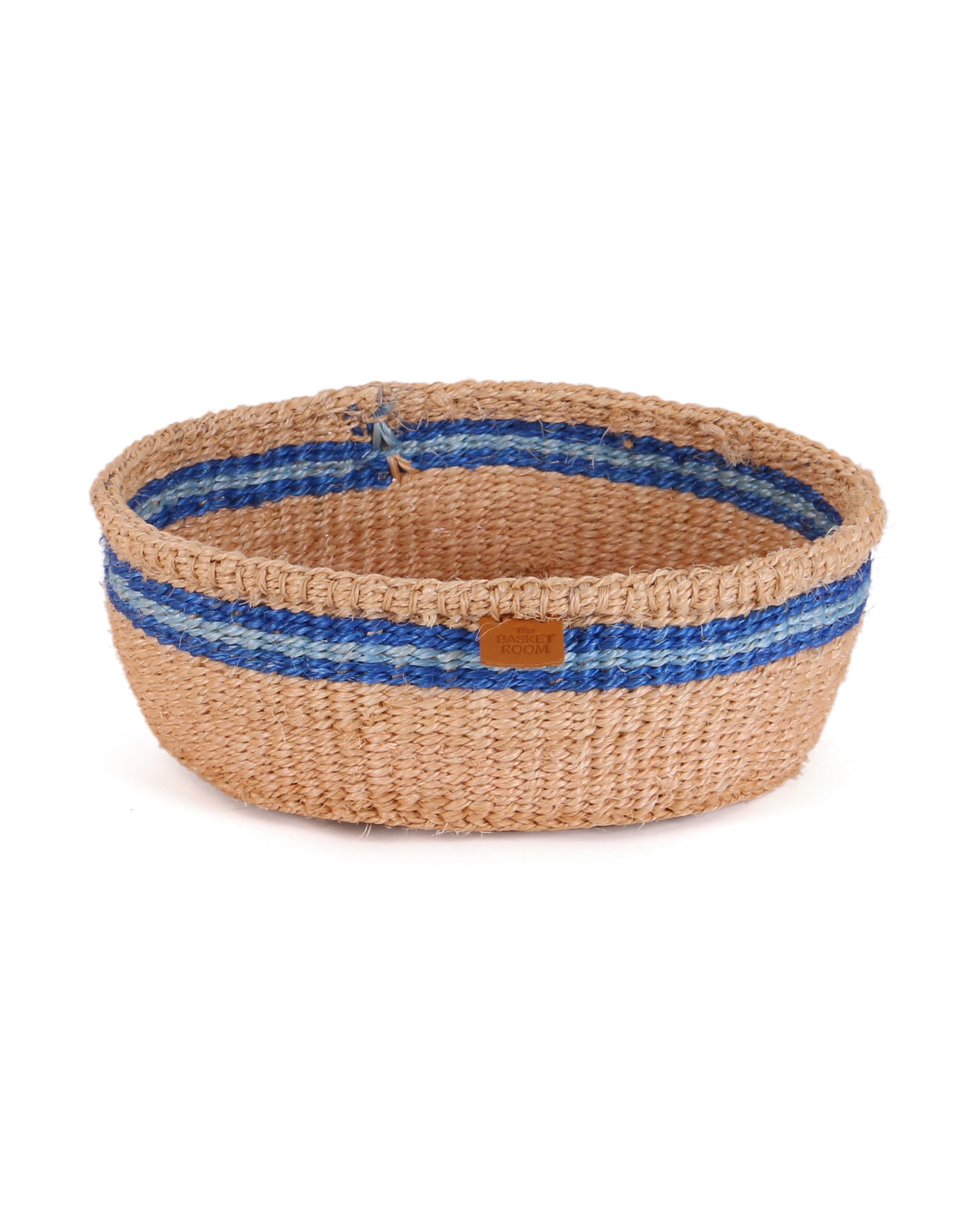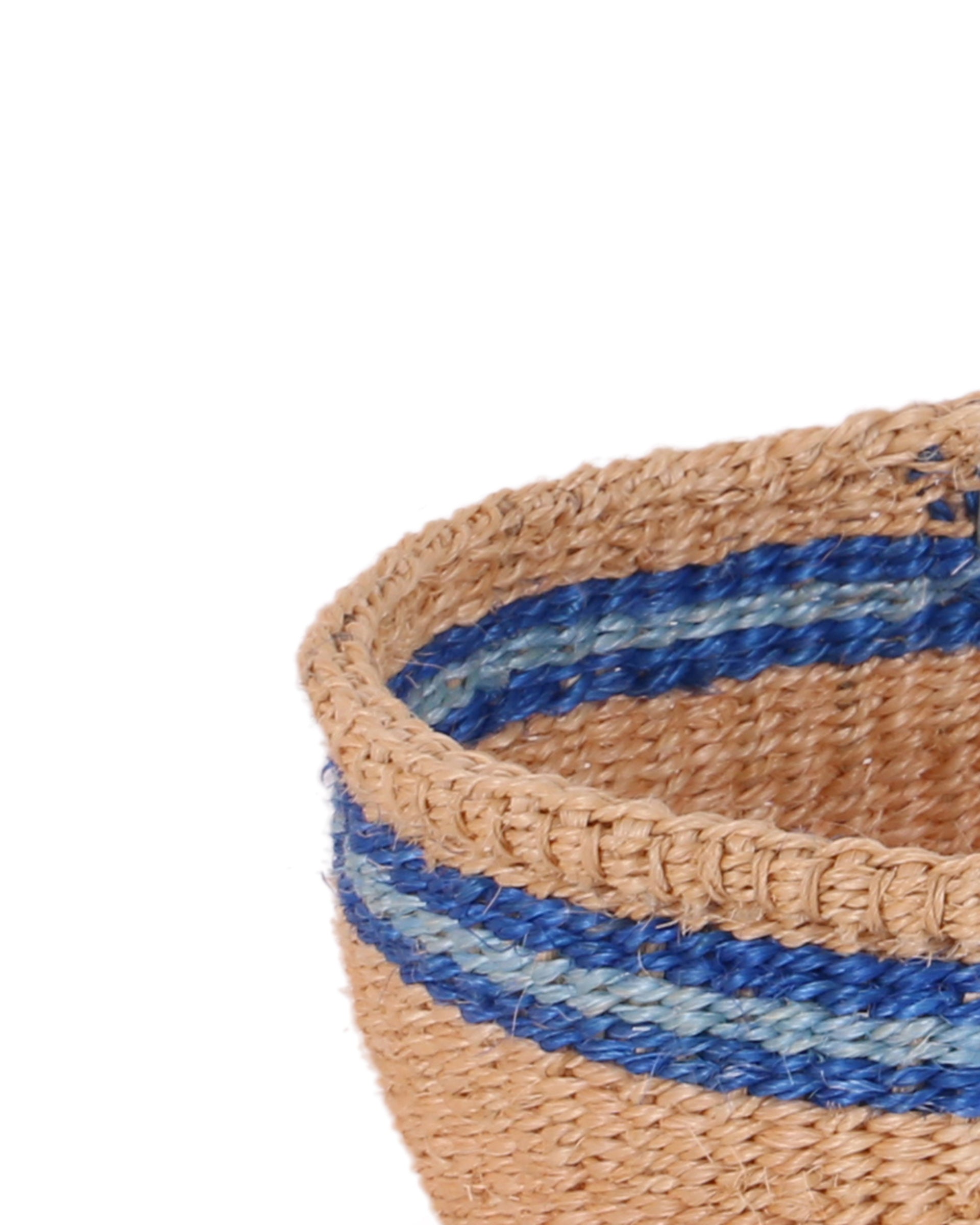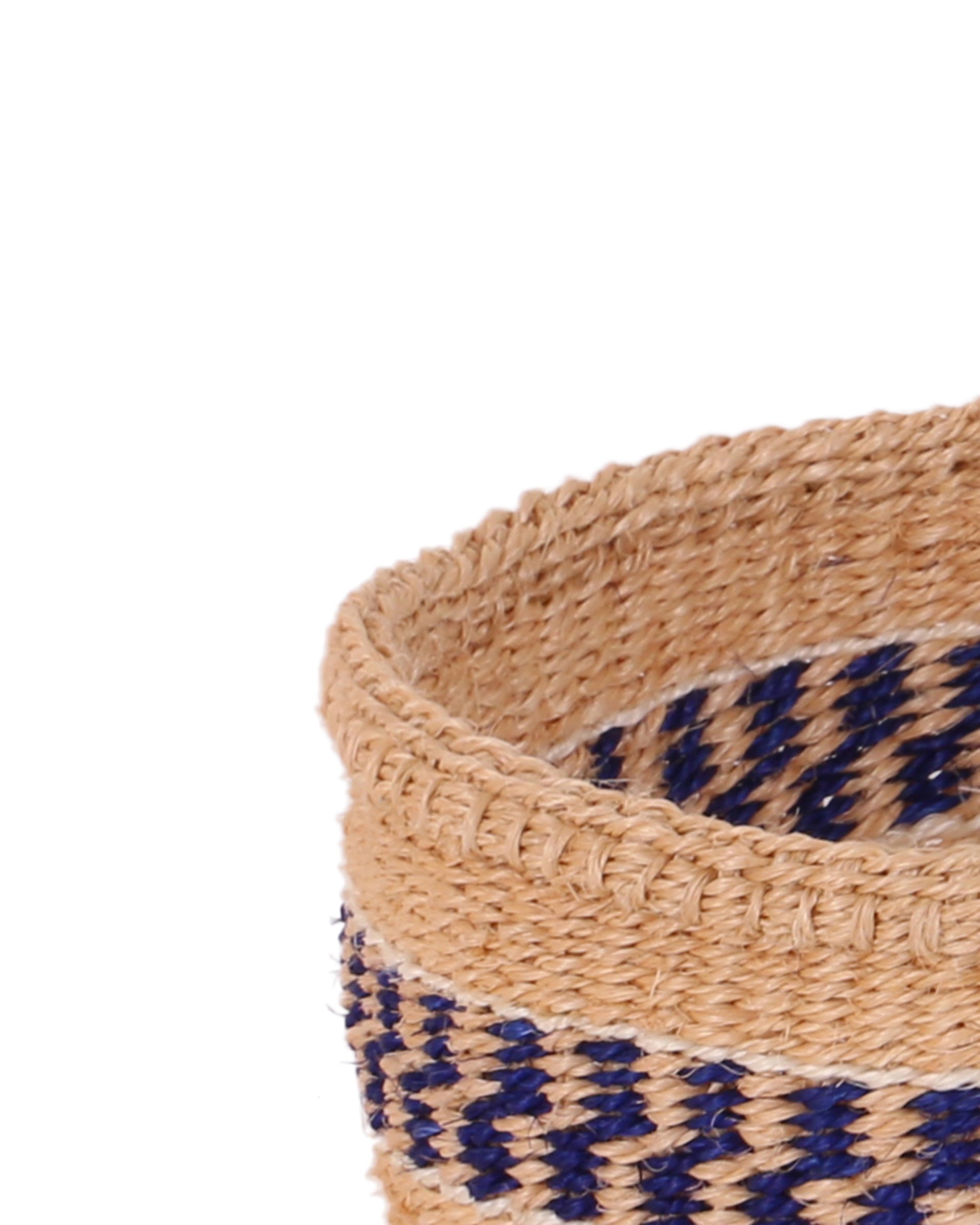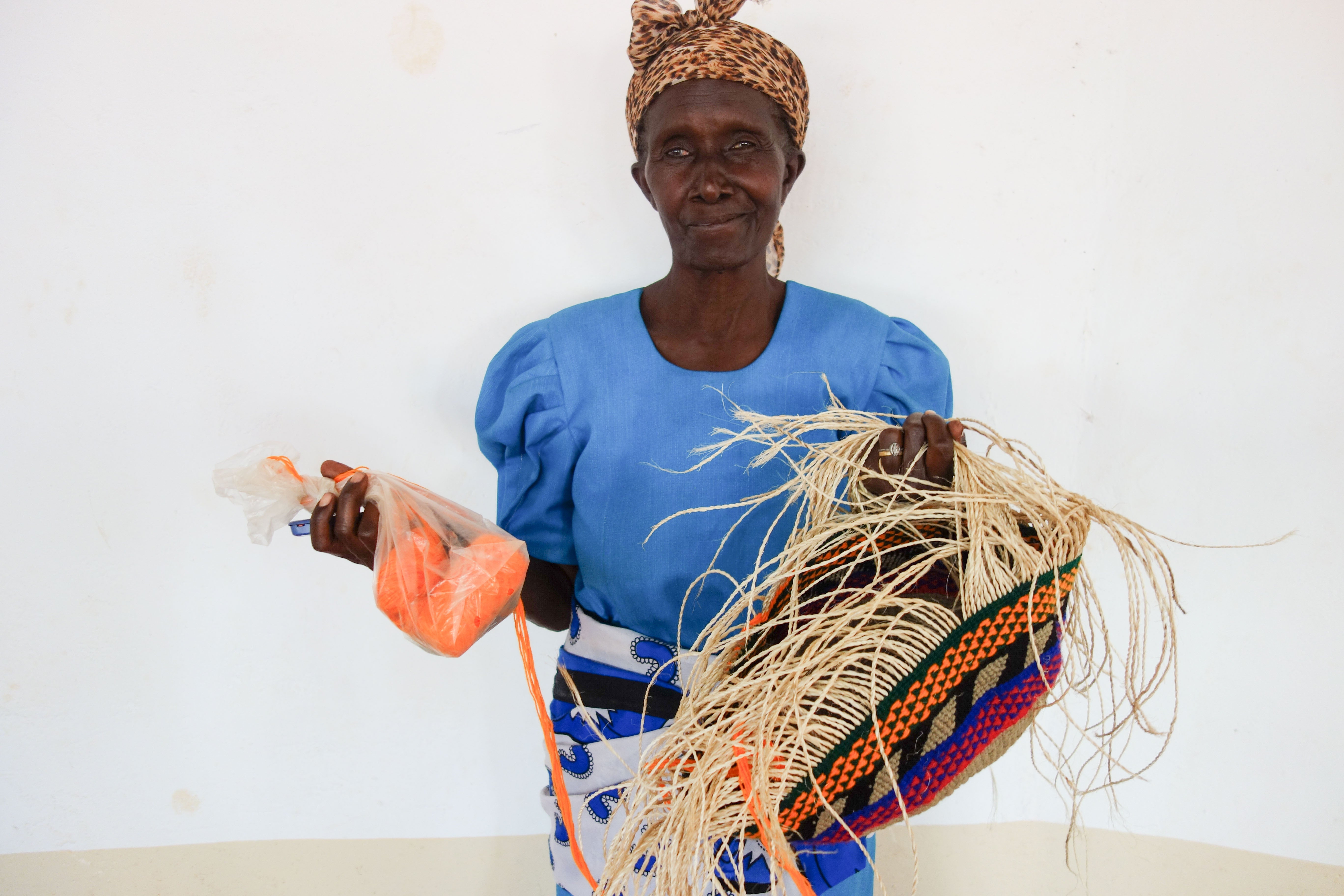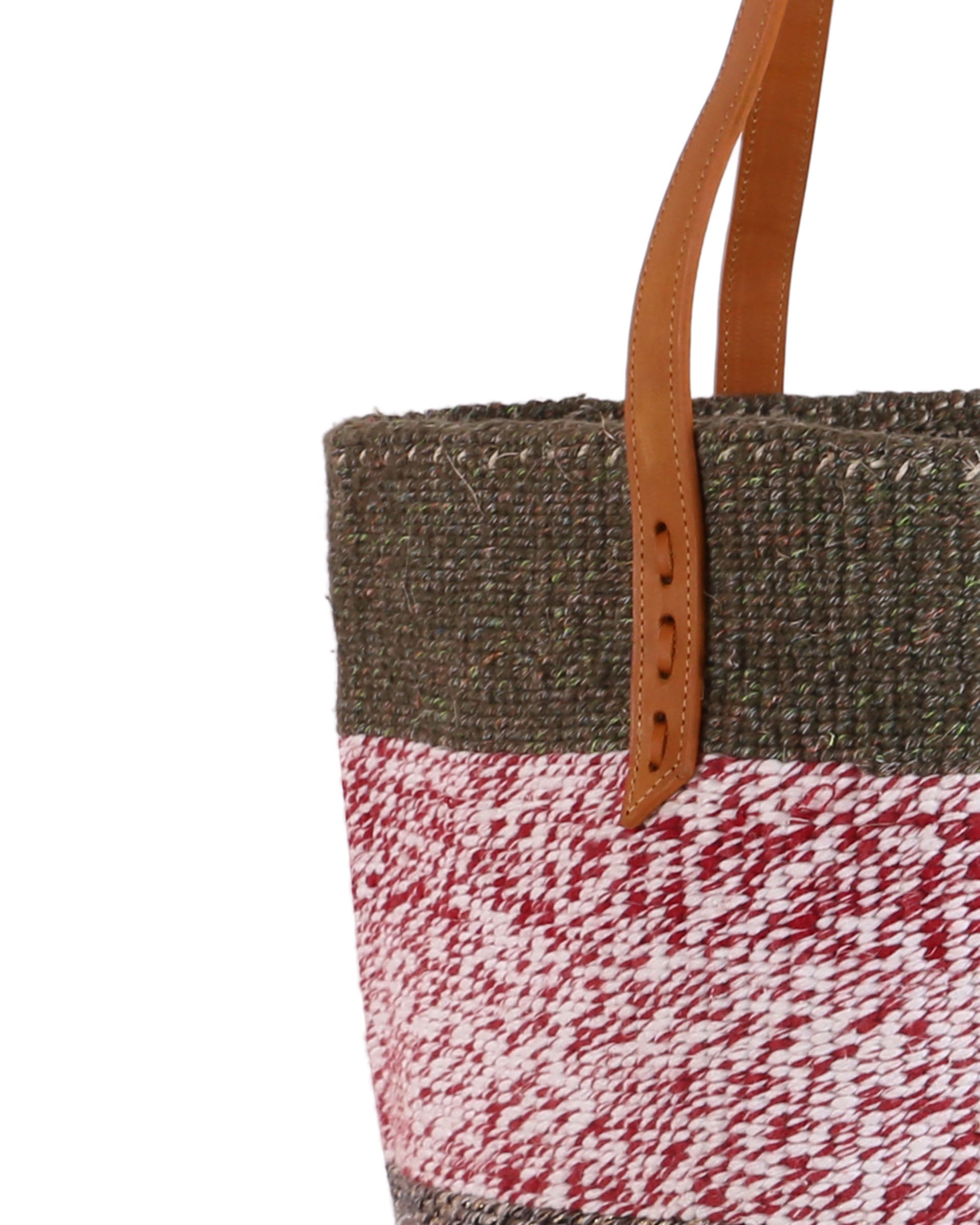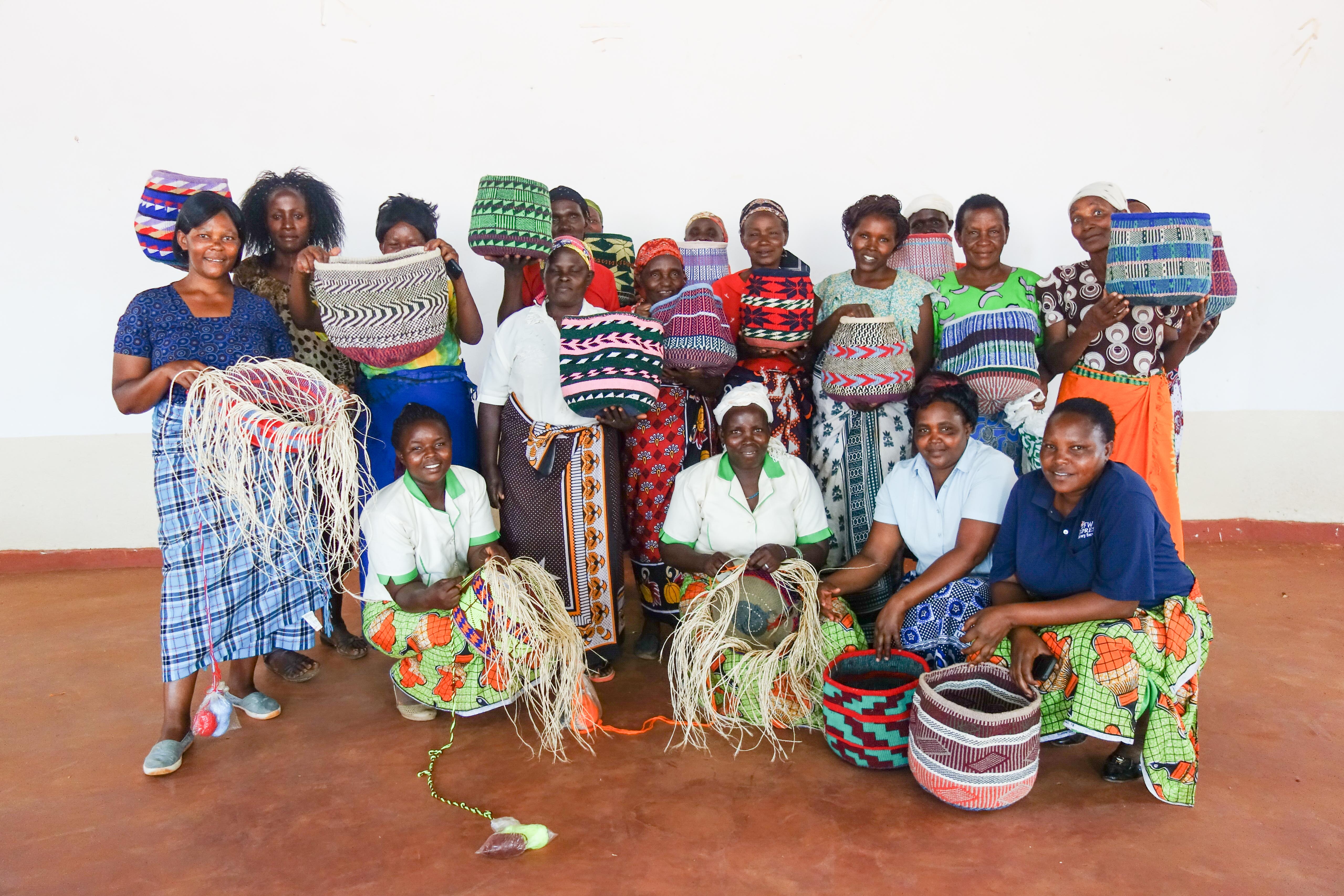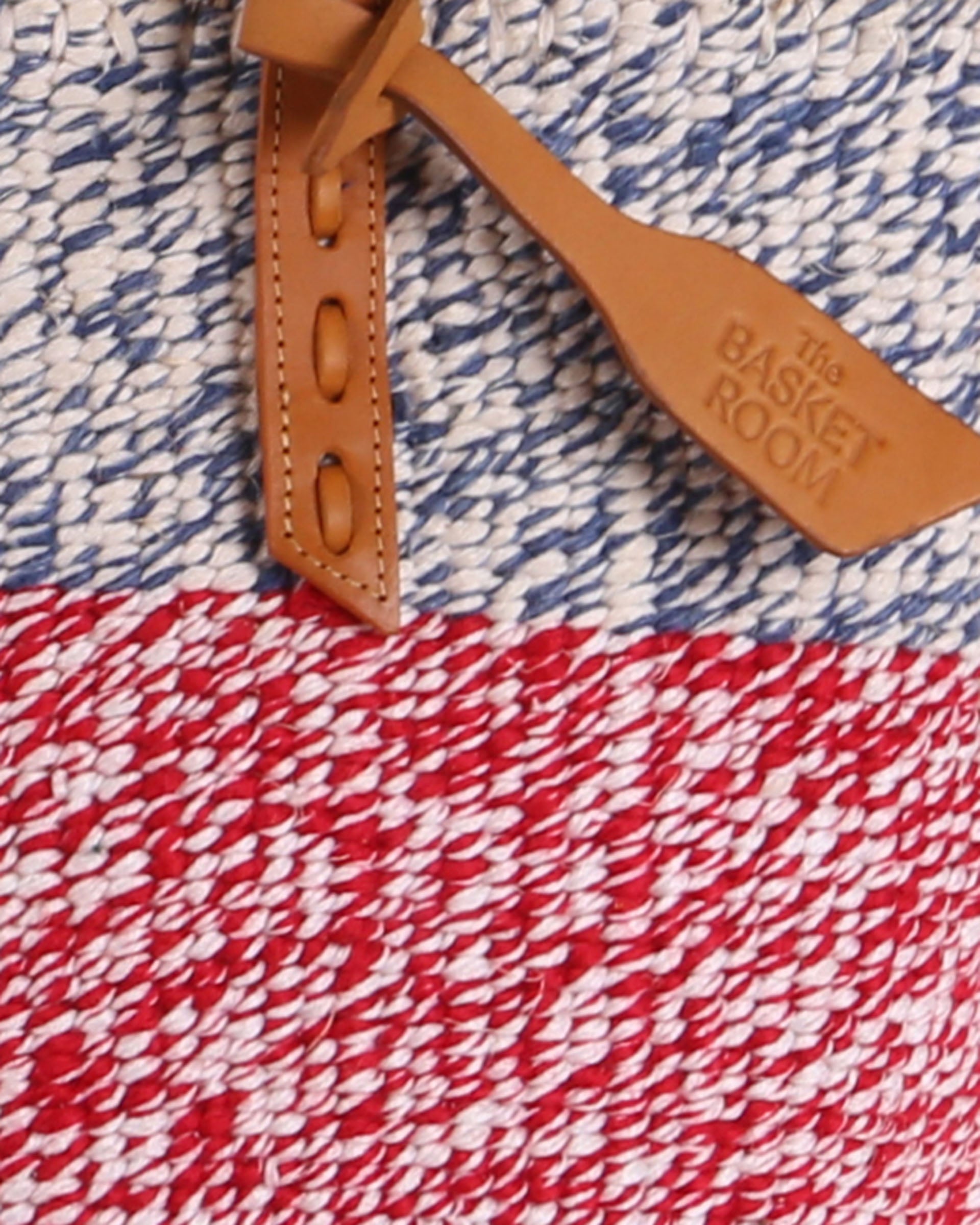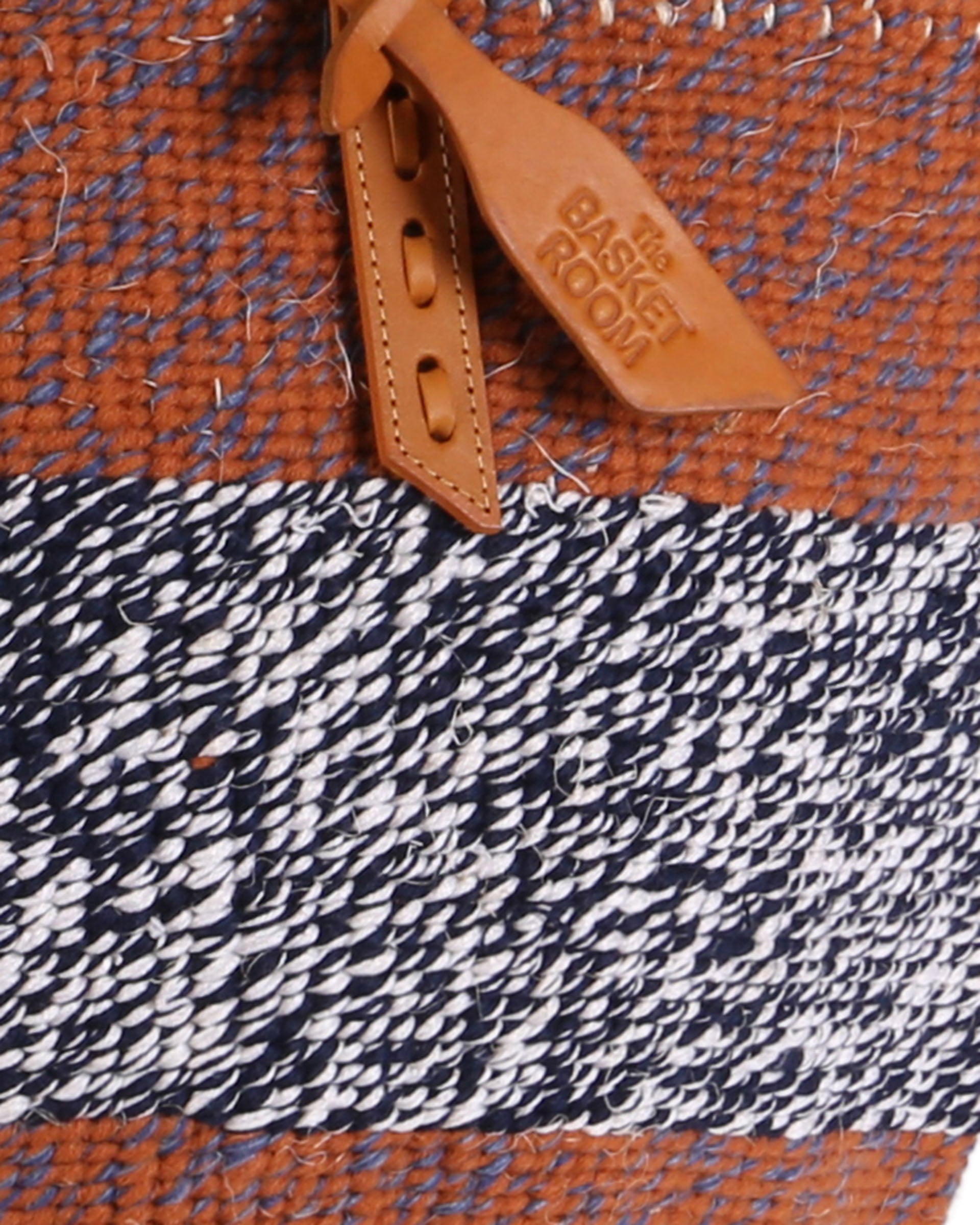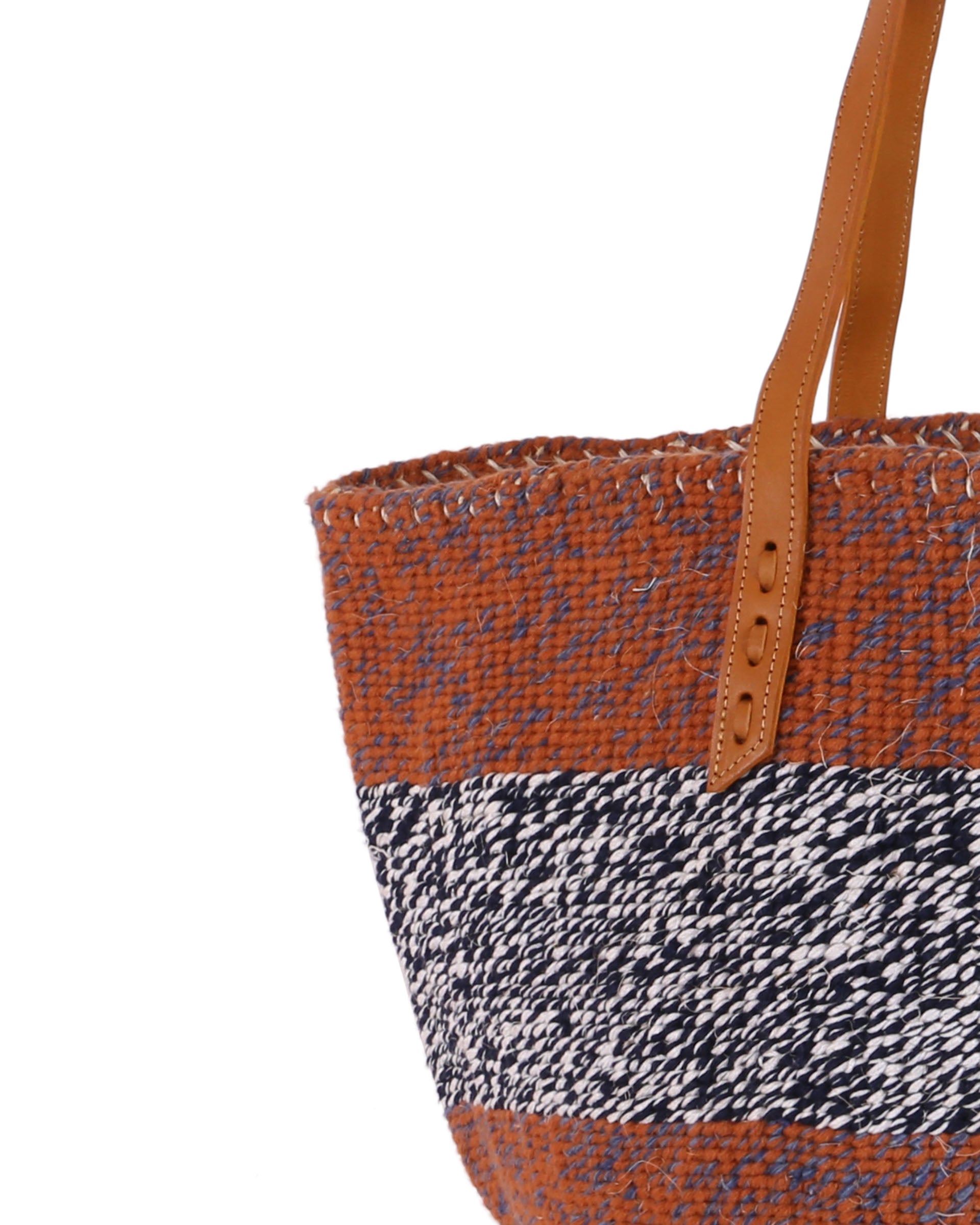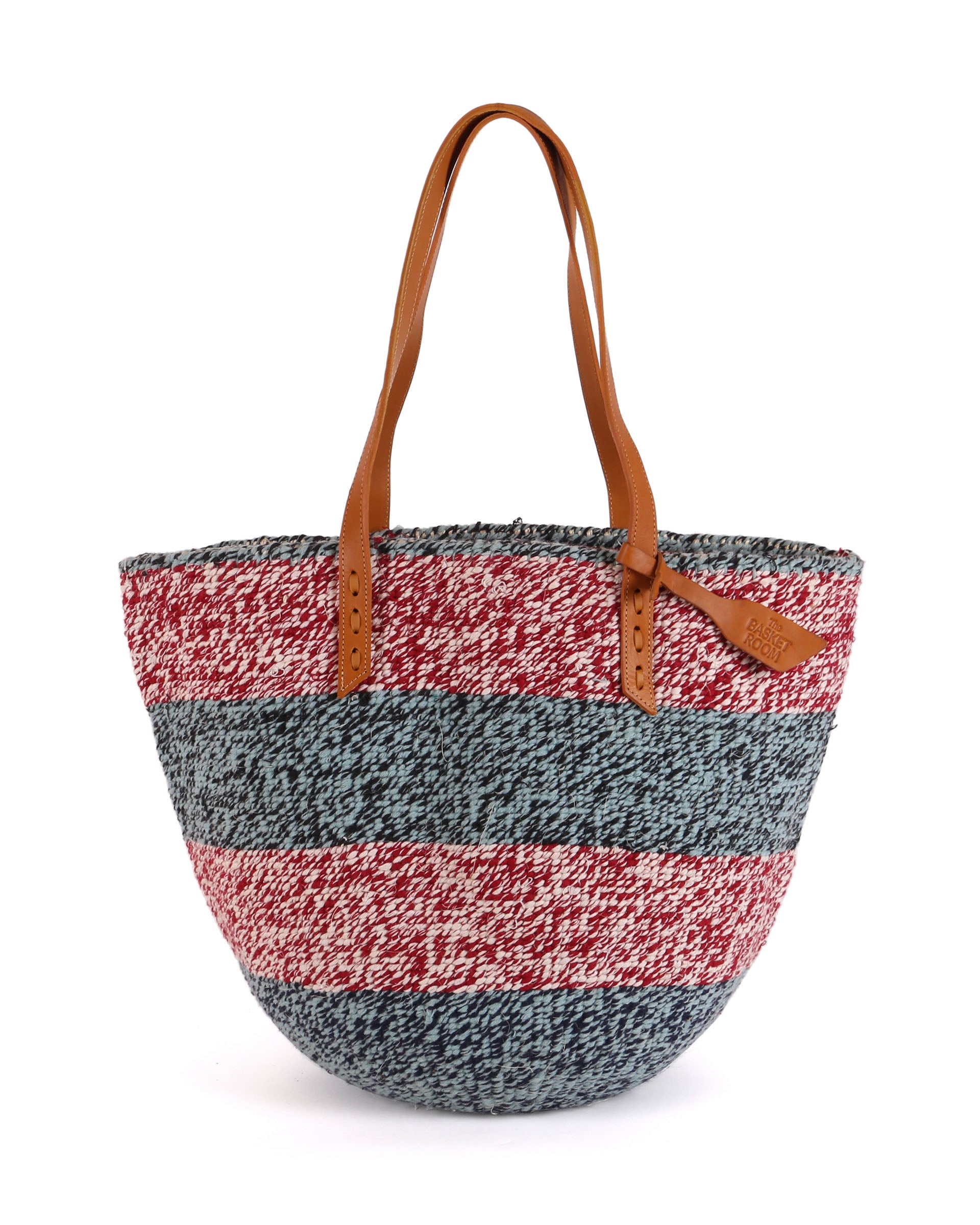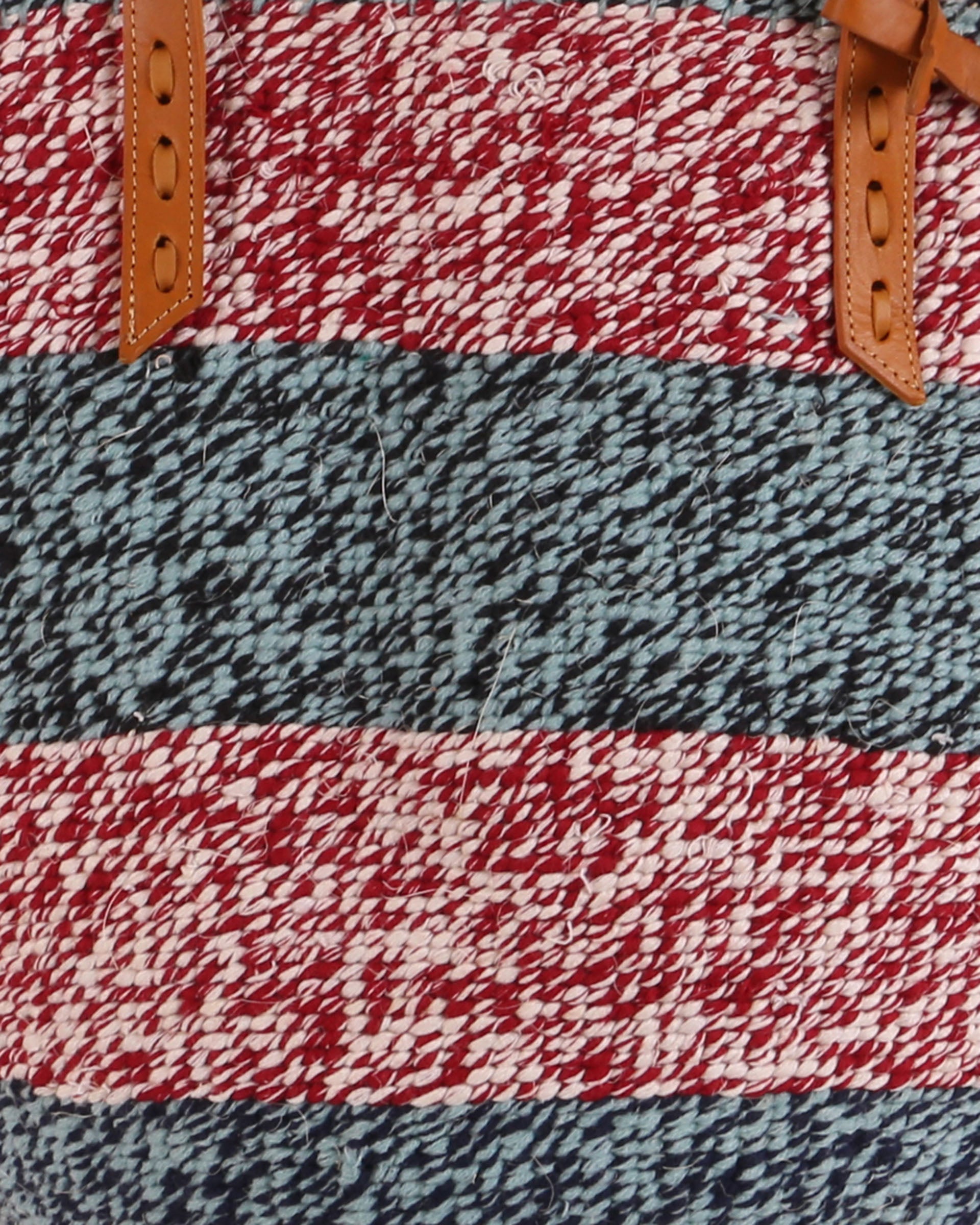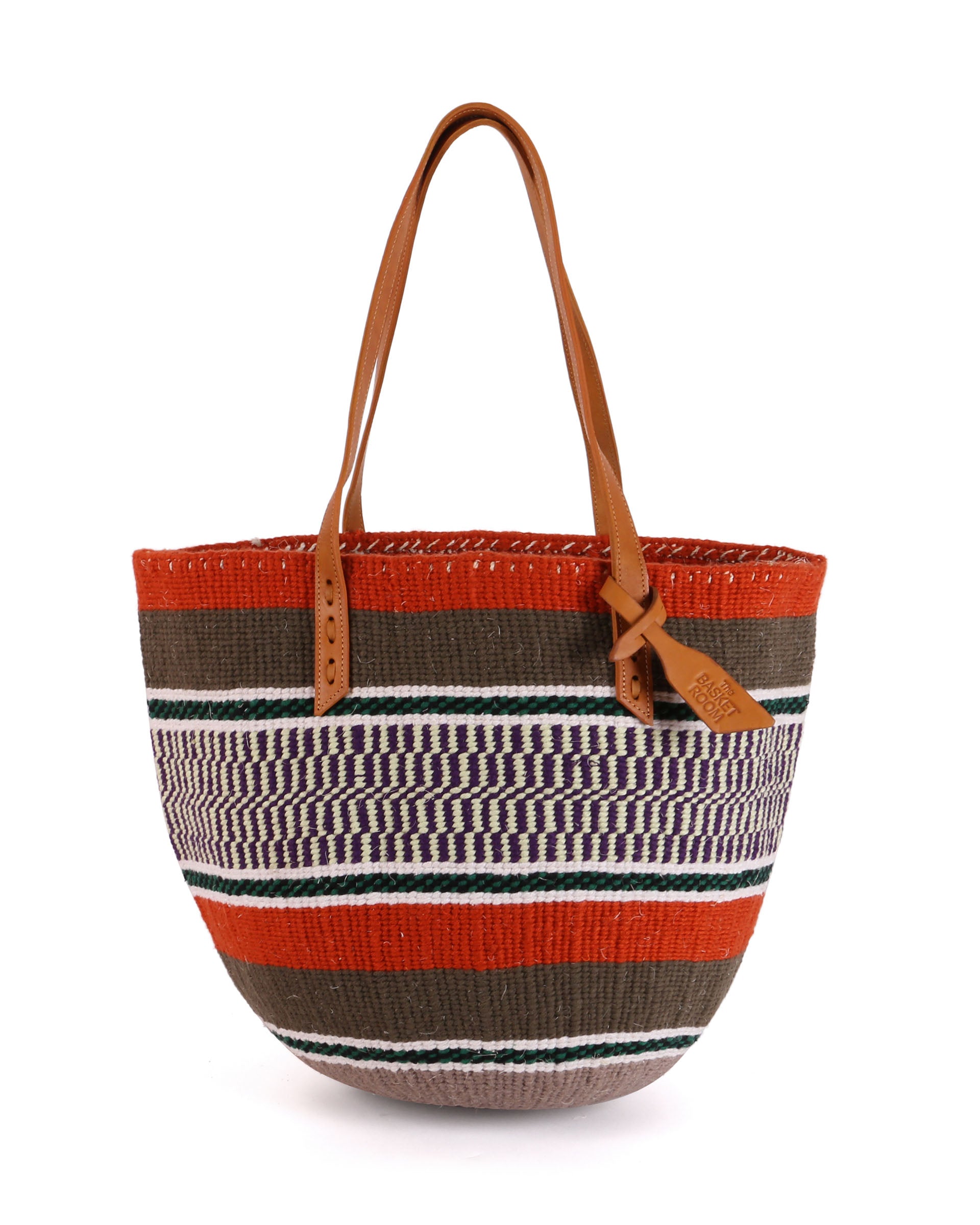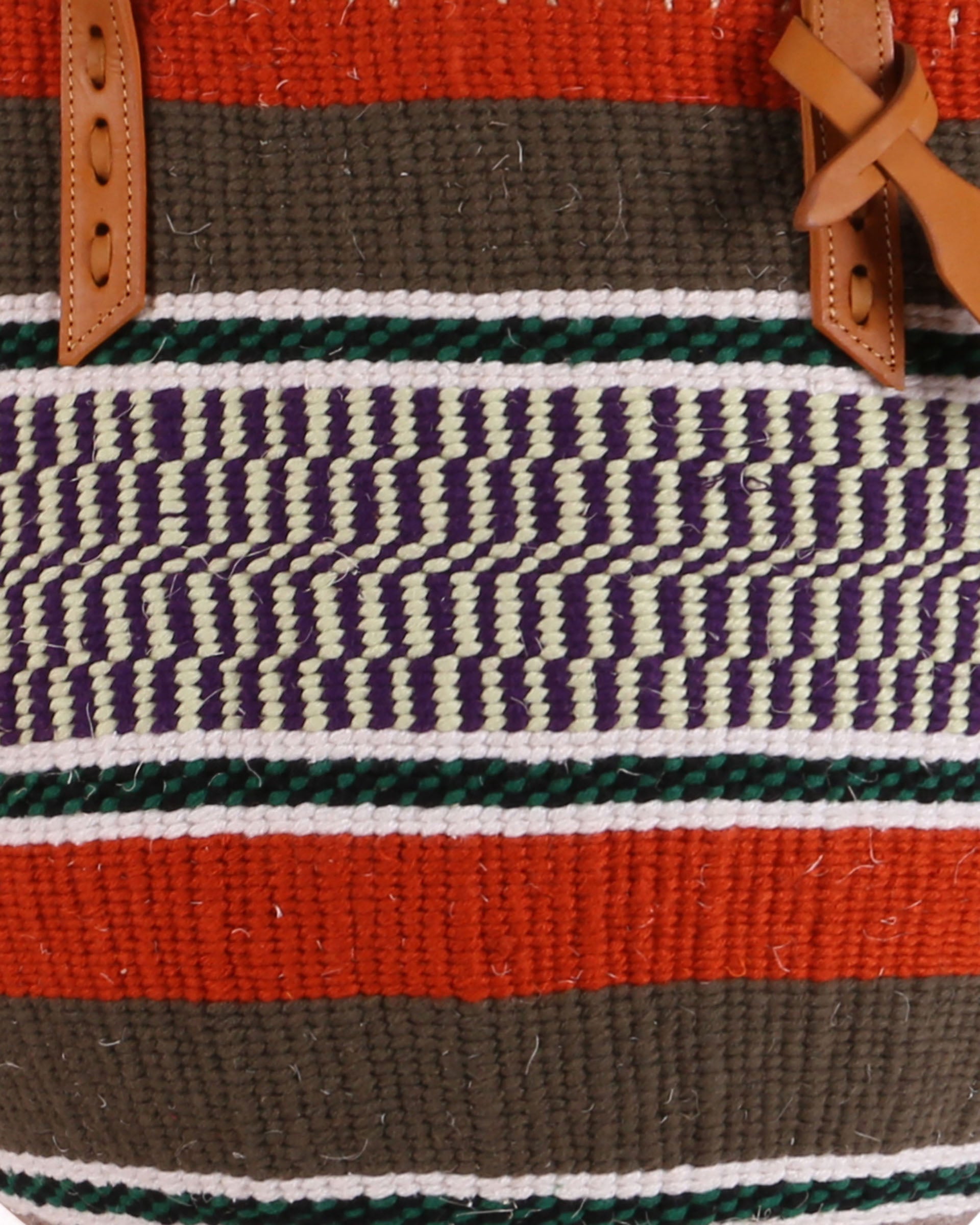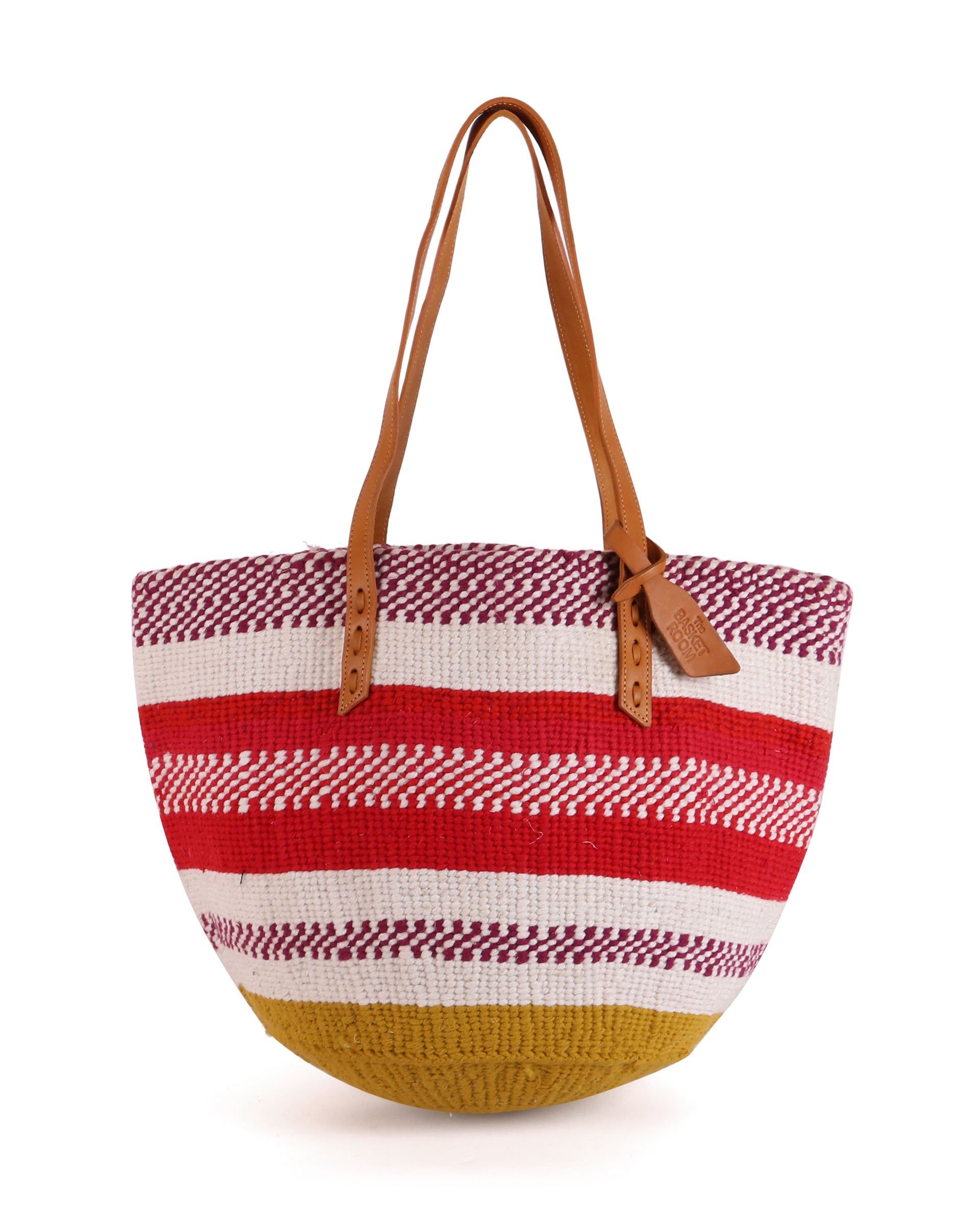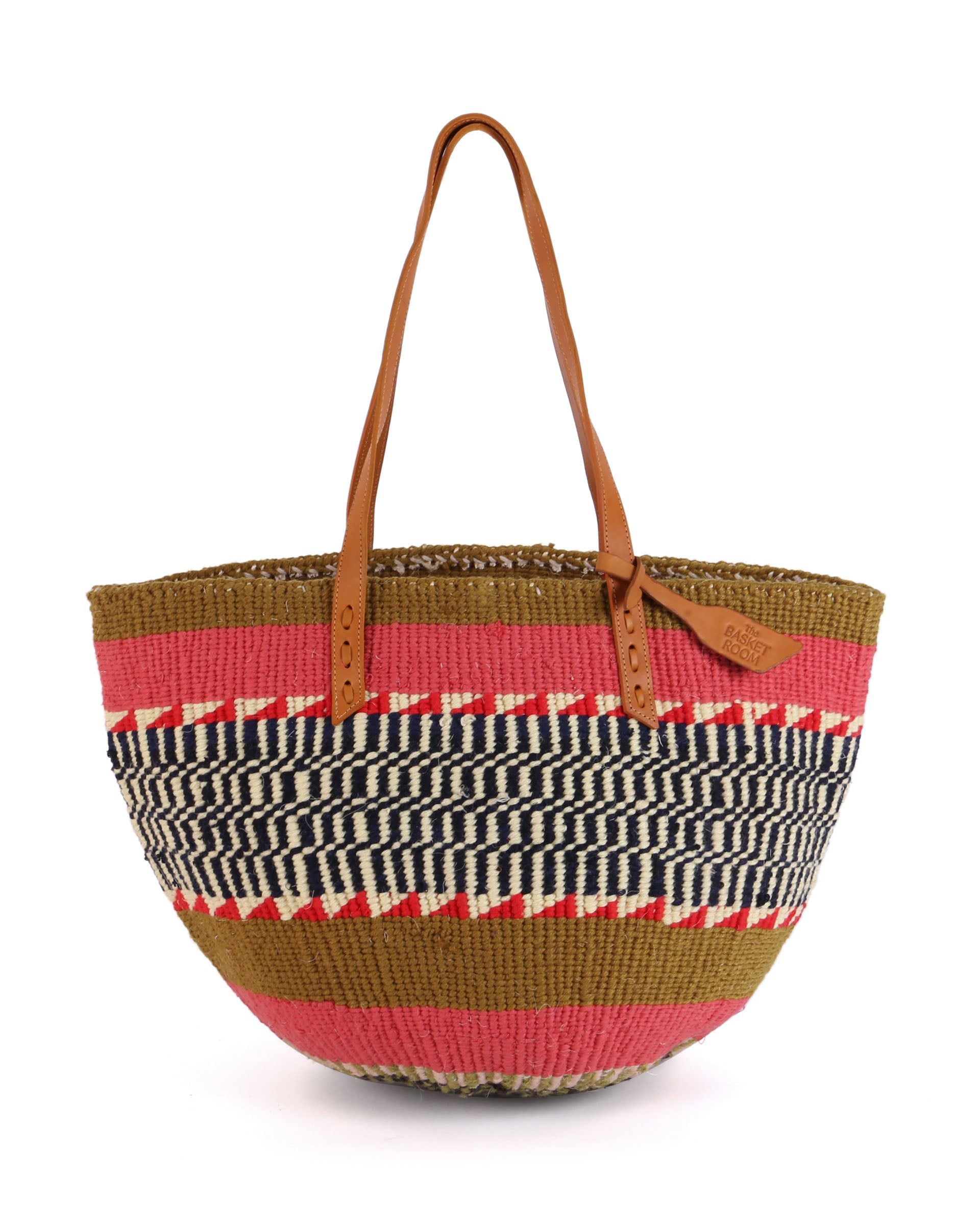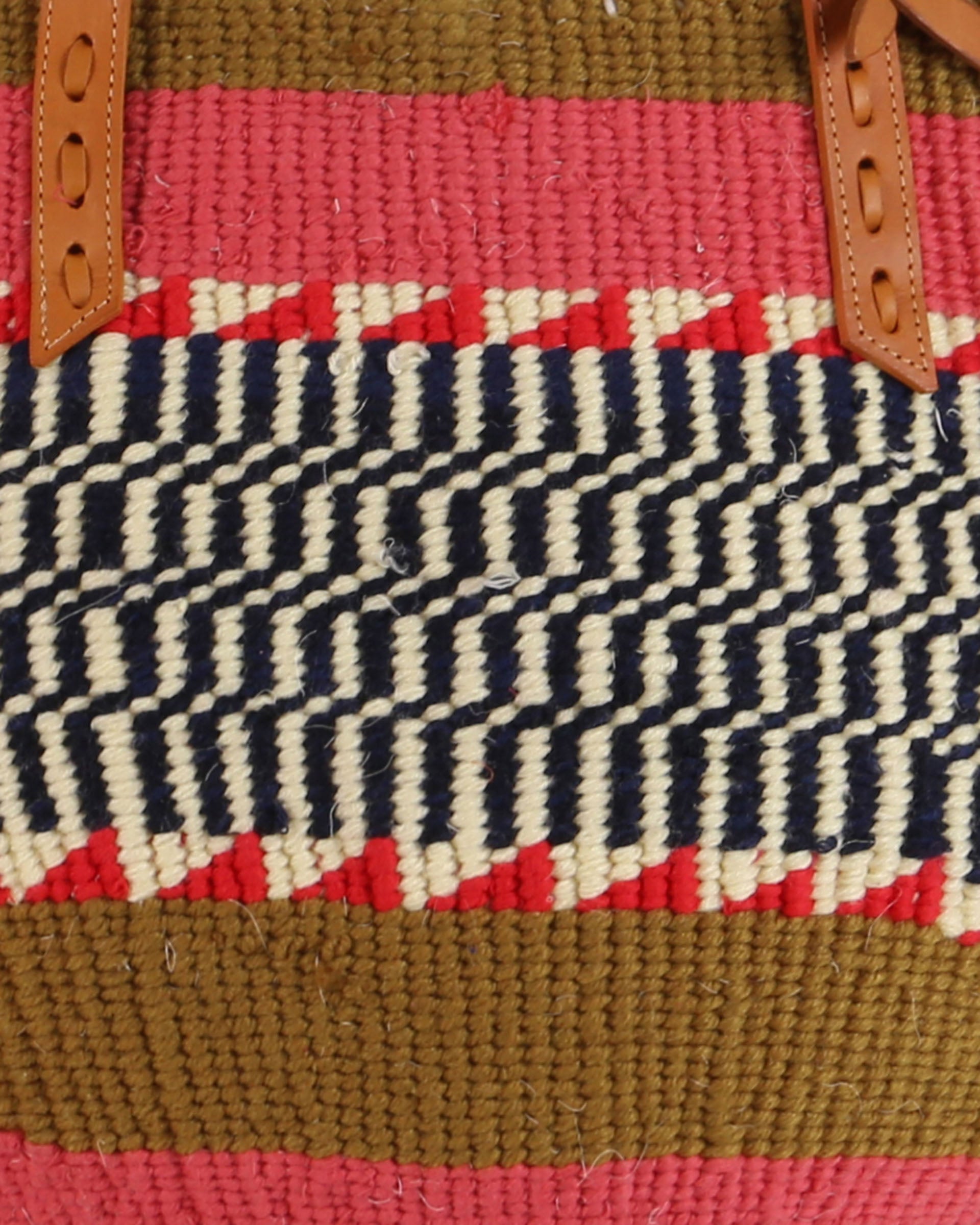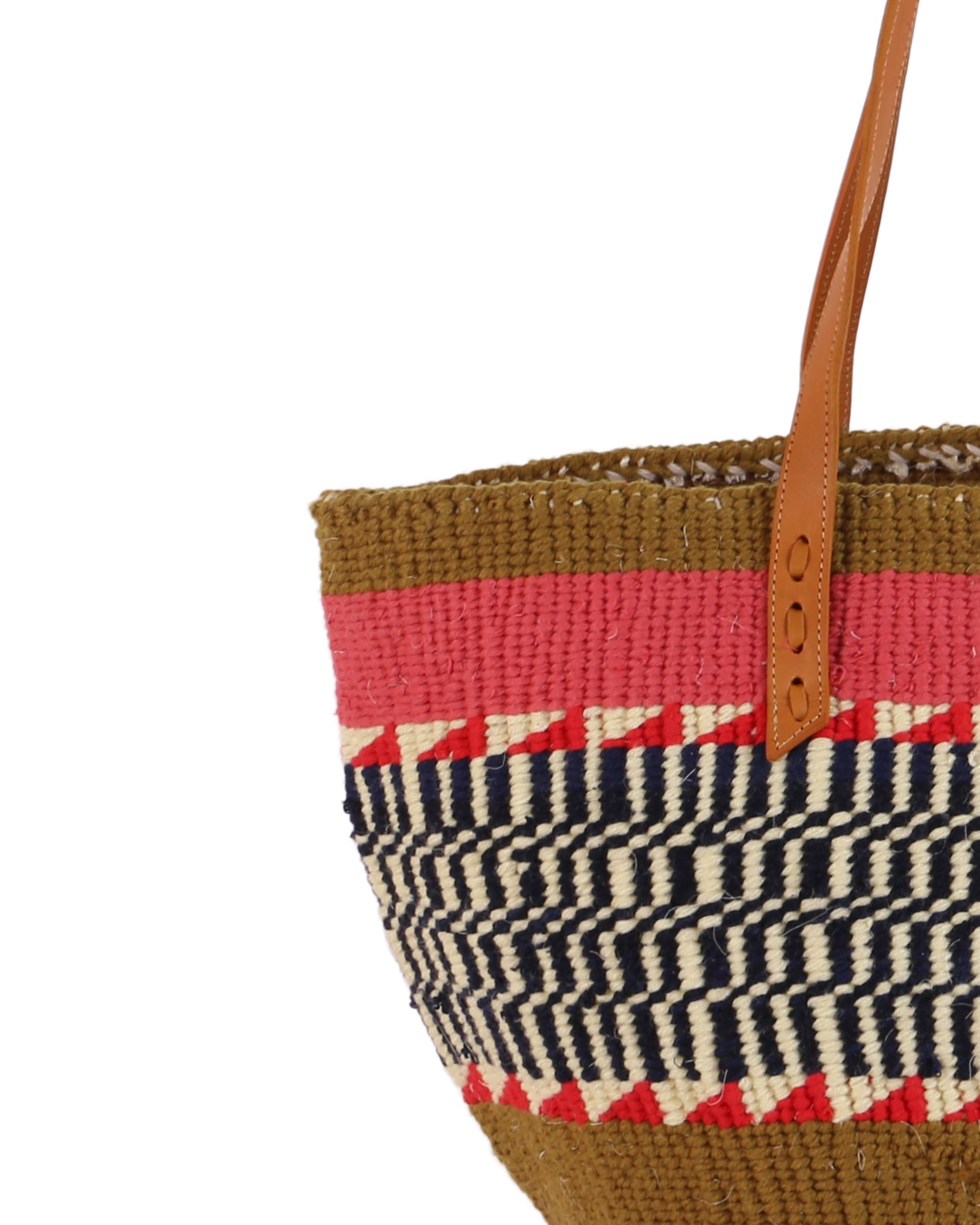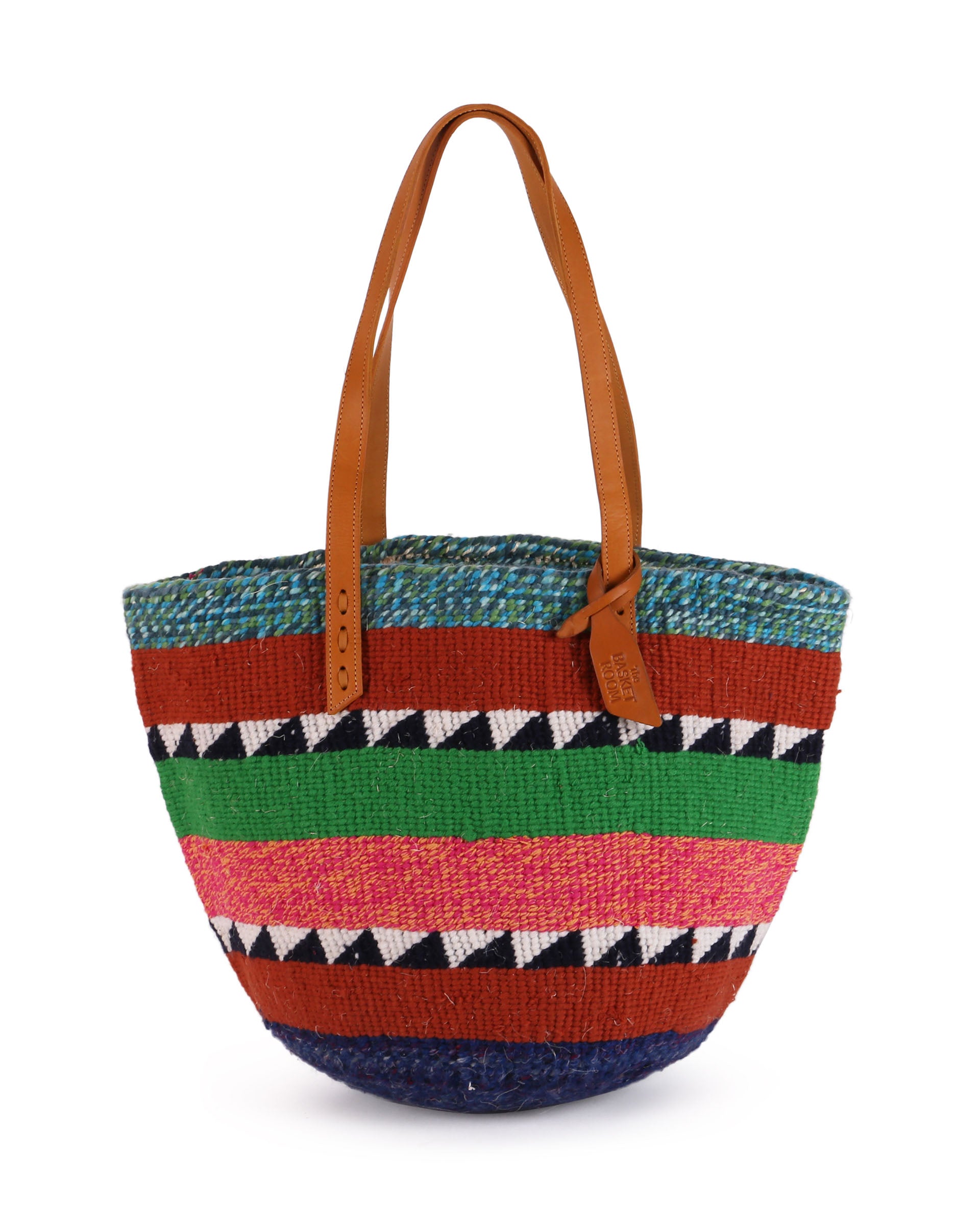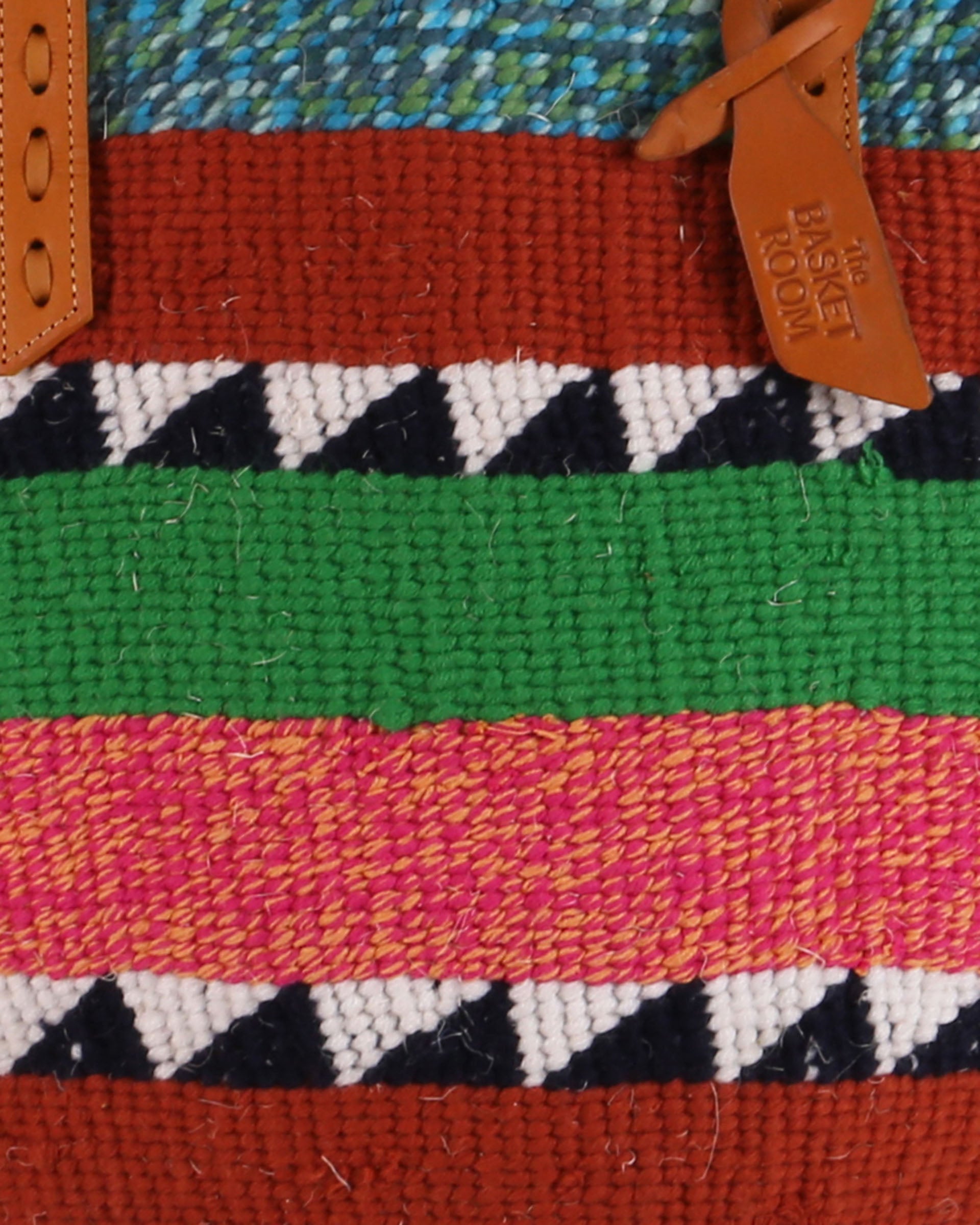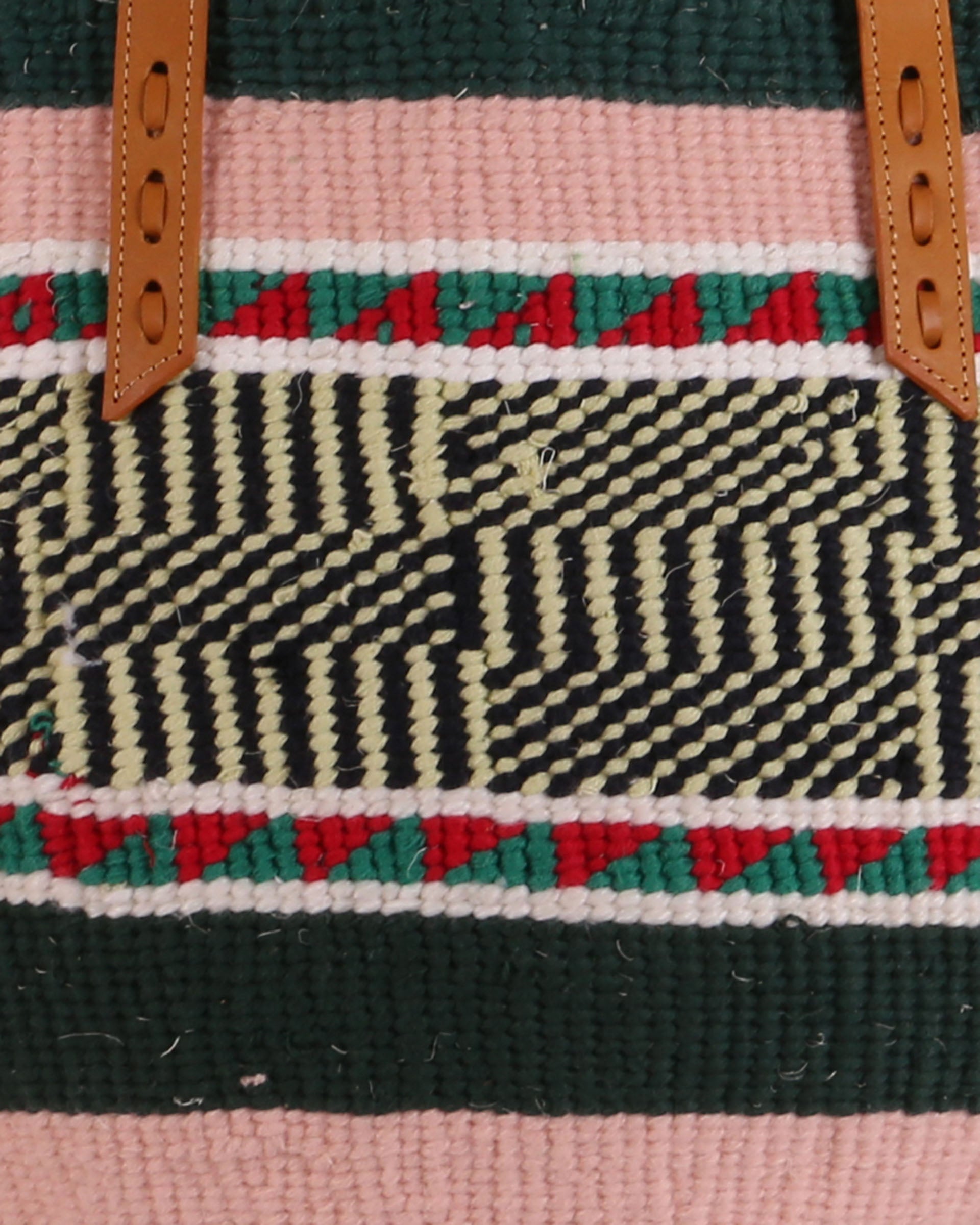“Fashion respects culture and heritage. It fosters, celebrates and rewards skills and craftsmanship. It recognises creativity as its strongest asset. Fashion never appropriates without giving due credit or steals without permission. Fashion honours the artisan.”
- Fashion Revolution Manifesto 2022

Jane and Mercy hand stitch leather straps to KIFALME woven totes

Jane and Mercy hand stitch leather straps to KIFALME woven totes
We’re stridently supporting Fashion Revolution this week and always: joining brands all over the world to reimagine a just and equitable fashion system for people and the planet. For us, honouring the artisan lies at the heart of all we do.
A story we’ve been meaning to tell for a while is one about the leatherwork that finishes every woven basket bag and tote, and the many hours of work – the layers of design and traditional craftwork - that go into each piece.


The weavers who make our Totes, Shoppers and Laundry Baskets
The journey of a basket bag from maker to buyer is anything but fast. From growing, harvesting, stripping and twining sisal to sourcing second-hand jumpers (and their colourful yarns) from open air clothes markets - and that's before the wool or sisal dyeing process, and the weaving itself!

Weaving is a sociable craft, enabling women to work flexibly and around childcare. Spot the little one!
So whilst Fashion Revolution’s rally cry is against mass-production and overconsumption of clothes and fashion accessories, our woven basket bags are the very antithesis of this toxic cycle:
All our woven basket bags:
Are sourced from sustainable, local materials. Our Nifty Knit totes use yarns repurposed from second hand woolly jumpers, and sisal is an indigenous raw material whose production and harvest creates work for rural craftspeople.
Protect and honour age-old traditional crafts for future generations. Basket weaving is a craft as old as mankind, and a skill passed along the female bloodline in African families. In bringing rural weaving communities access to the global fashion and retail markets, your purchases are securing careers in sustainable craft for future generations.
Empower women to work in safety, with flexibility and earn fair and sustainable wages.
Are based on classic designs and patterns. These are woven accessories for all seasons, designed and made to be loved for many years to come.

Our KIFALME woven tote creates work for sisal farmers, weavers (who also prepare and dye the sisal) and leather workers.

Our KIFALME woven tote creates work for sisal farmers, weavers (who also prepare and dye the sisal) and leather workers.
Not a week goes by that we don’t share images and stories about the weavers who produce our baskets in Africa, but this week - Fashion Revolution week - we will be shining that light even brighter.
The more fashion brands tell the stories behind their products, the more apparent and (justifiably) suspicious it will seem when other brands cannot match these standards of transparency. So this is our plea to you, readers, to ask brands exactly WHO made your garments. Tweet them, @ them, DM them – hold them accountable.

Joyce, Ruth and Kaindi weaving the bags for our 2016 collaboration with Jigsaw
In January of this year, Wholesale and Office Manager Anna took her first work trip to Kenya, to meet with several of the chairladies and weaving groups we partner with. On day five, Anna and Camilla visited the Nairobi leatherworks where all of the leather straps and handles are made and sewn onto our woven basket bags, shoppers and totes.

Camilla and Anna with Isabell at her Nairobi leather workshop, January 2022
It is here that our small leather tabs are cut, embossed with our logo and stitched into our baskets, too. These leatherworkers are the last hands to finish all our woven bags before they are counted, checked for quality control and packed into the container bound for our HQ in Chipping Norton, UK.
It is here that our small leather tabs are cut, embossed with our logo and stitched into our baskets, too. These leatherworkers are the last hands to finish all our woven bags before they are counted, checked for quality control and packed into the container bound for our HQ in Chipping Norton, UK.

Each leather tab is hand cut and embossed
In regularly visiting and communicating with the weavers we trade with, we strengthen the powerful, essential connection between maker and buyer. Through working with small craft collectives and cooperatives - and sourcing all our materials locally - we’re championing sustainable crafts, and a sustainable business model.


Led by the inspiring and entrepreneurial Isabell, this leather workshop is a hub of creativity and community, and Isabell is devoted to bringing work and new skills to as many local people as she can.

Isabell
We have worked with Isabell for four years: she now oversees a portion of our global logistics whilst managing a team of artisans who carry out leatherwork, embroidery and quality control checks on the baskets. Today, all the Kenyan-made baskets we sell are couriered from their various rural locations to Isabell’s site before being shipped to us in the UK.

Jared, Nancy, Veronica & Wayne made your bags
We’ve written about the craftspeople who work here before; Mercy, Caroline, Jane, Veronica and John upskilled into embroidery last summer and now spend some of their time stitching shells, pineapples and watermelons onto our colourful embroidered basket collection. You can read about this collaboration here. Whilst there are fascinating stories to tell about every single leather worker - as is the case for every single weaver we work with - this time we are honouring an artisan named Mercy.
Isabell tells us, "Mercy is incredible! Hardworking, a team player, ready to learn and a great teacher to everyone. She is my right hand woman in the workshop!"
Alice chatted with team leader Mercy last week, who told us a little more about her work.

Mercy gives us a sneak preview of one of our SS22 totes

Mercy gives us a sneak preview of one of our SS22 totes
What is your job role within the leather workshop?
As a workshop manager, part of my role is coordinating with the other team members to see that projects are completed on time and on budget. I also handle stock taking, making sure different materials needed are always purchased and available for production.
Craft-wise, I also specializse in stitching, pattern making, cutting and occasionally beading and embroidery.

Mercy punching holes in the leather tabs using a hand tool

Mercy punching holes in the leather tabs using a hand tool
What do you do in a regular day at work?
When I walk into the workshop, I make sure the workshop is neat and tidied up, before the rest of the team arrives. A key part of safety in a workshop is making sure all the tools are the right place for quick retrieval when needed and also not to be a potential hazard especially in a workshop with sharp tools.
After this, I begin my production duties which typically can range from pattern making, stitching, cutting or coordinating for supplies to be restocked. Other additional duties include assisting other team members and coordinating shipments when projects are over and the products are being sent over to respective clients.


Mercy hand stitching leather straps to a tote bag
What involvement do you have with The Basket Room bags?
What involvement do you have with The Basket Room bags?
I work on preparation of handles and stitching them before passing the handles to other workers who attach the handles to the baskets. I also coordinate the entire production – receiving the baskets and overseeing the finishing.
Which bags are your favourite?
The tote bags
How long have you been a leather worker for?
4 years going to five.
Is your workplace a happy environment? Do you all support each other?
It is great. I have genuine and close relationship with my team mates and we are always stepping in for one another to assist when the workload is heavy.

Jane, Camilla, Isabell, Veronica and Mercy model their favourite woven totes

Jane, Camilla, Isabell, Veronica and Mercy model their favourite woven totes
What kinds of jobs do your friends do in Nairobi? What industries do they work in?
Some of my friends are self-employed with their own craft businesses and others are employed in non-craft (blue collar) jobs.
How long does it take to add the leather pieces to a basket to make it into a bag?
On average it can take a day to make twenty bags, if the preparation is completed before hand. However, for a more comfortable pace, I would say around ten bags, allowing for more thorough quality control, corrections if any and breaks between working sessions.

Mercy models a woven tote

Mercy models a woven tote
Fashion Revolution week takes place every year in the week coinciding with 24th April: the anniversary of the Rana Plaza disaster in Bangladesh. The Rana Plaza housed a number of garment factories, employing around 5,000 people. The people in this building were manufacturing clothing for many of the biggest global fashion brands. More than 1,100 people – mostly young women – died in the collapse and another 2,500 were injured, making it the fourth largest industrial disaster in history.
Join the revolution here.


